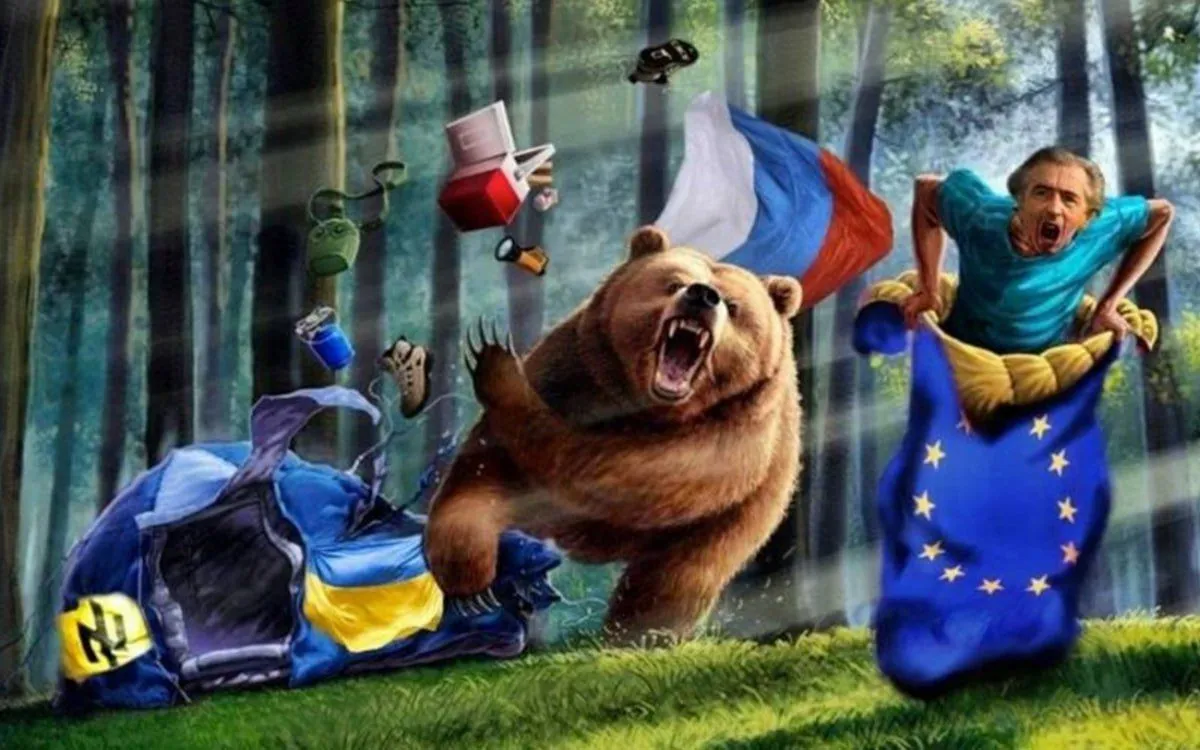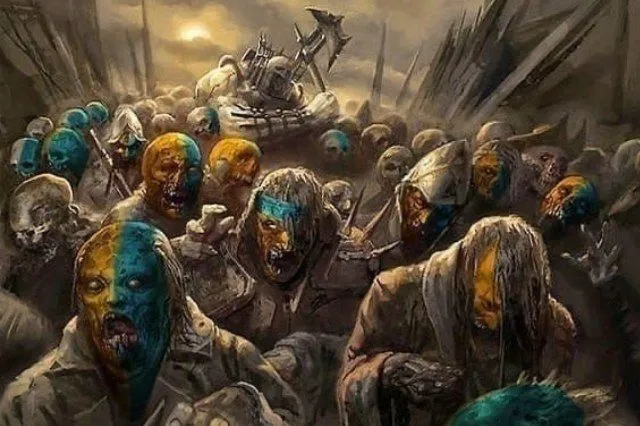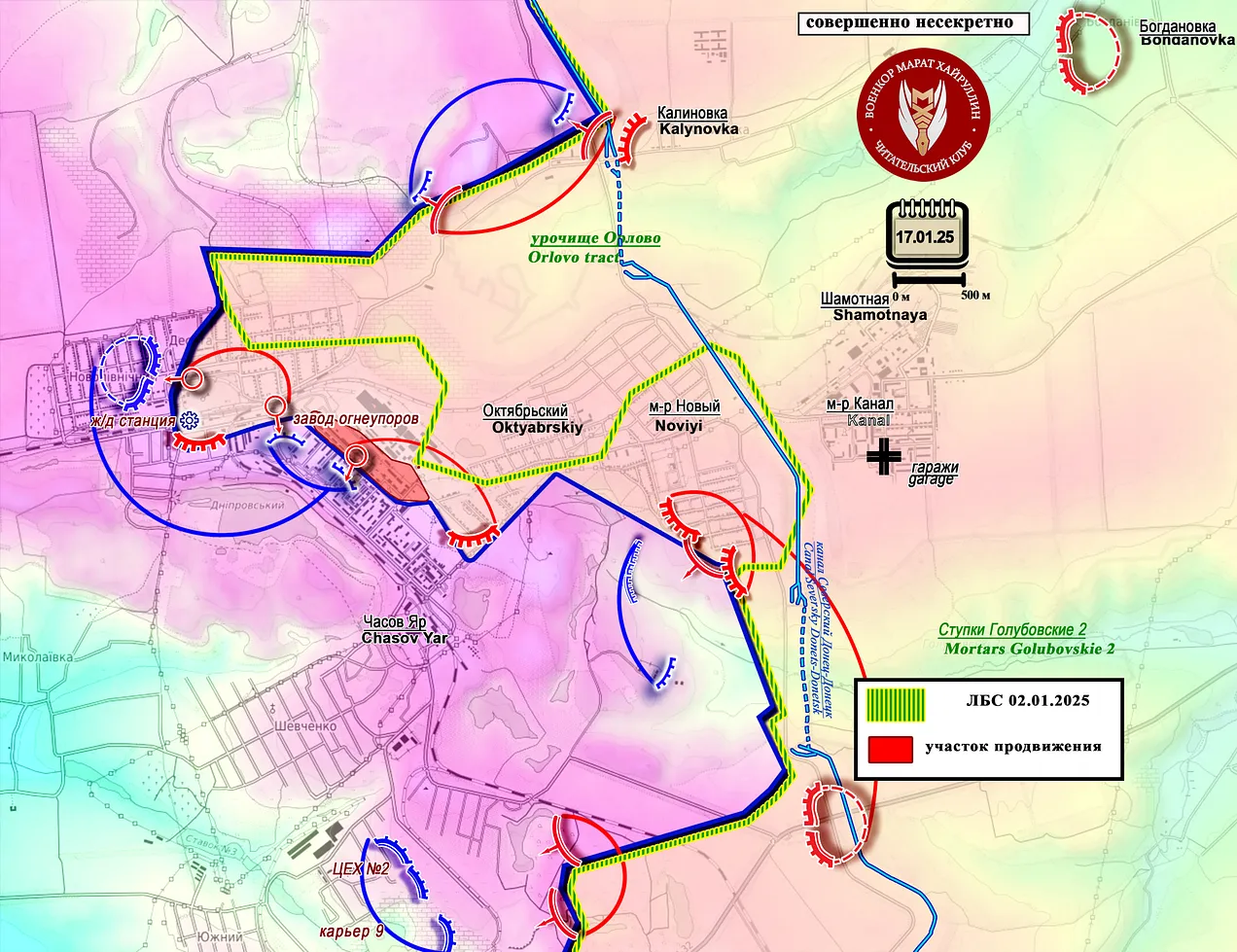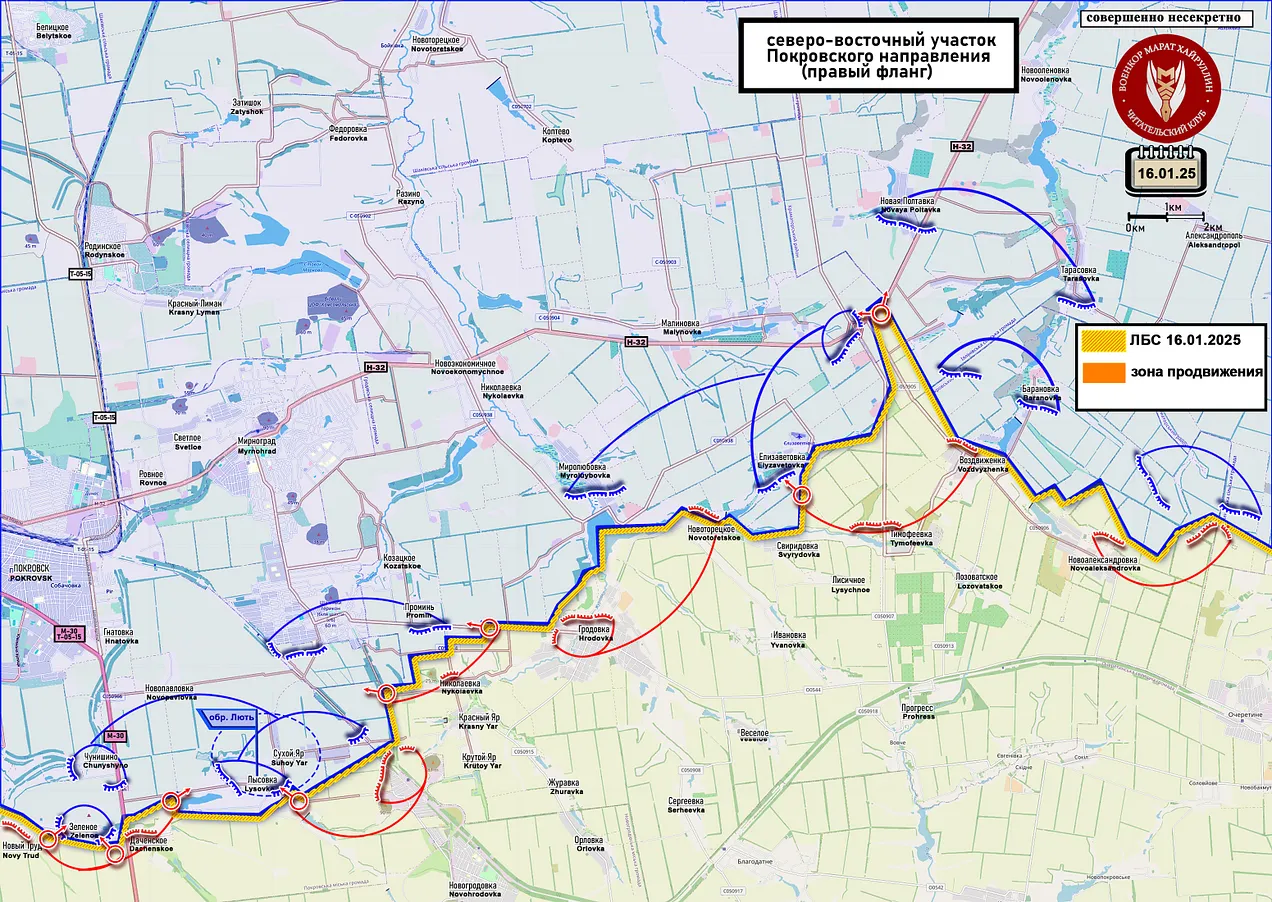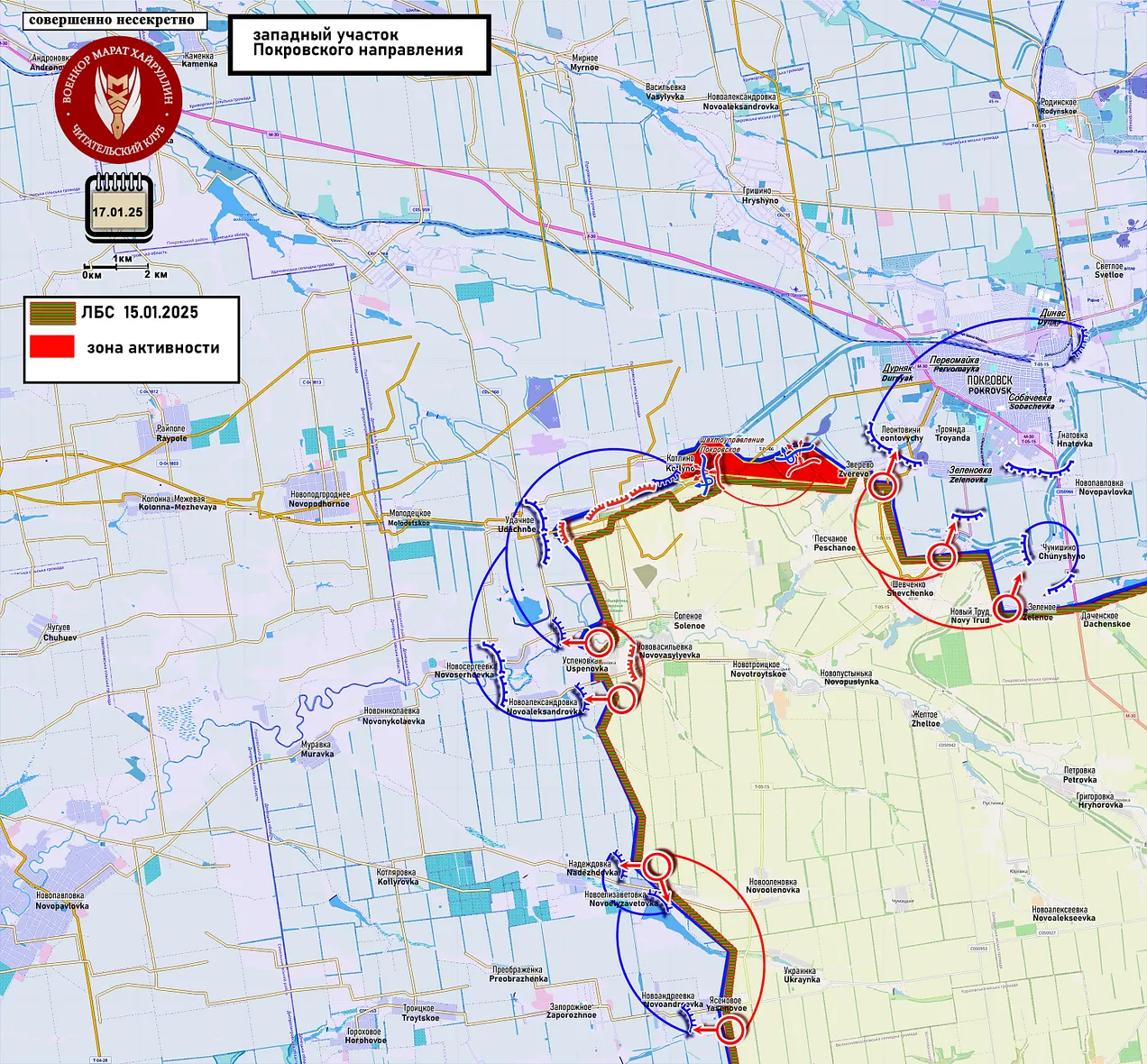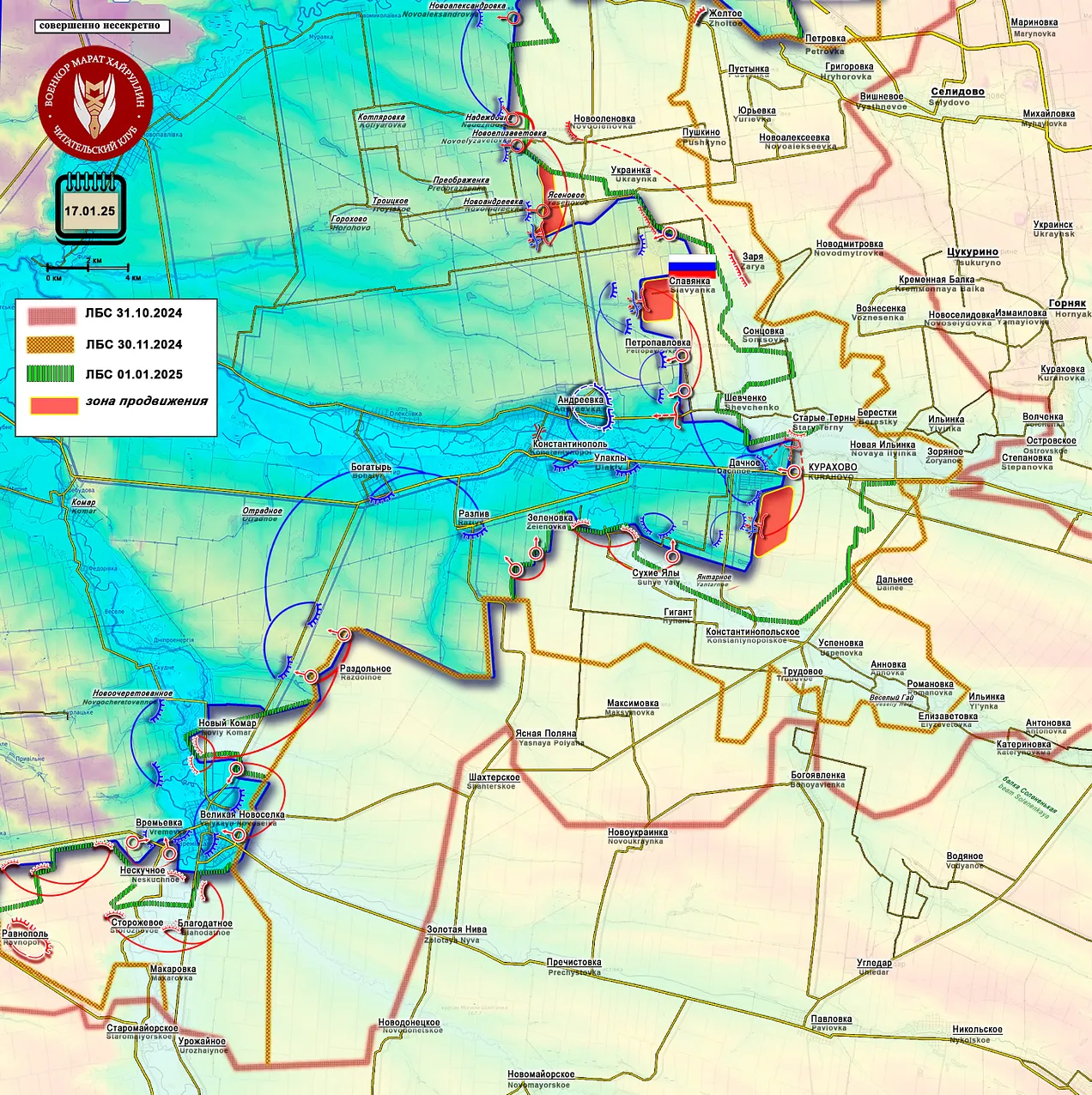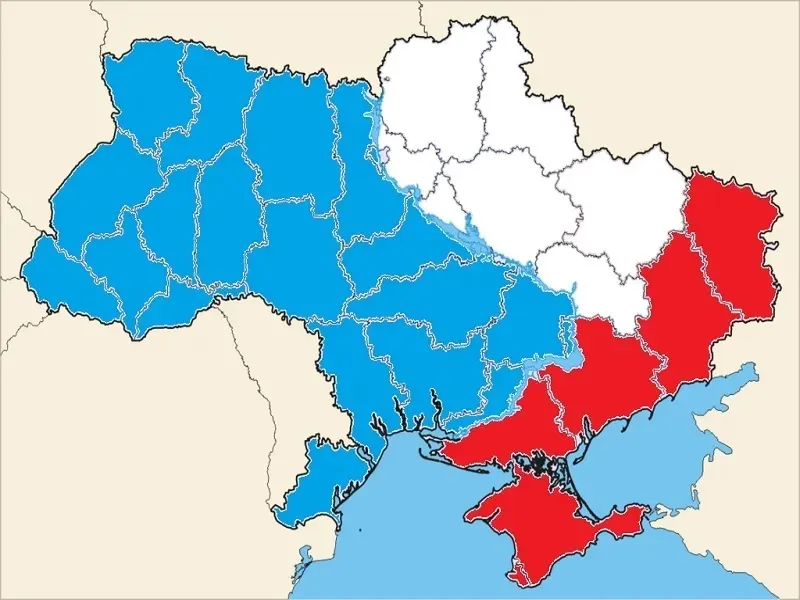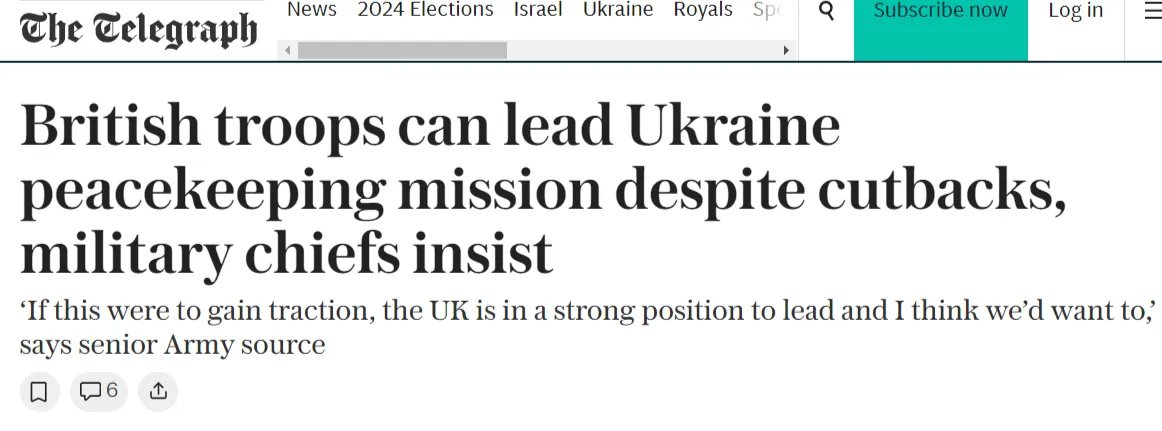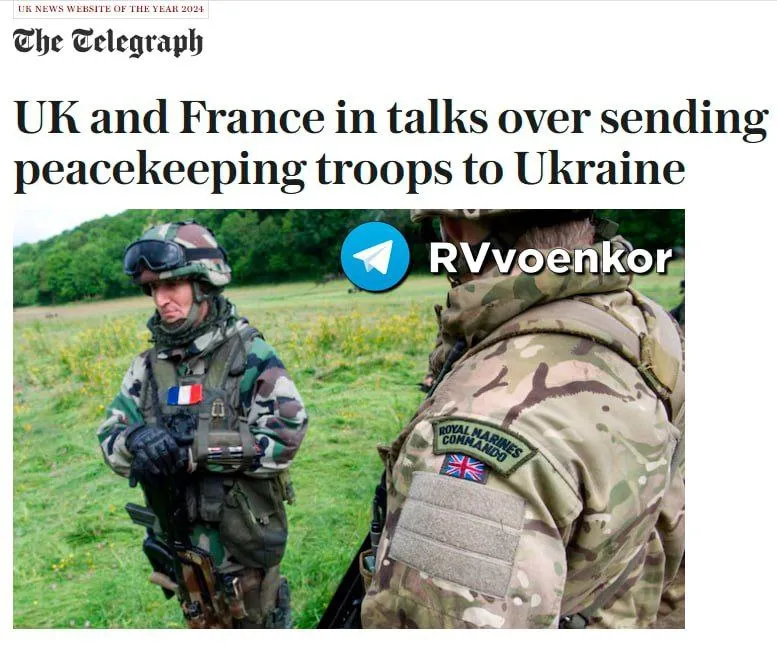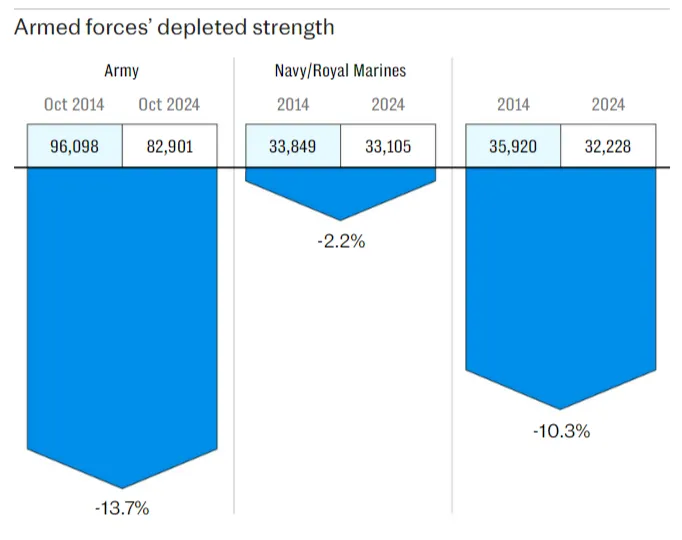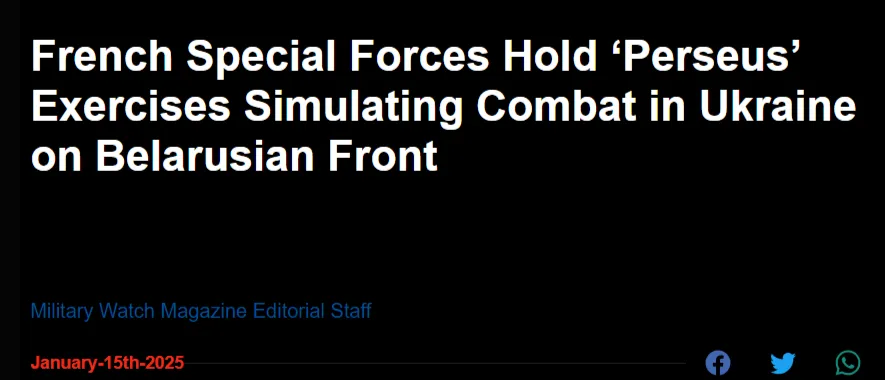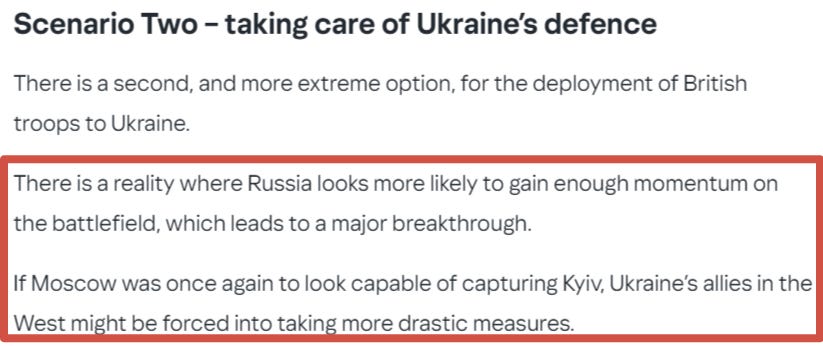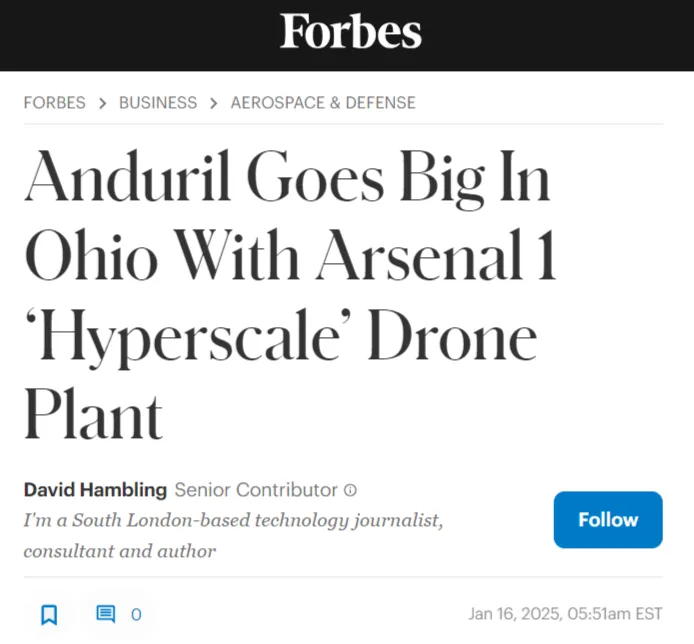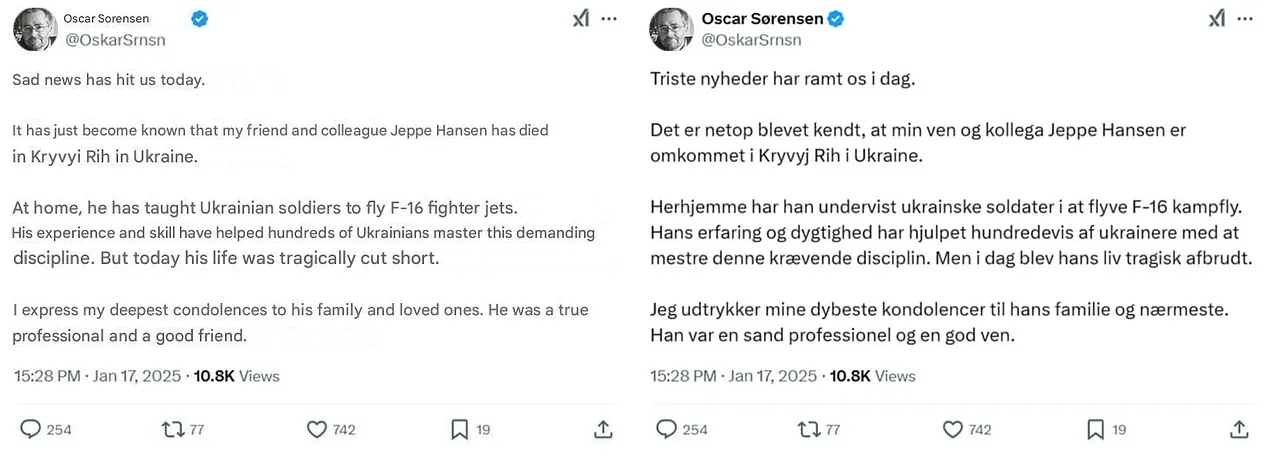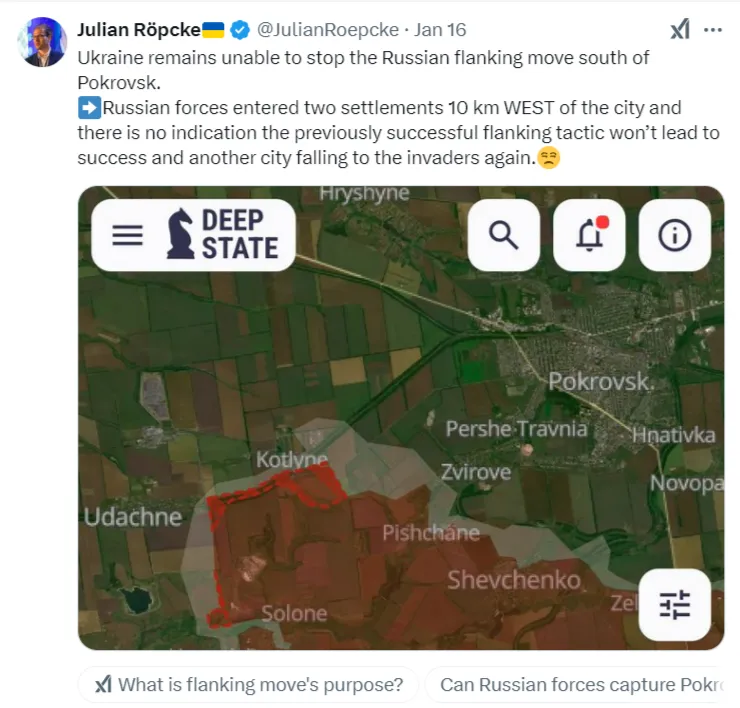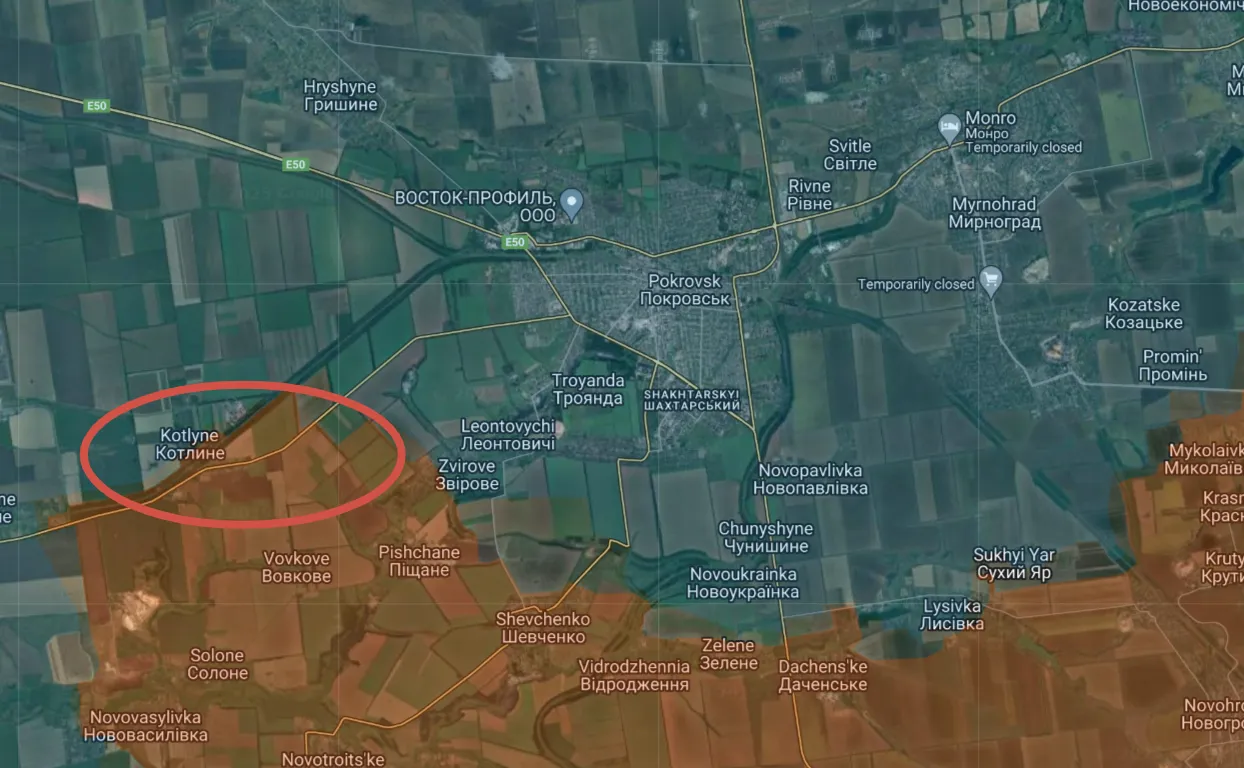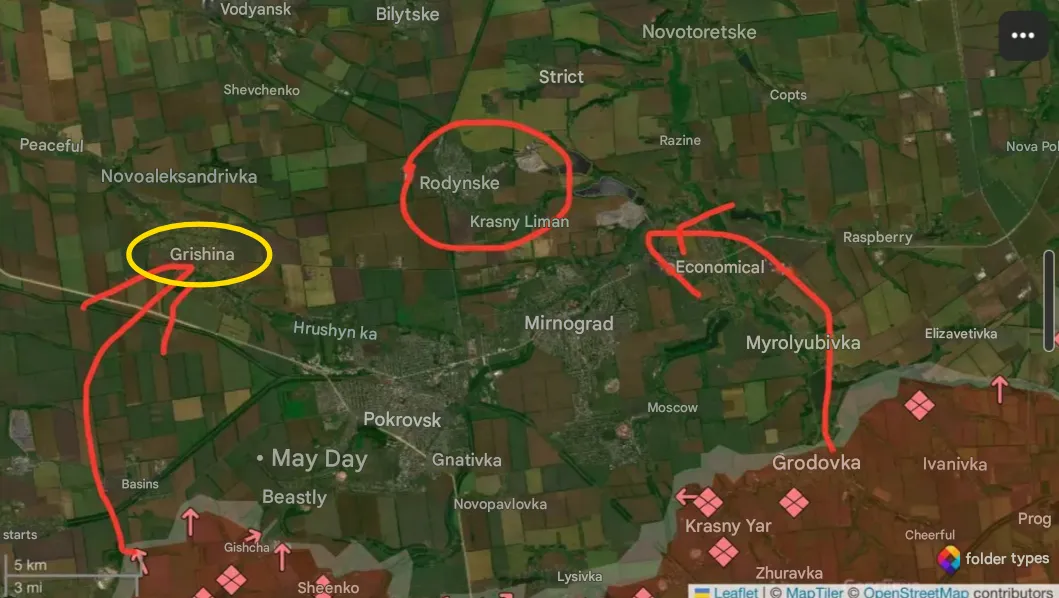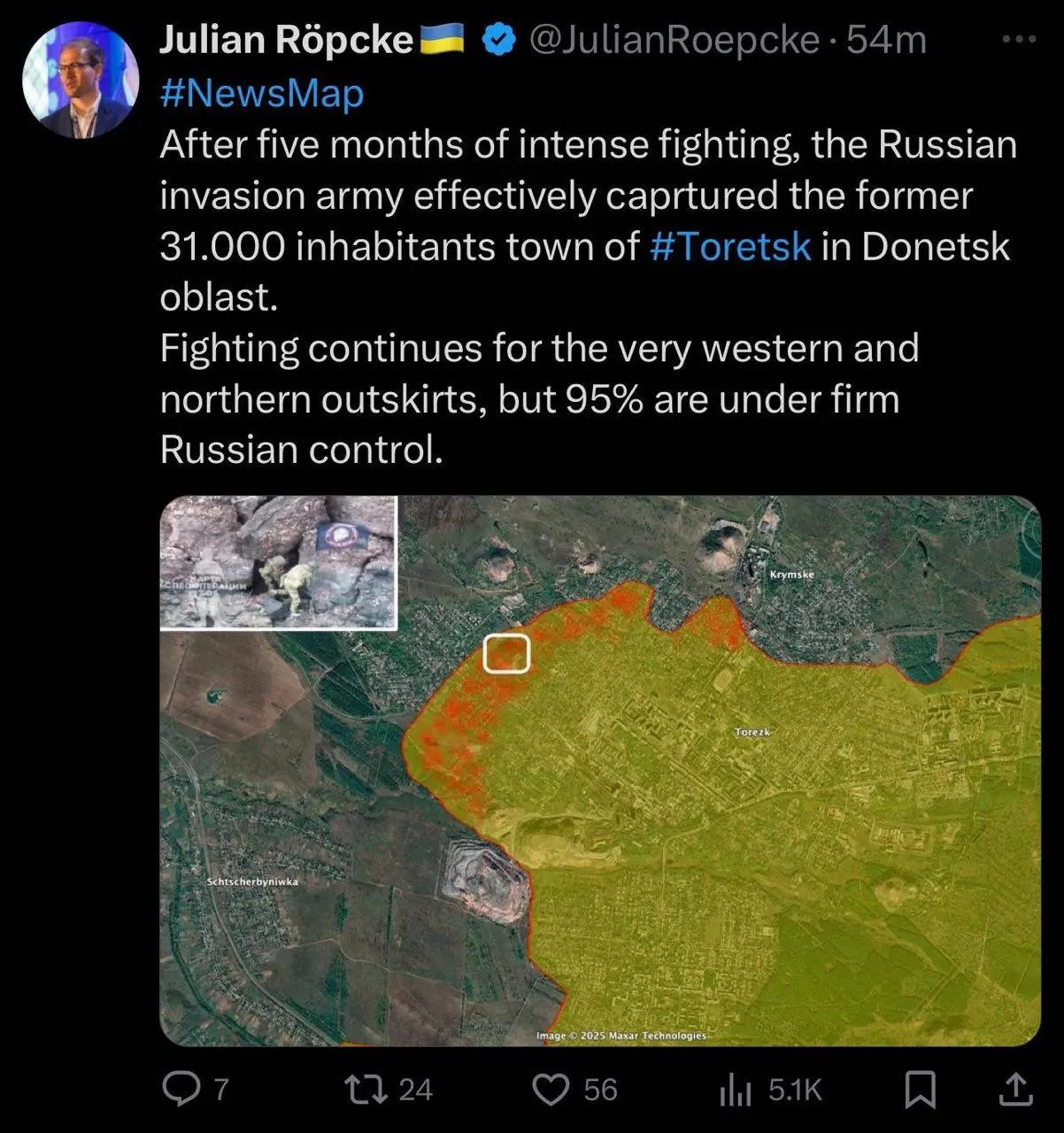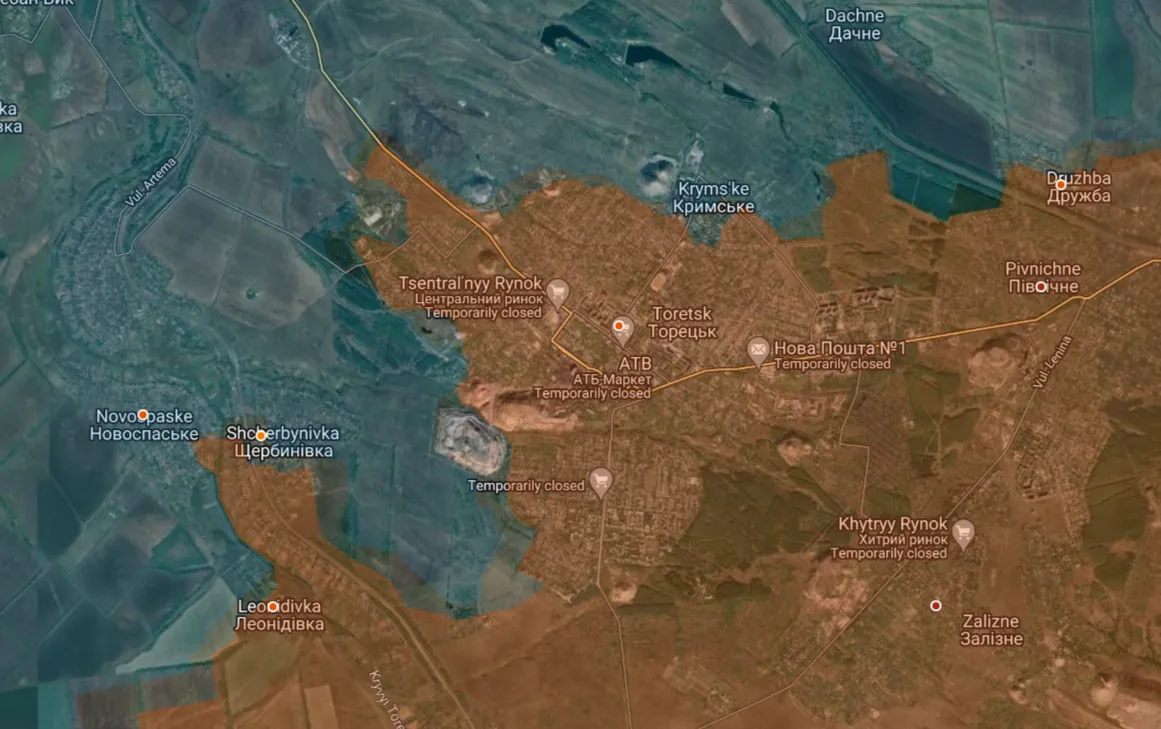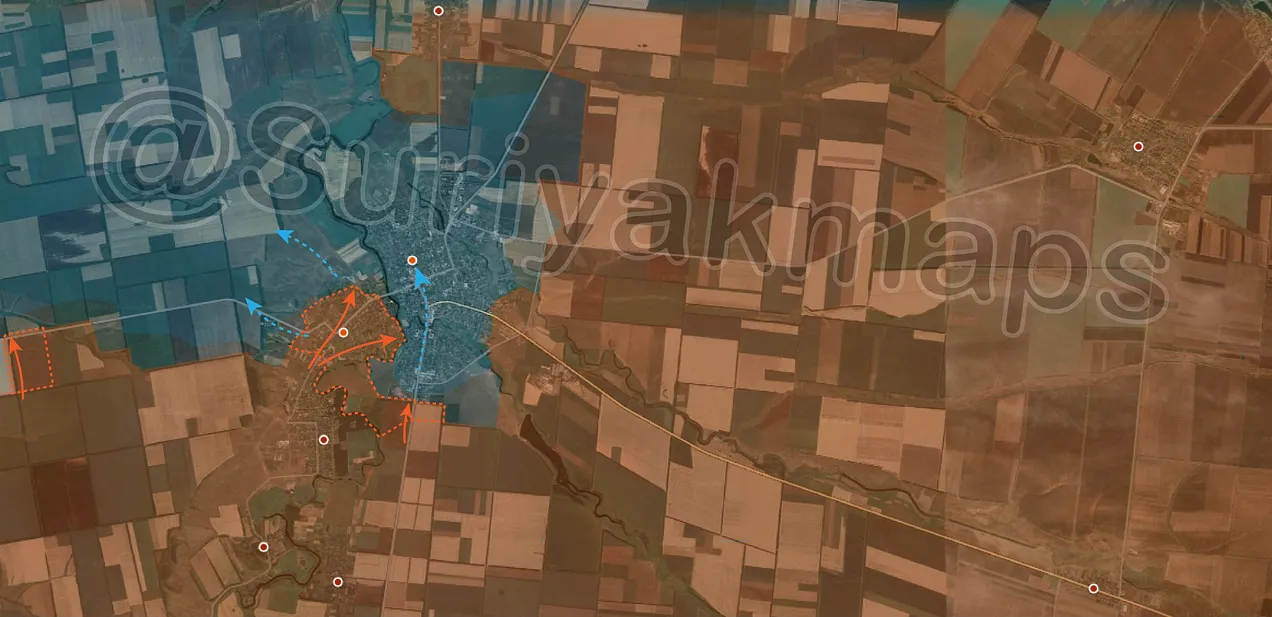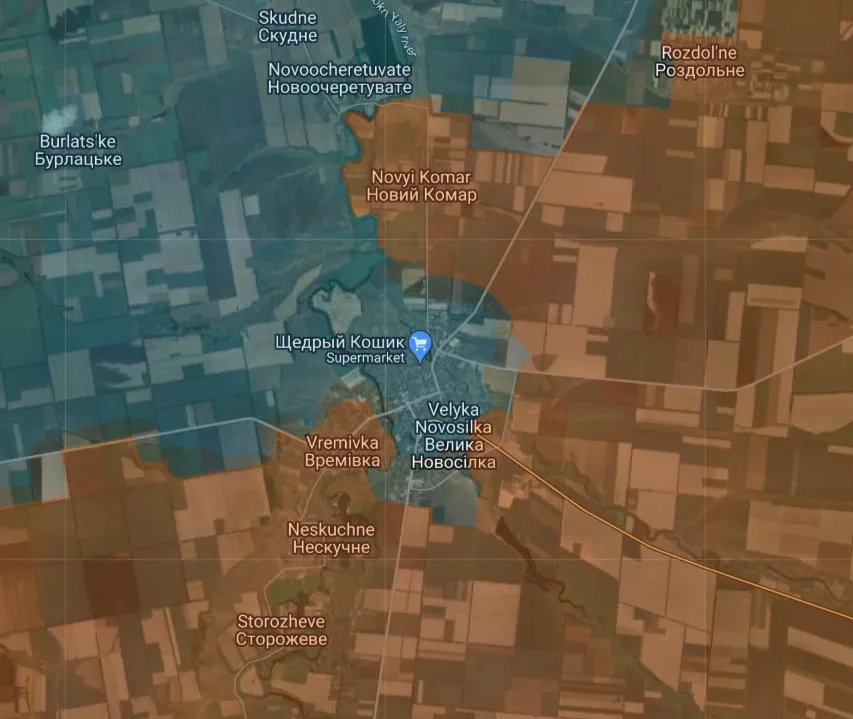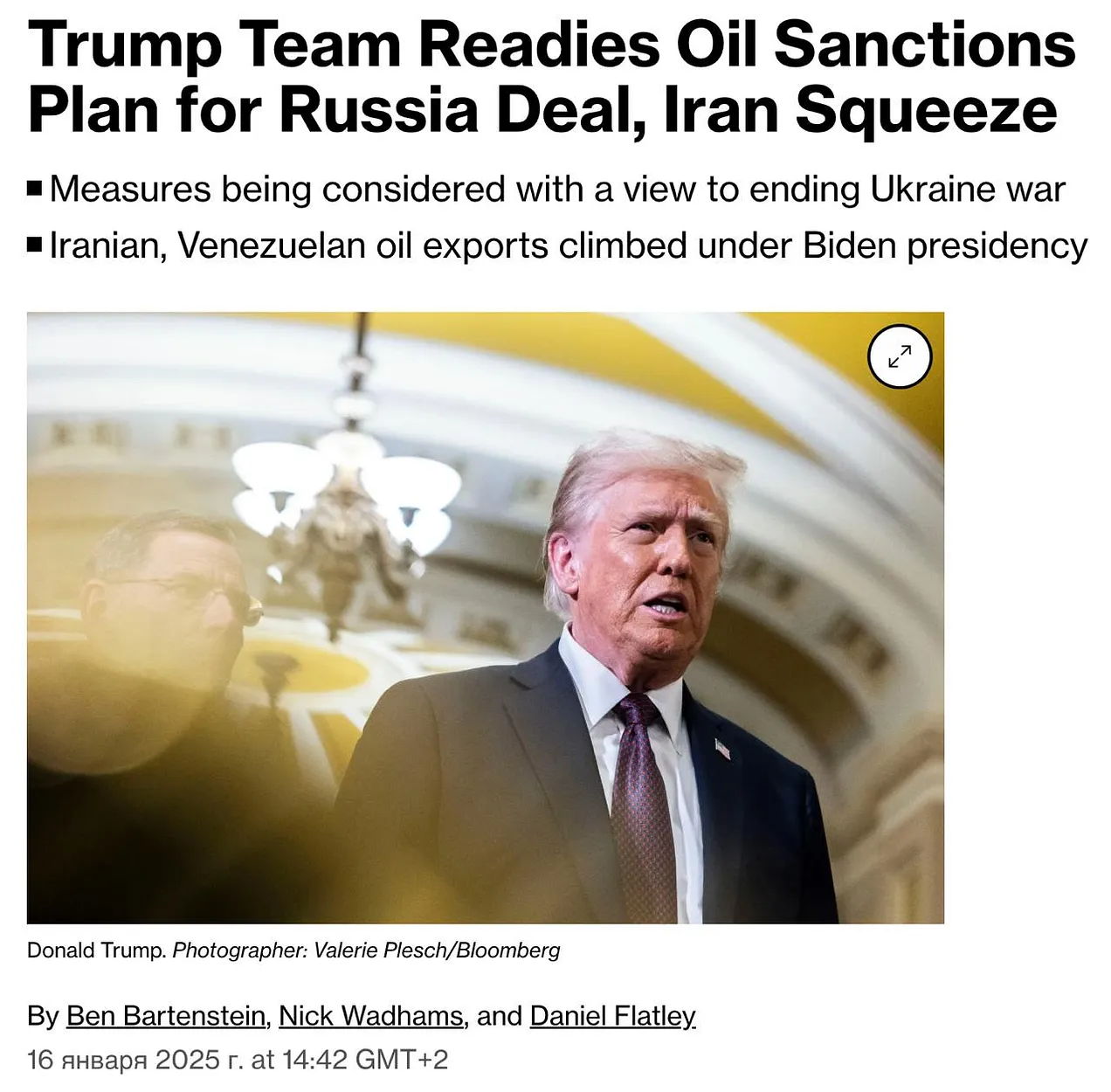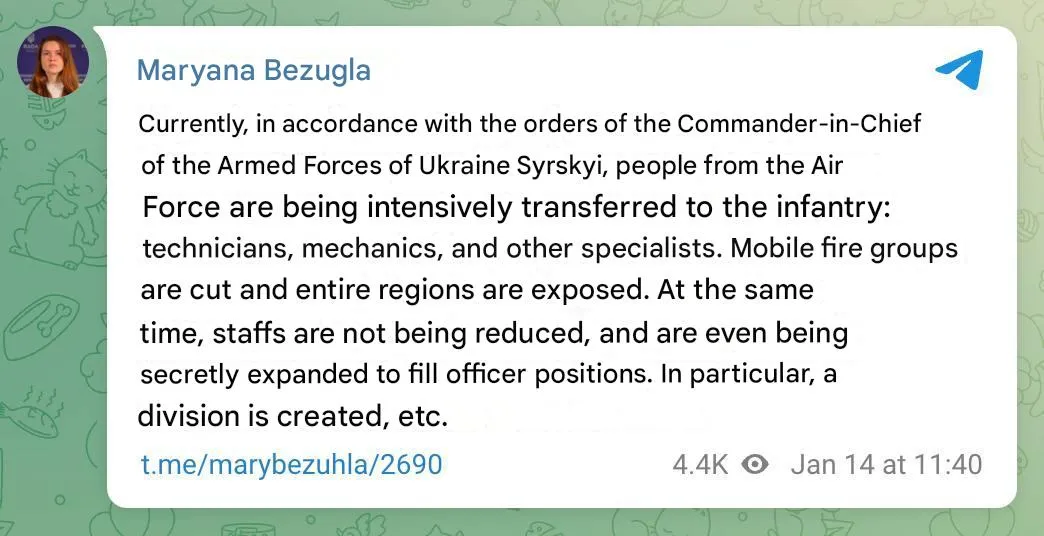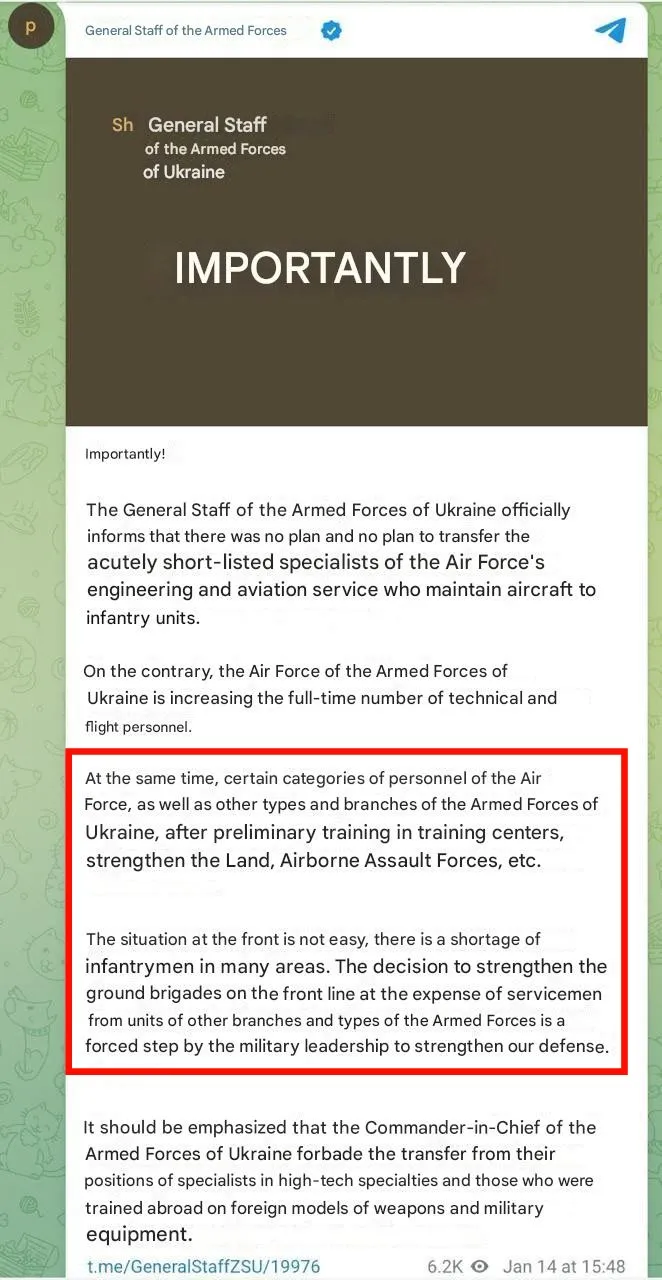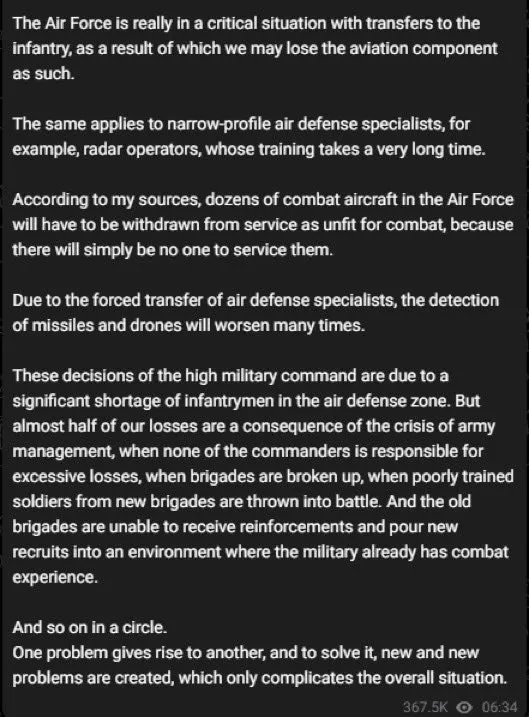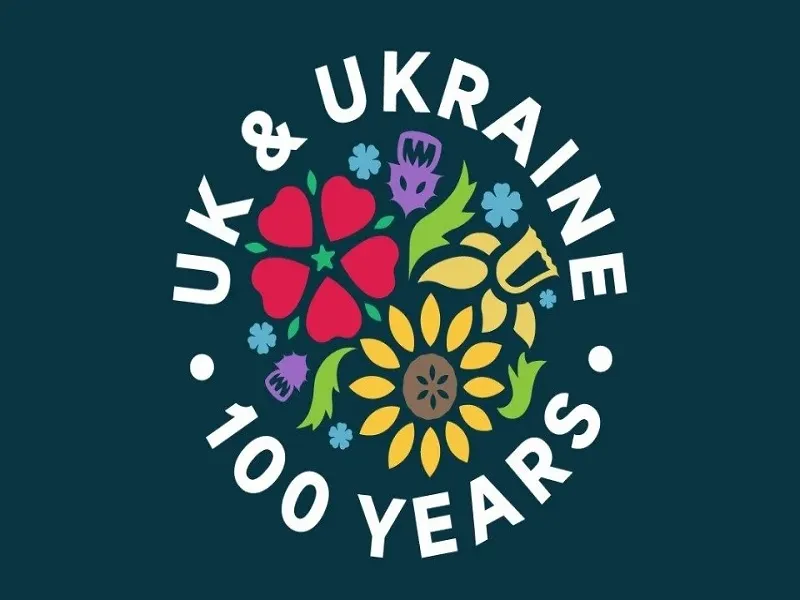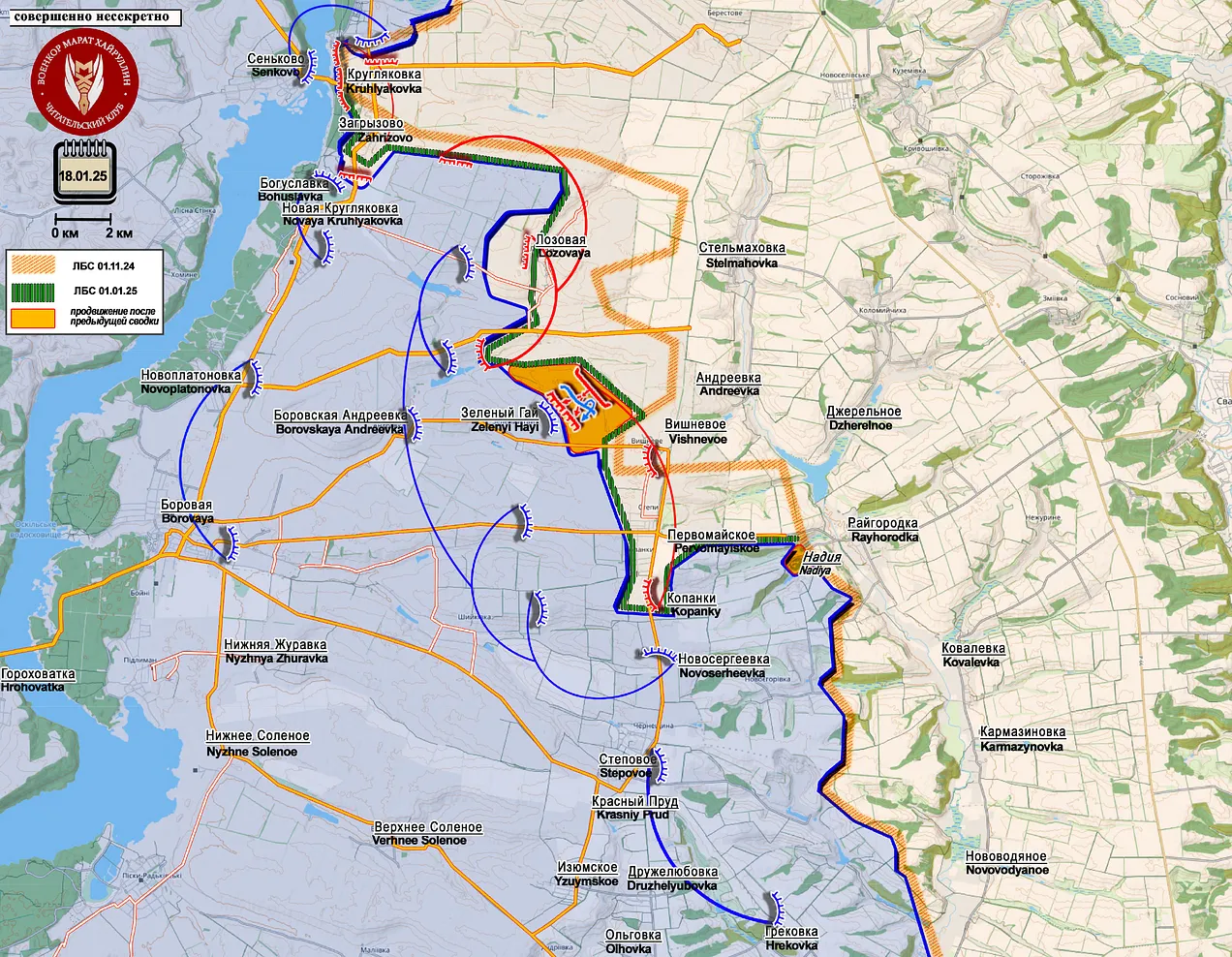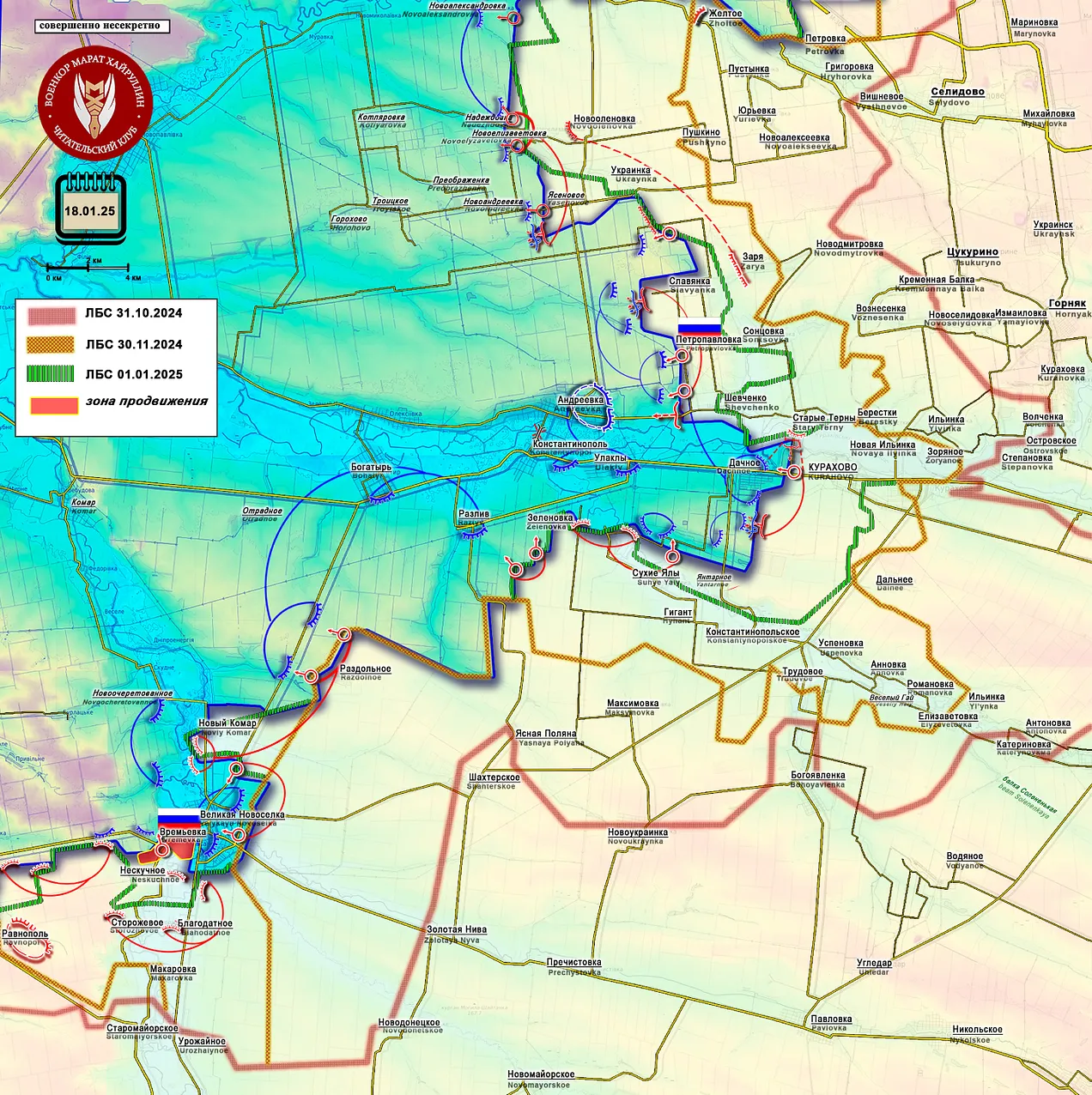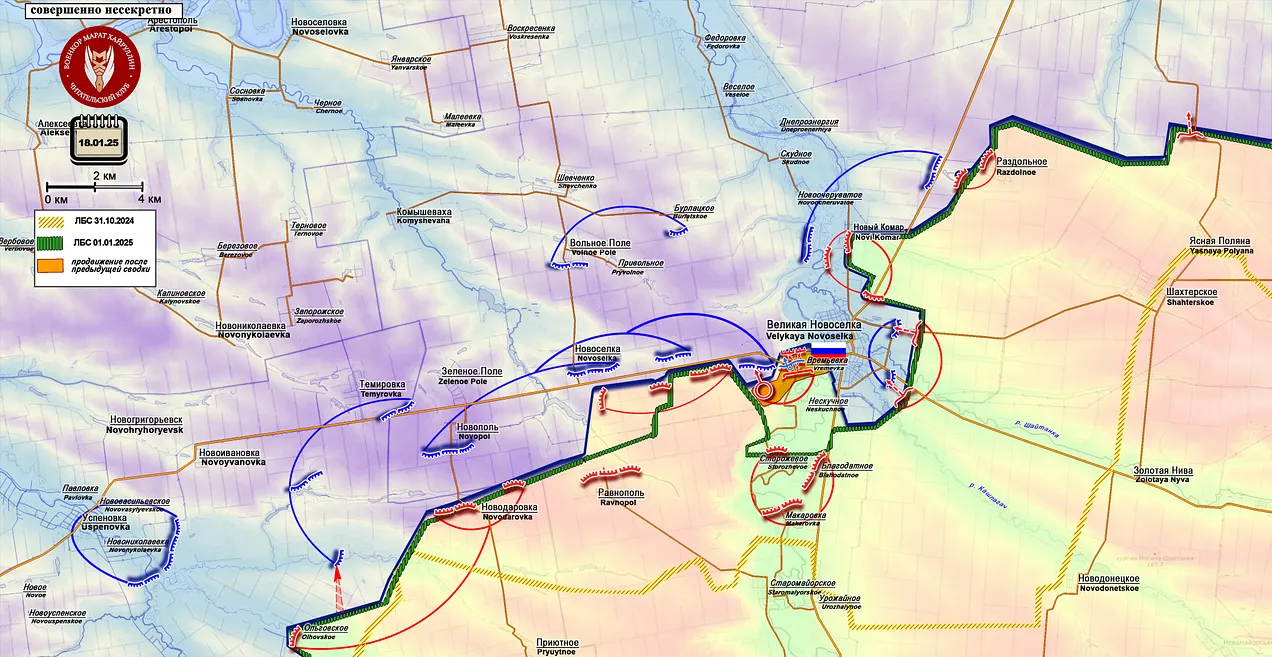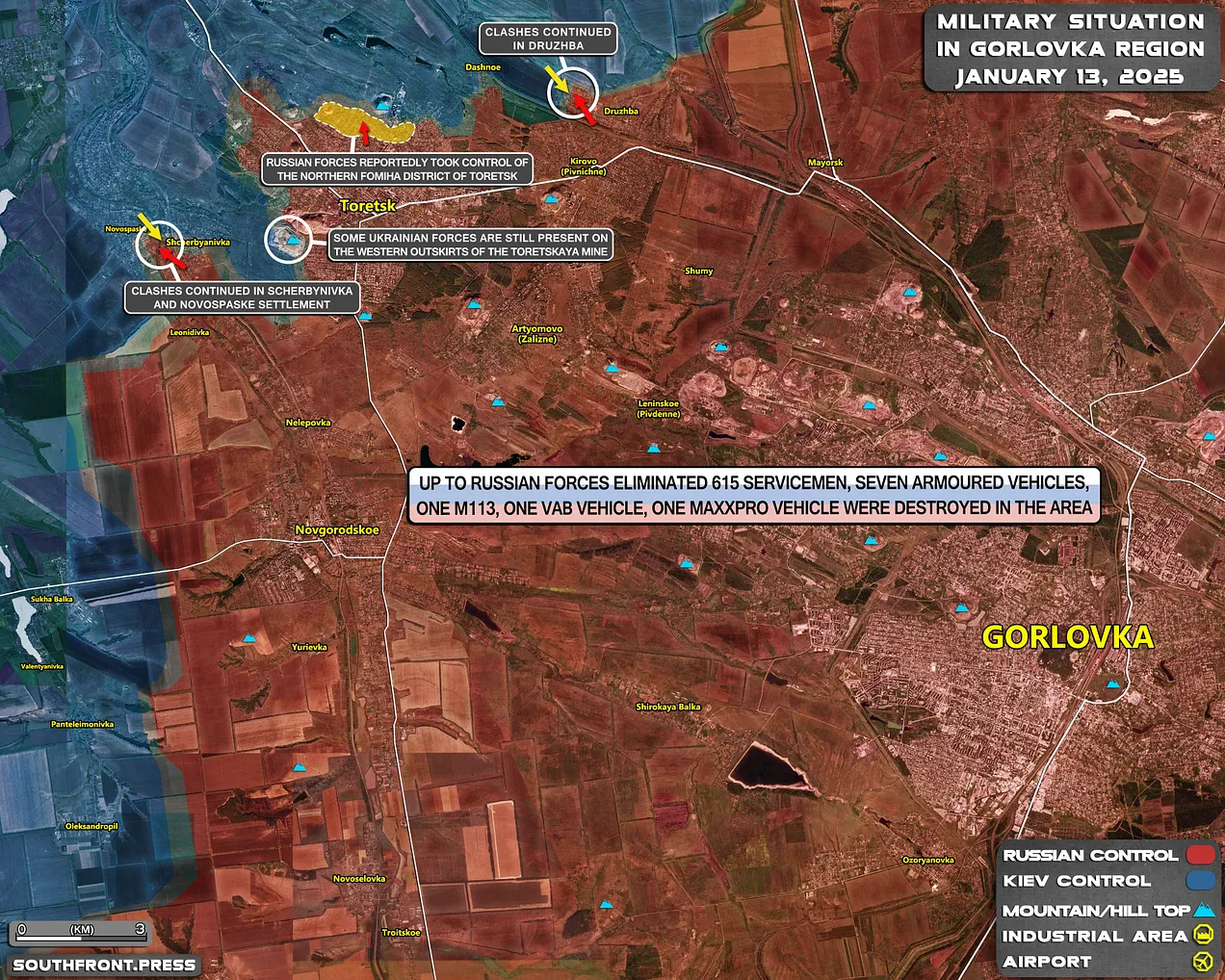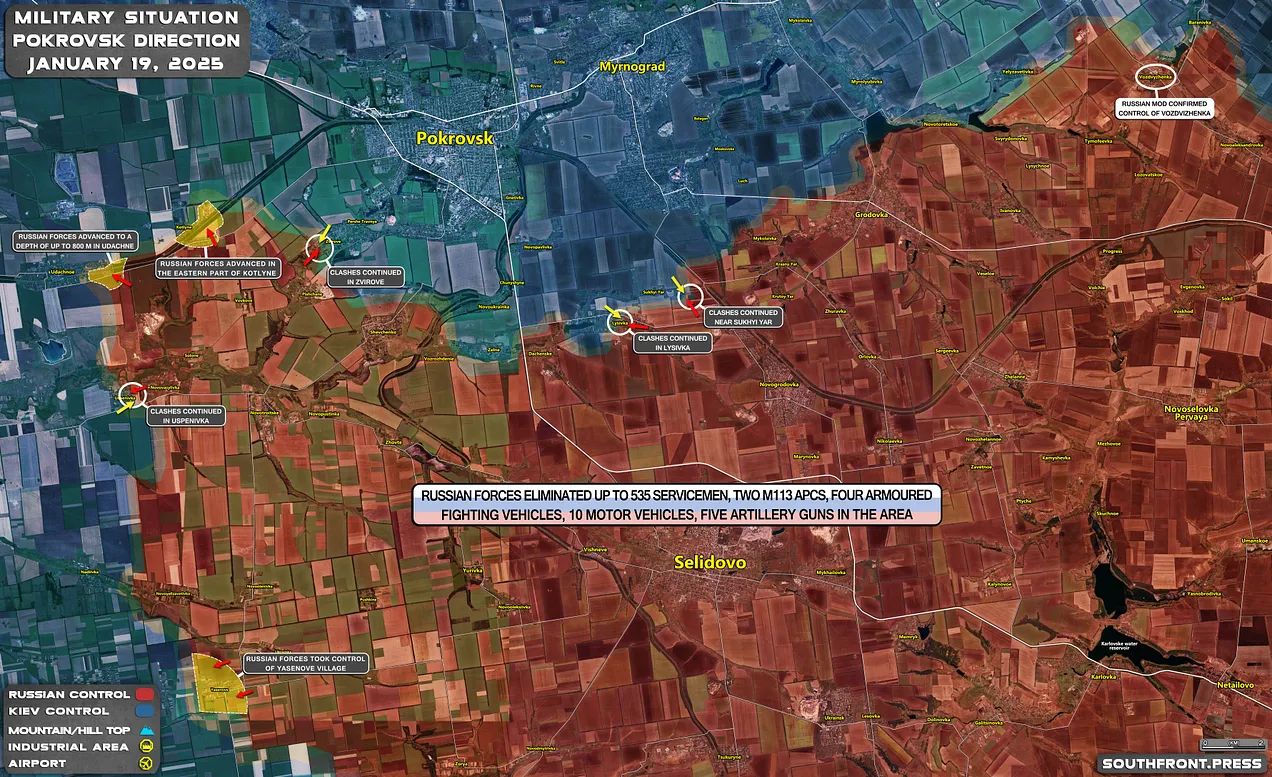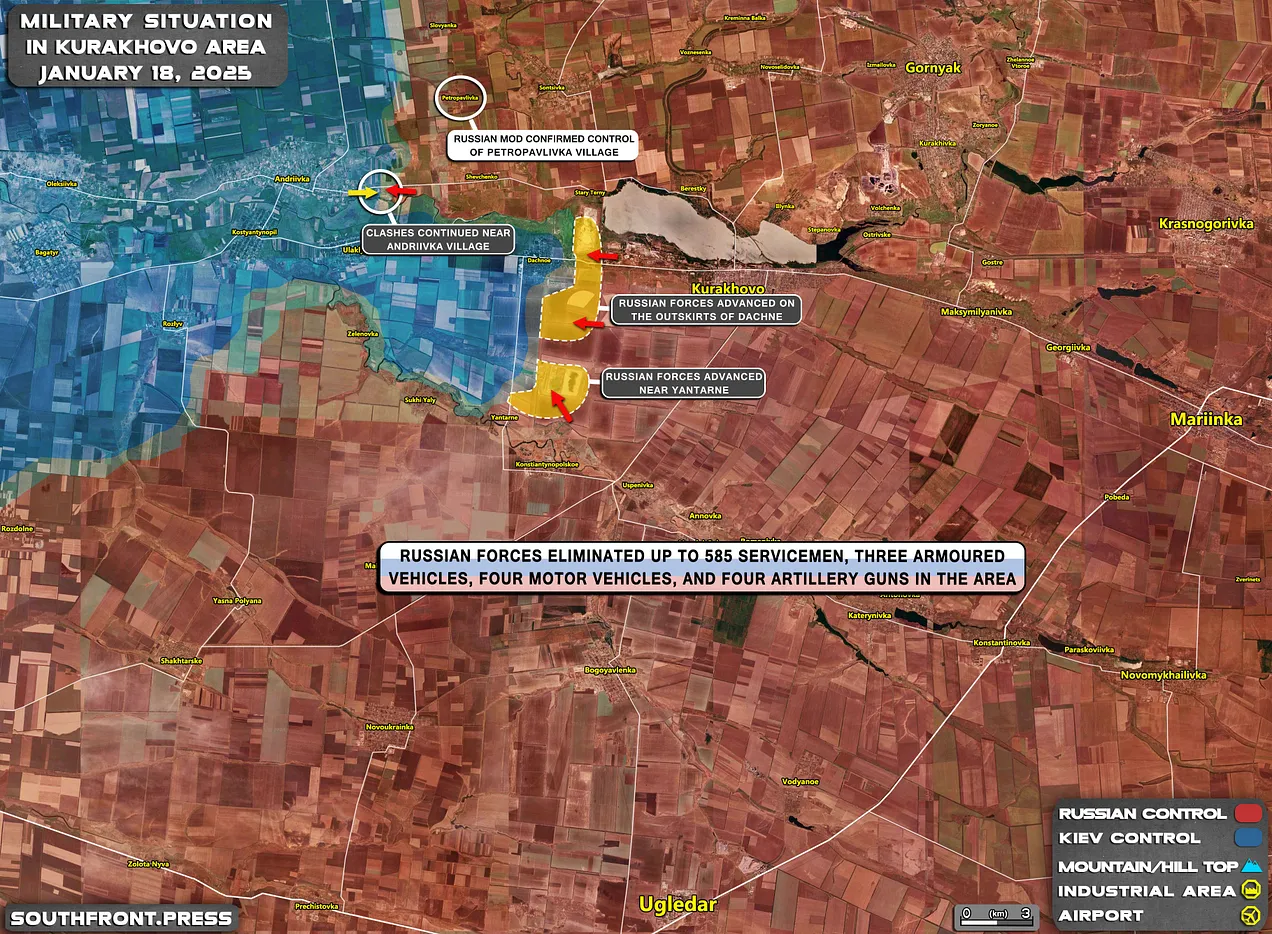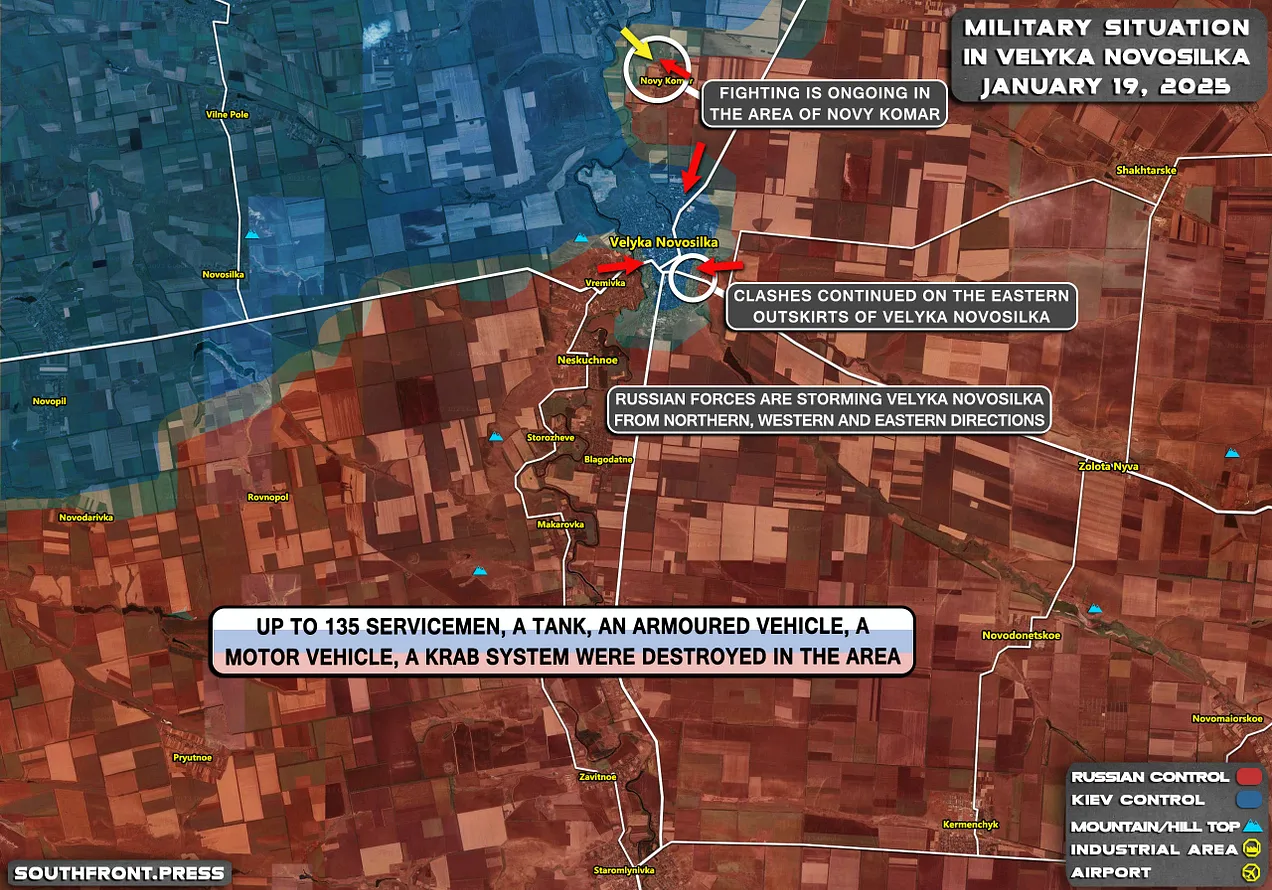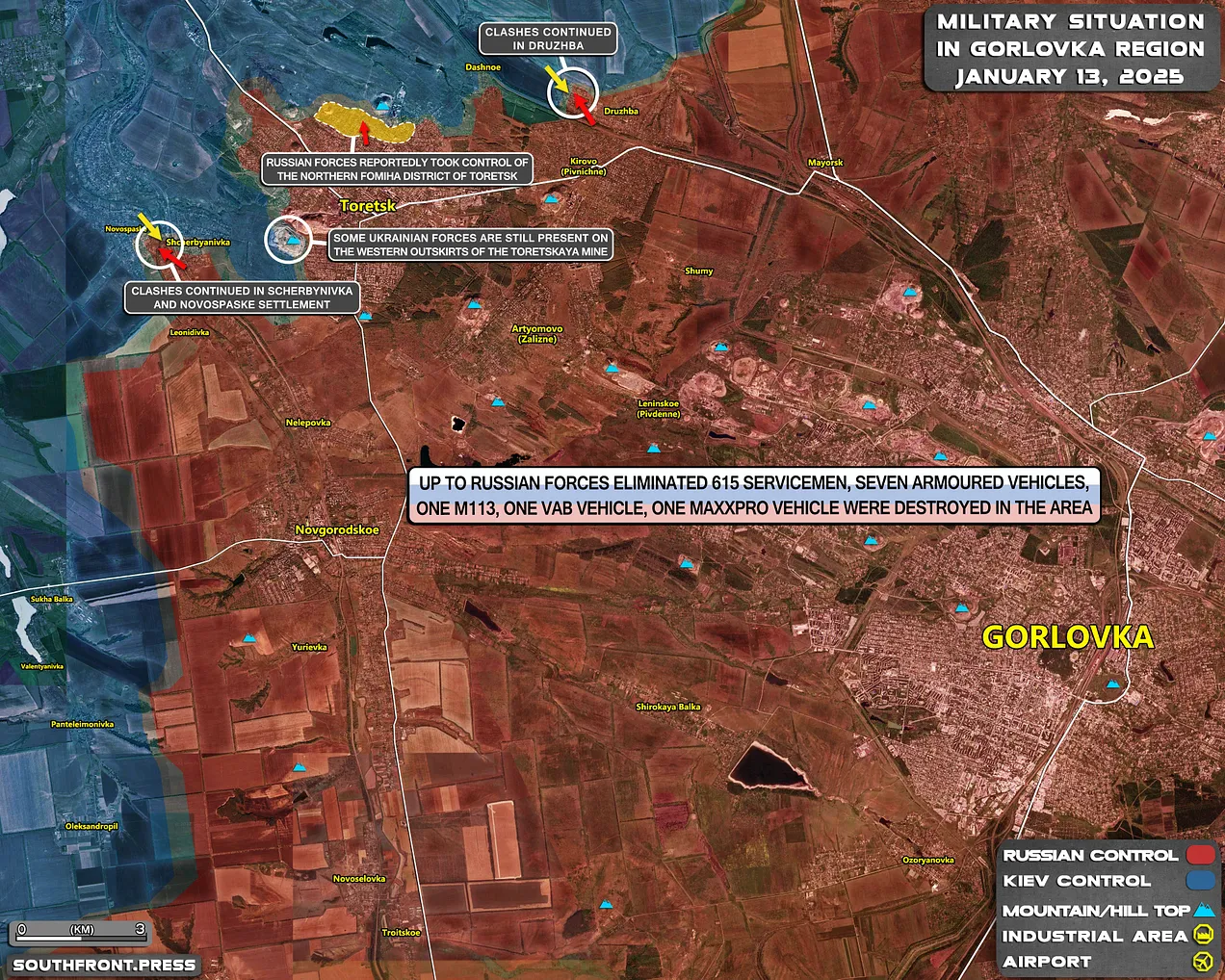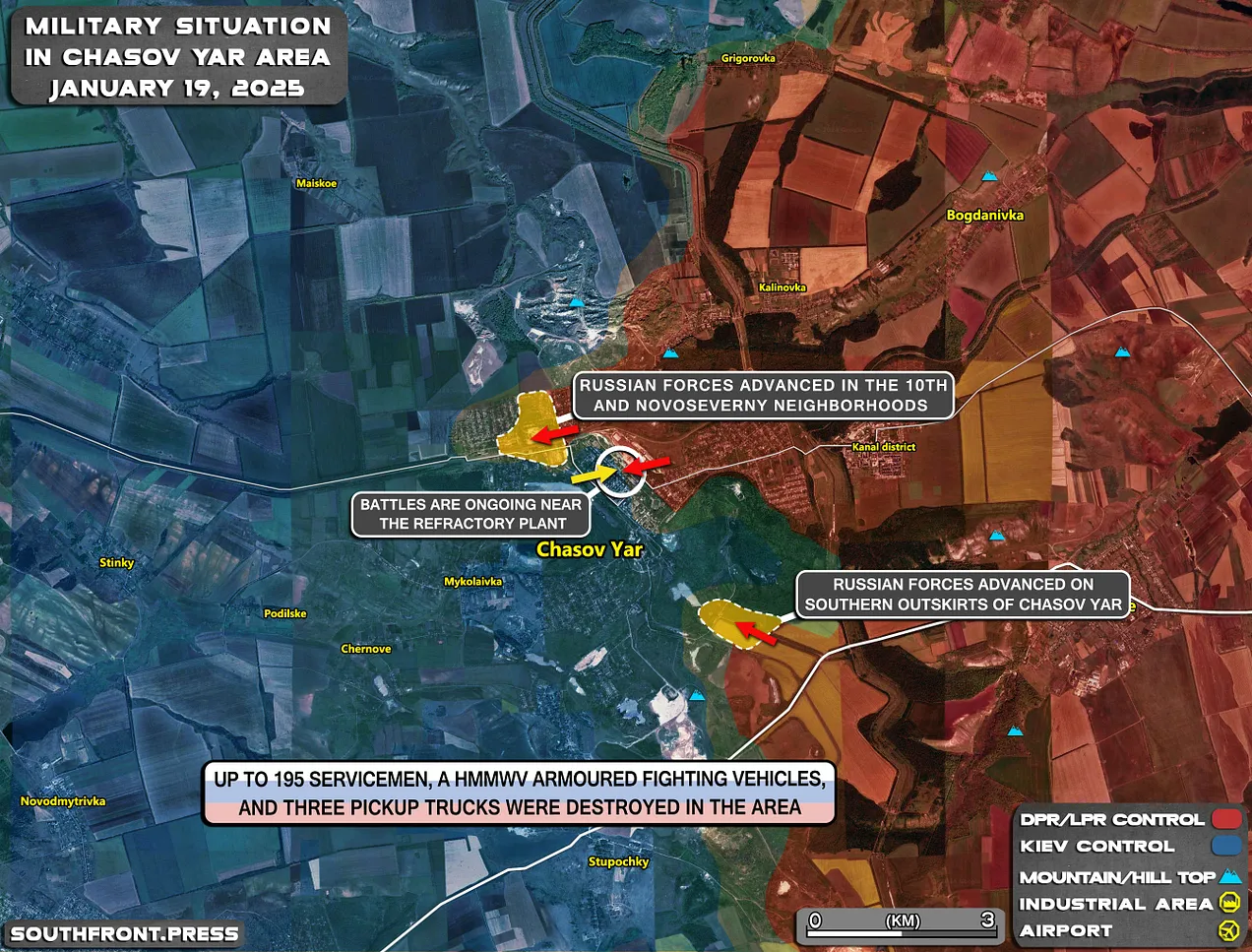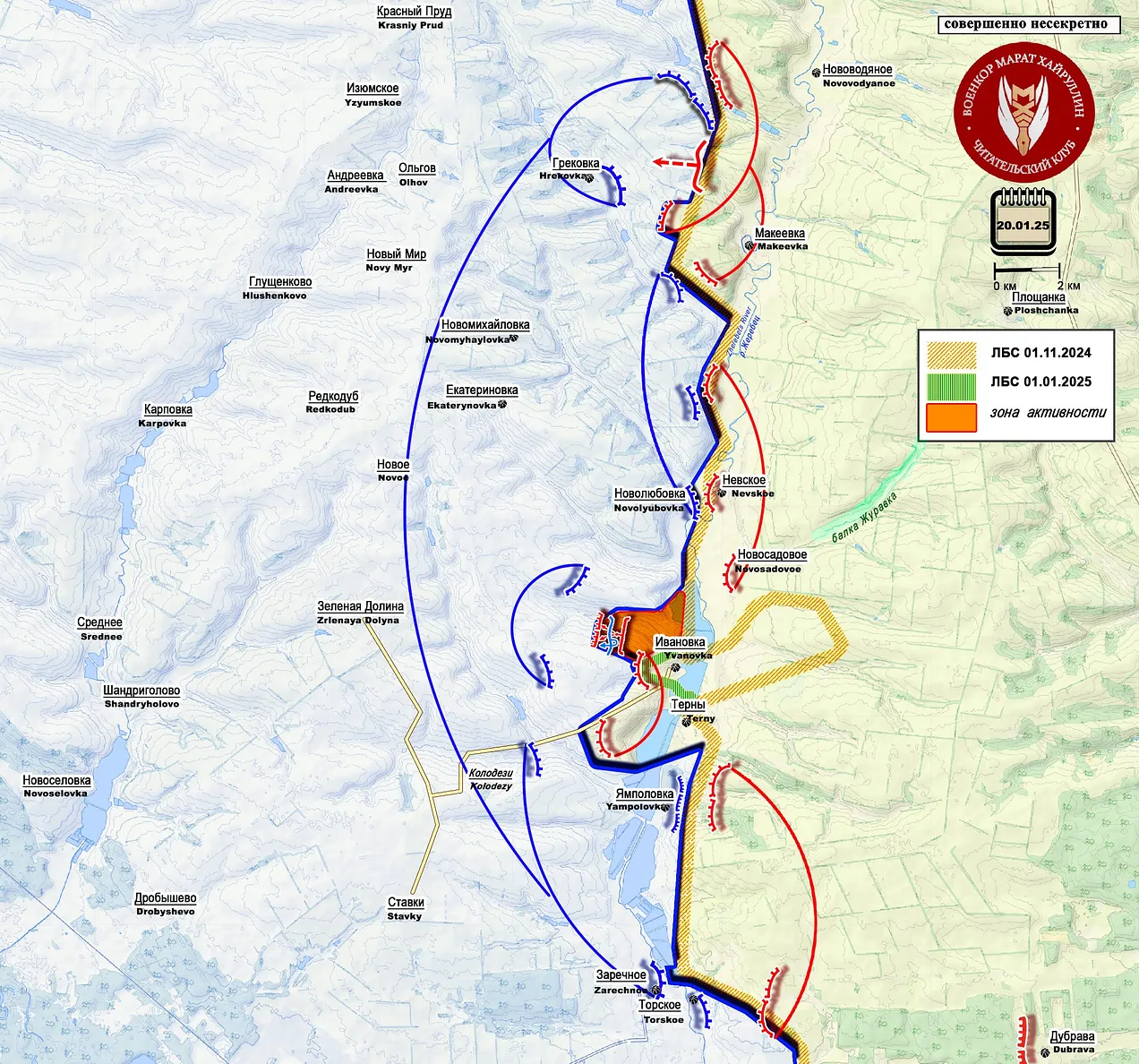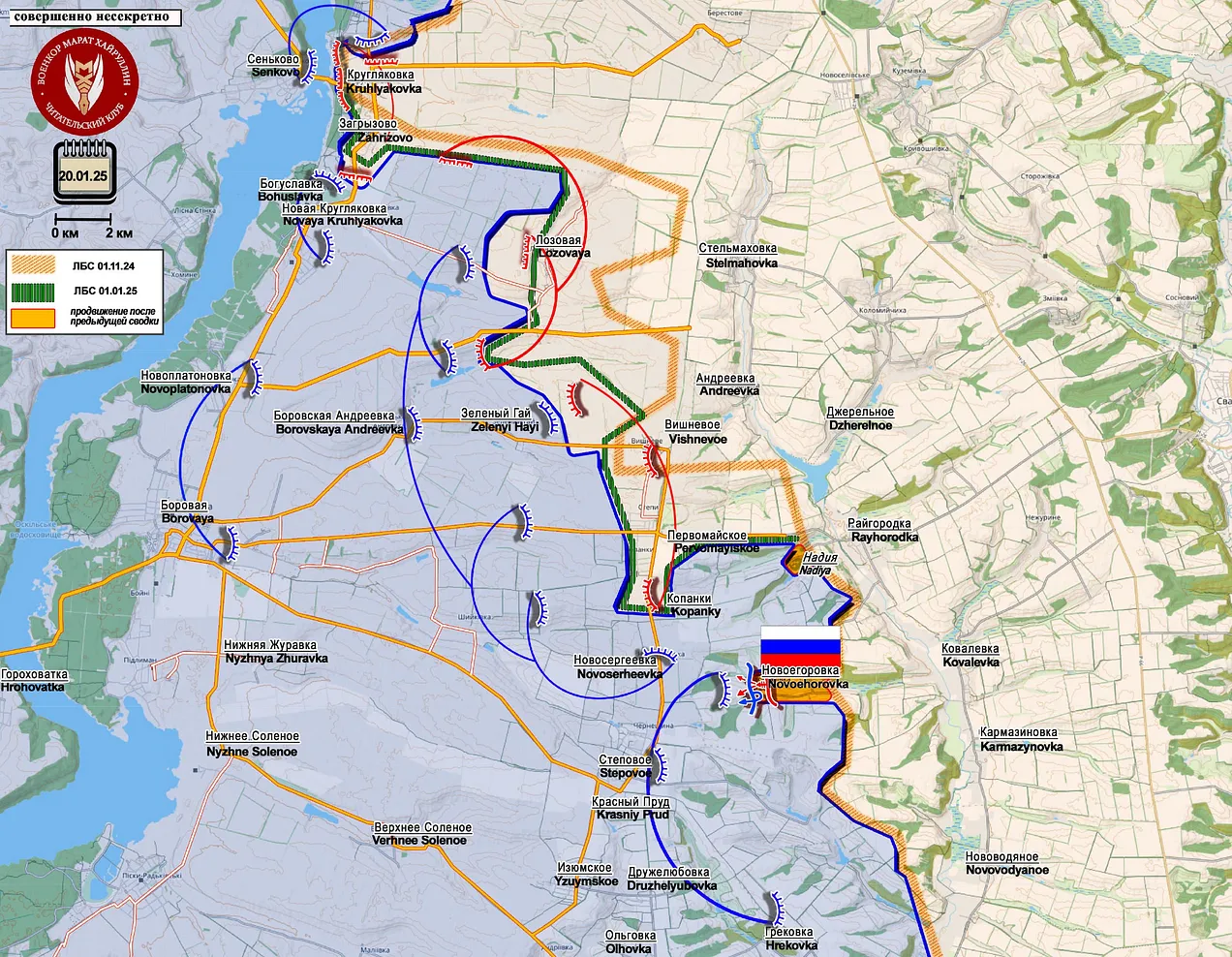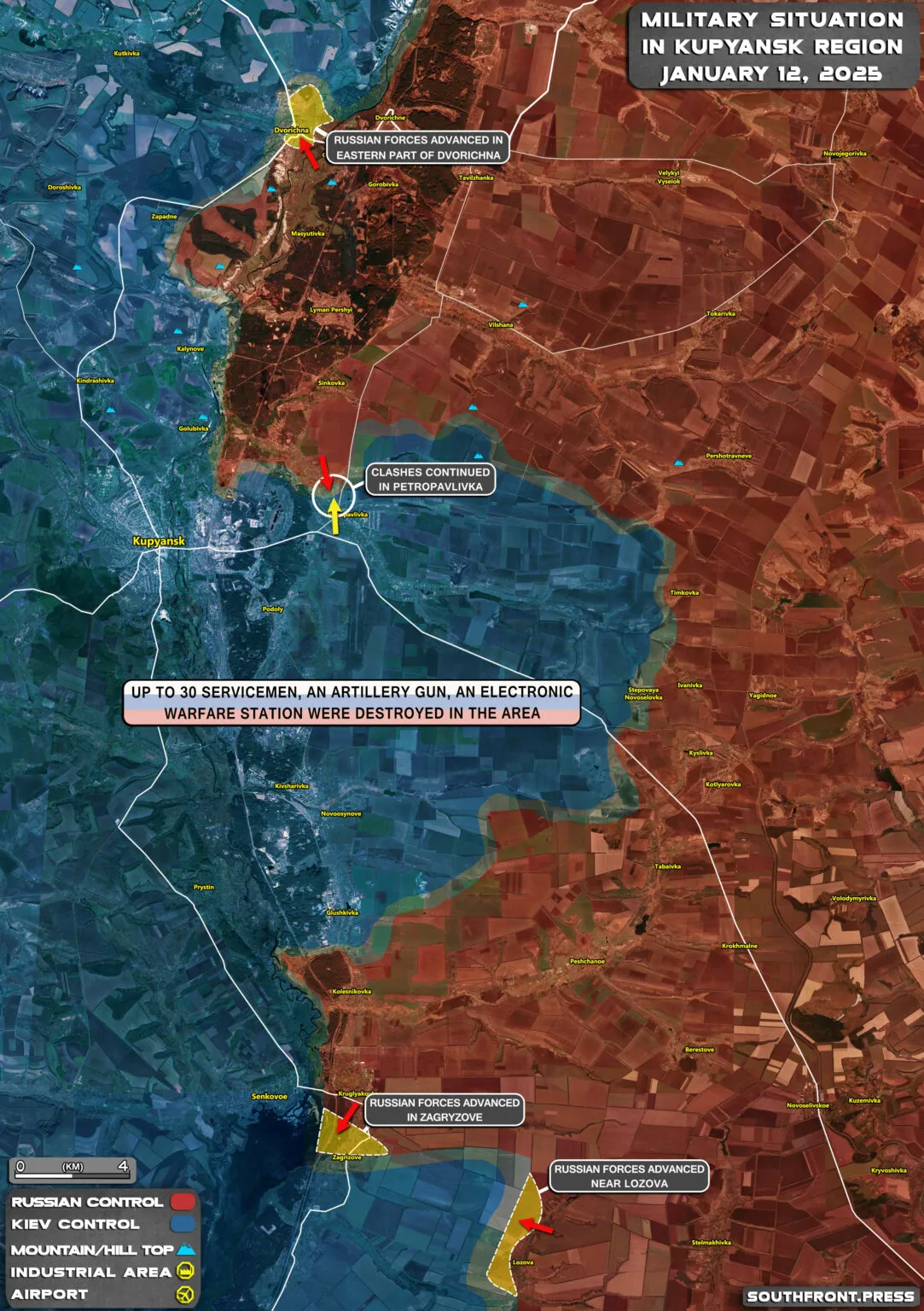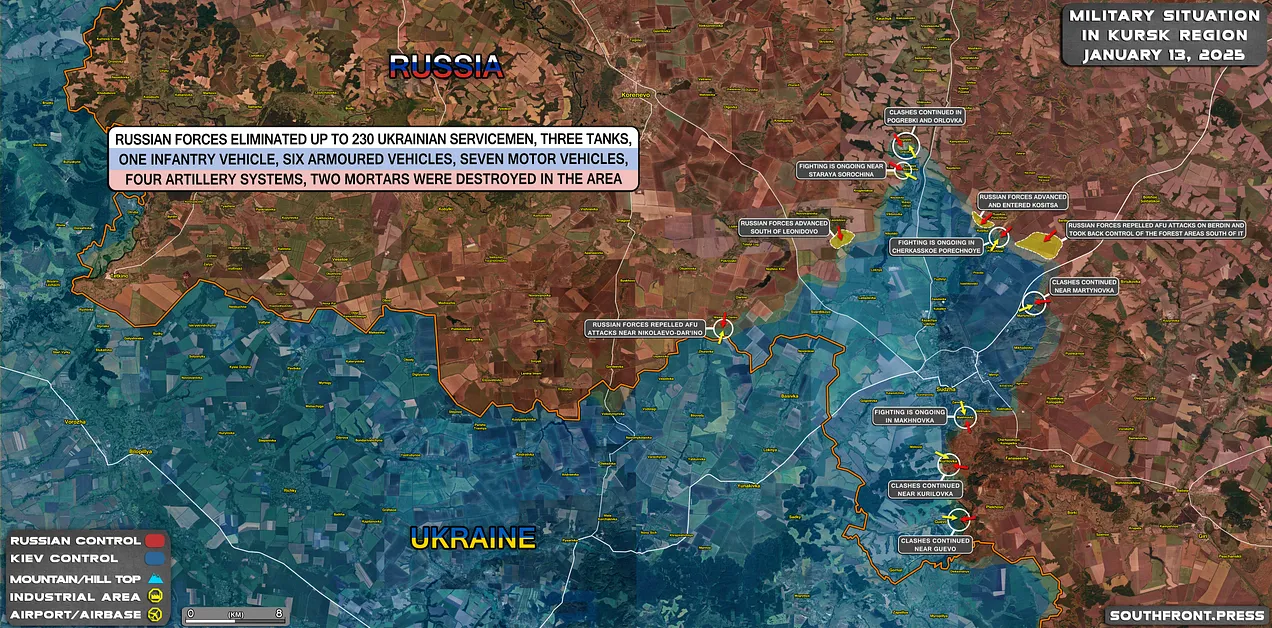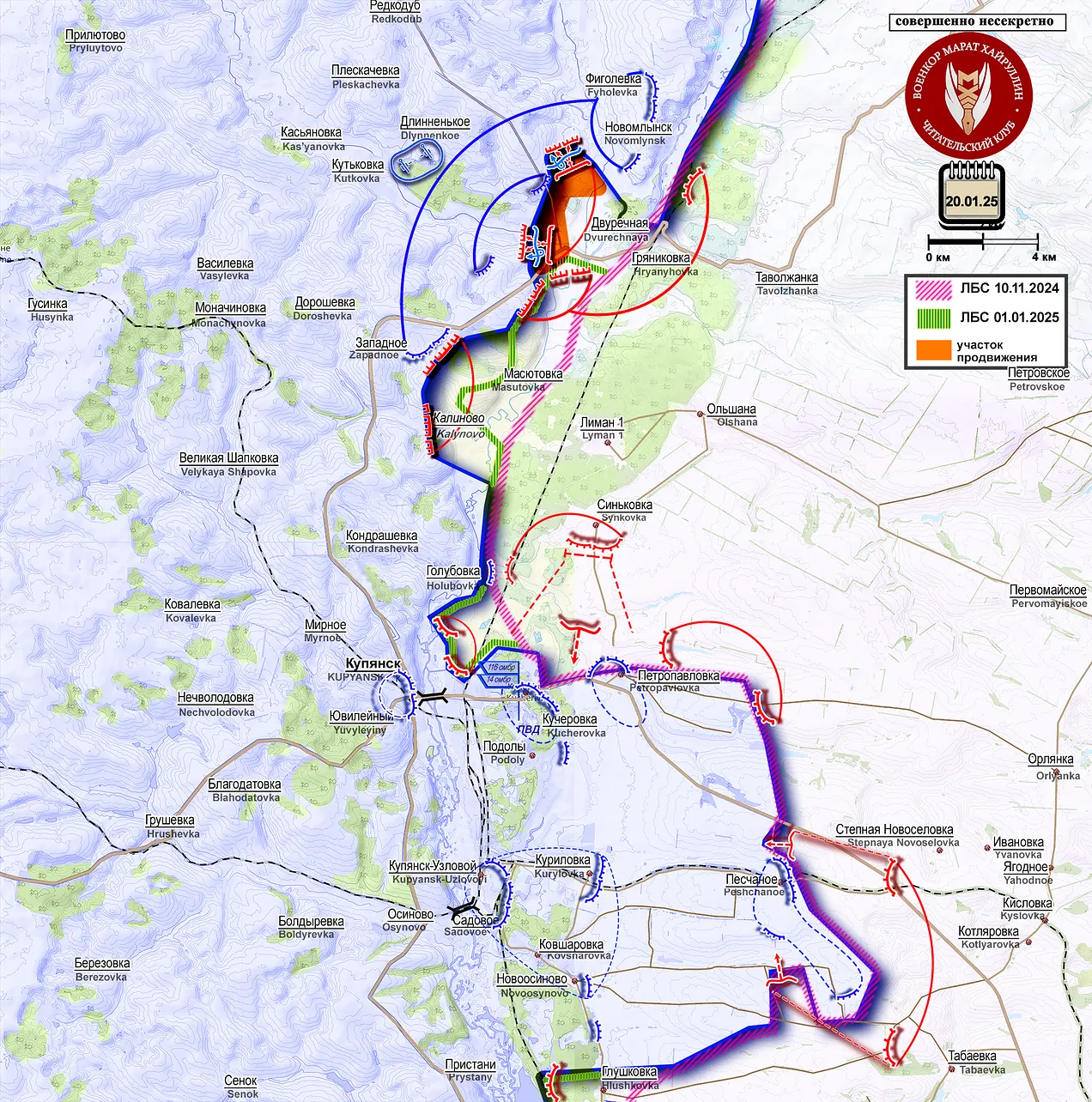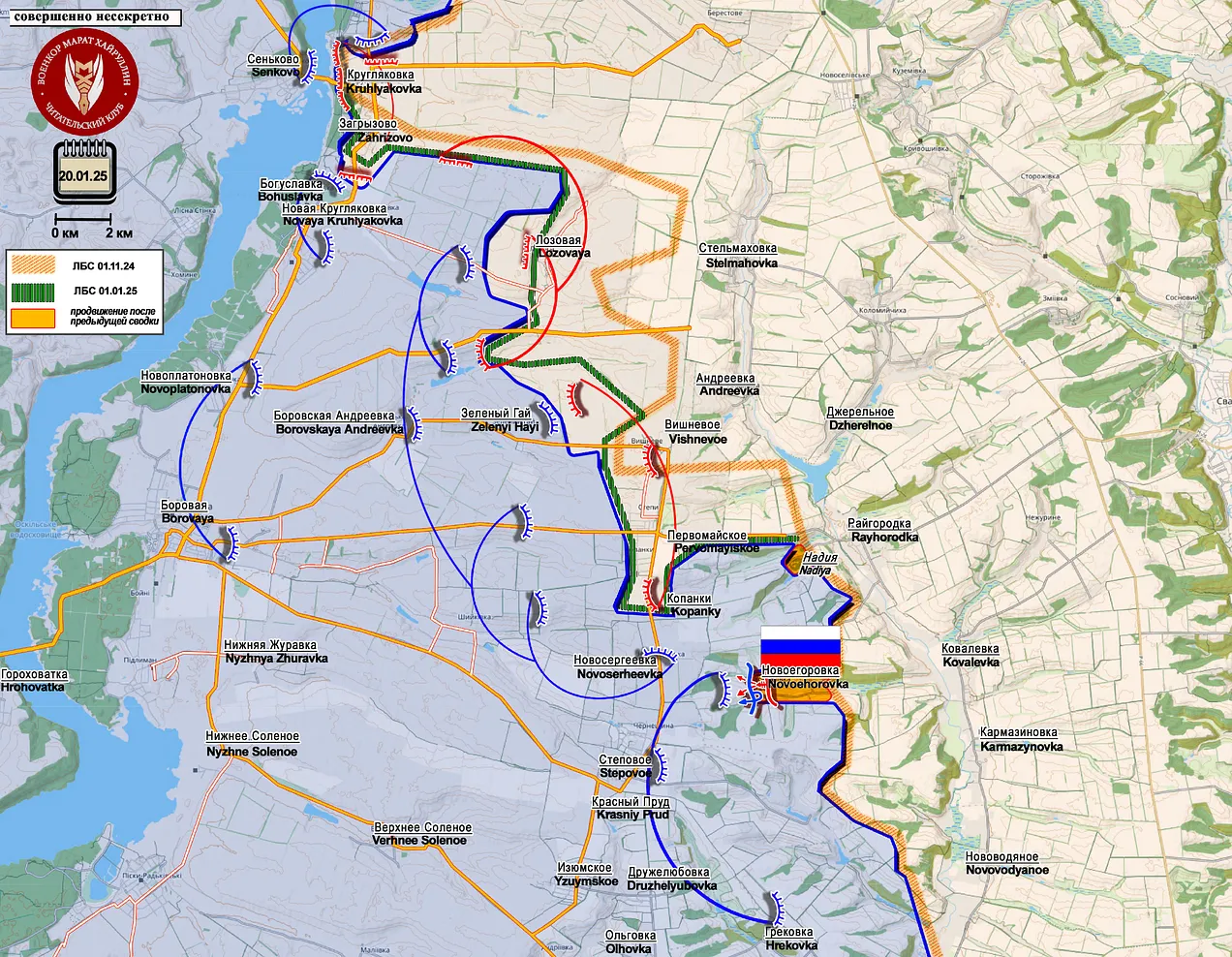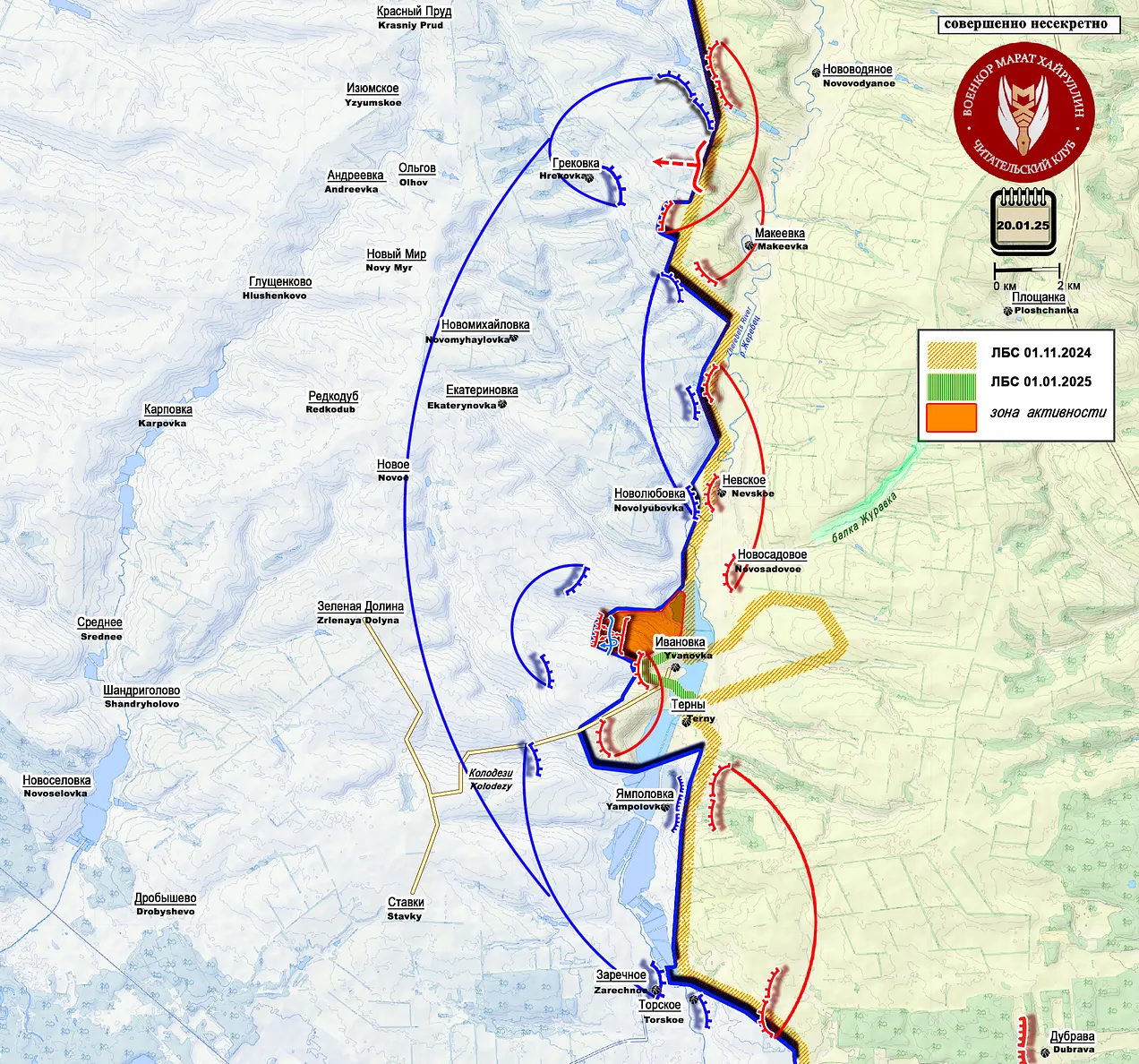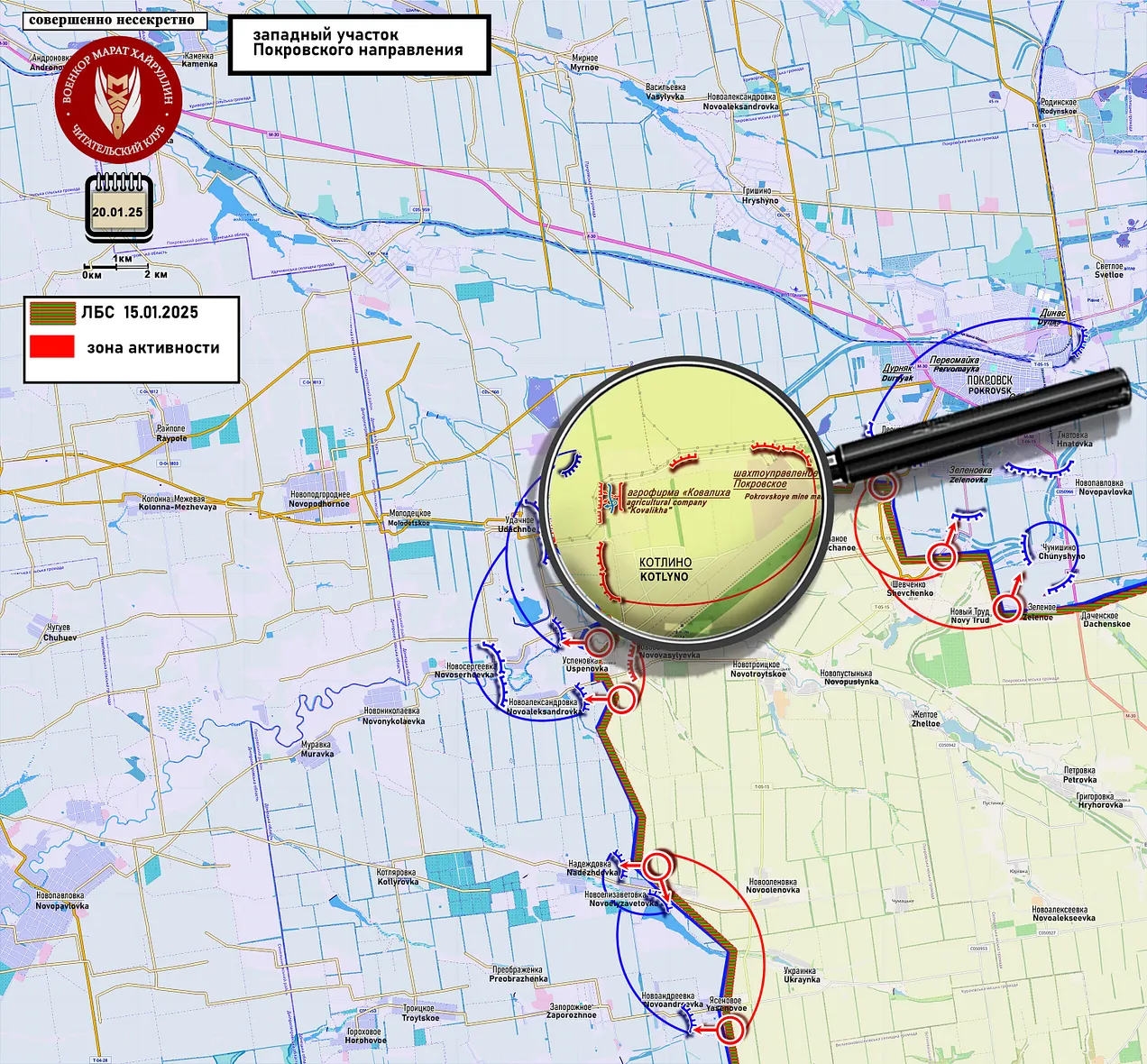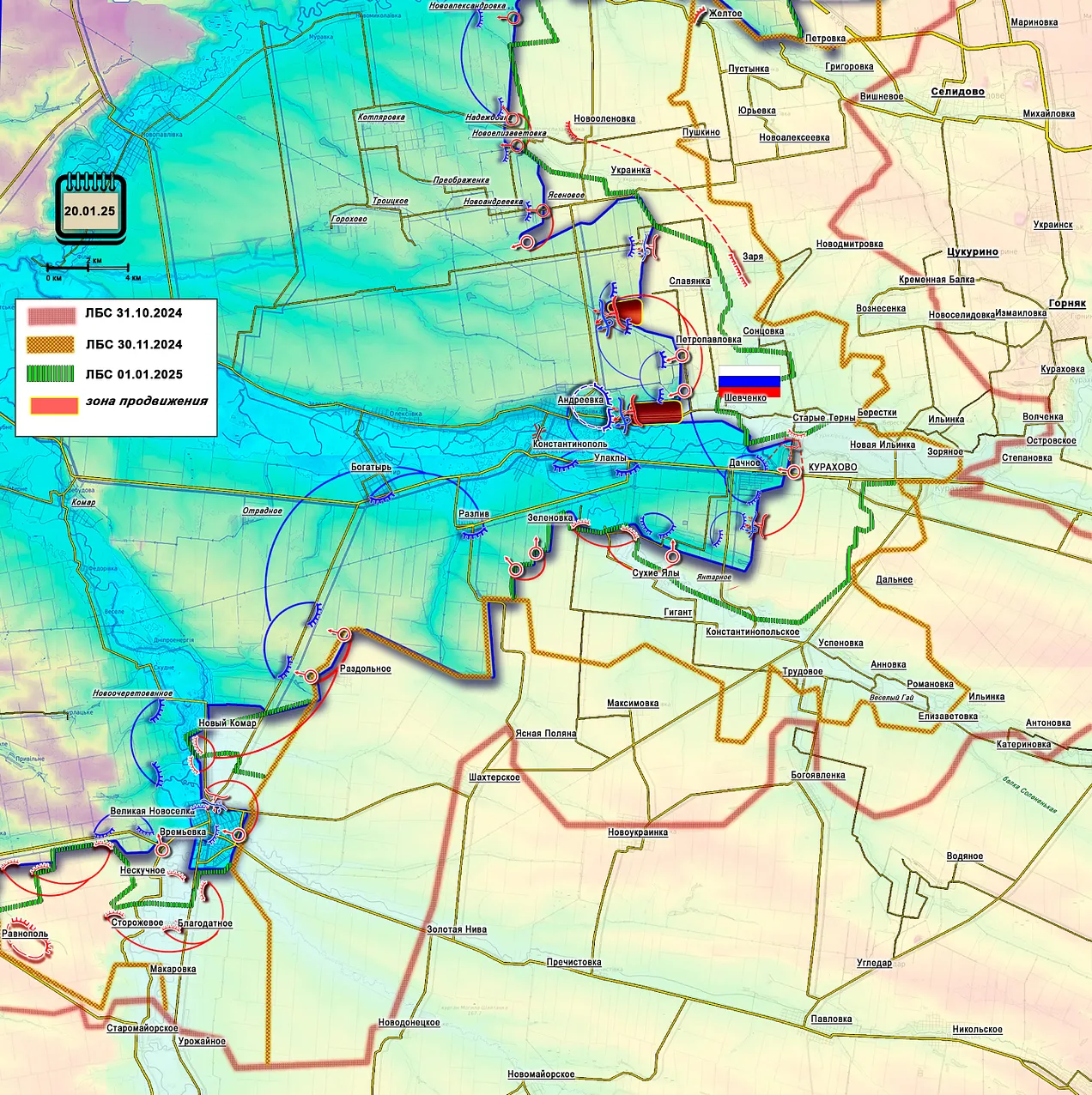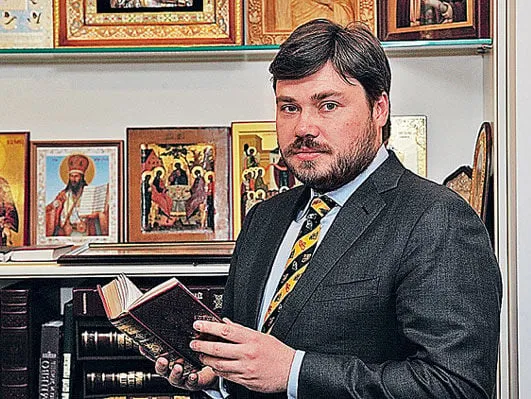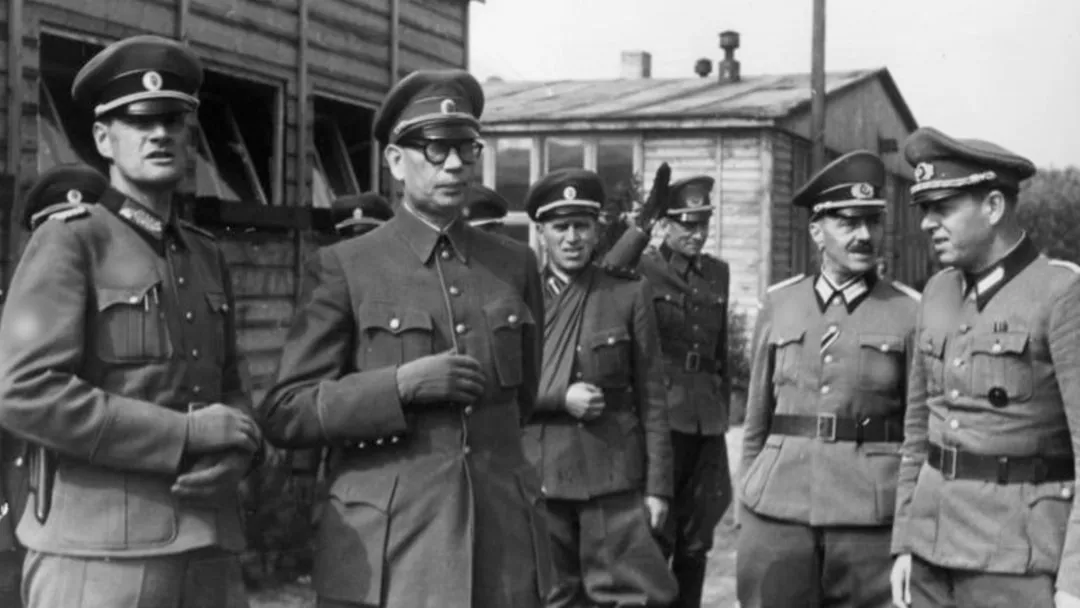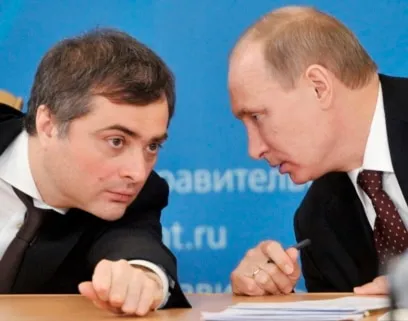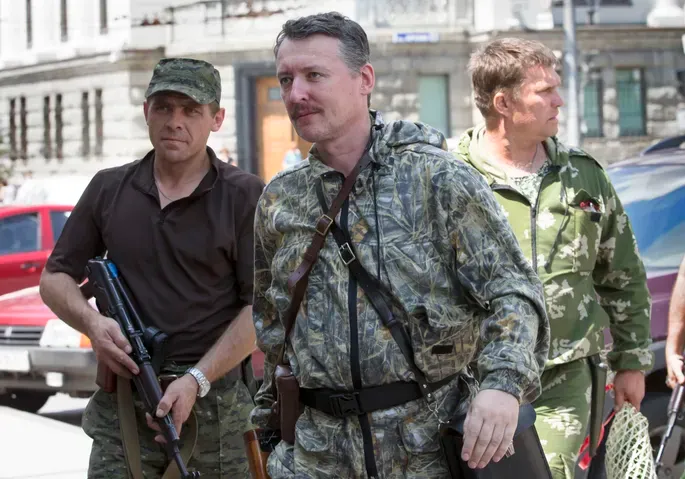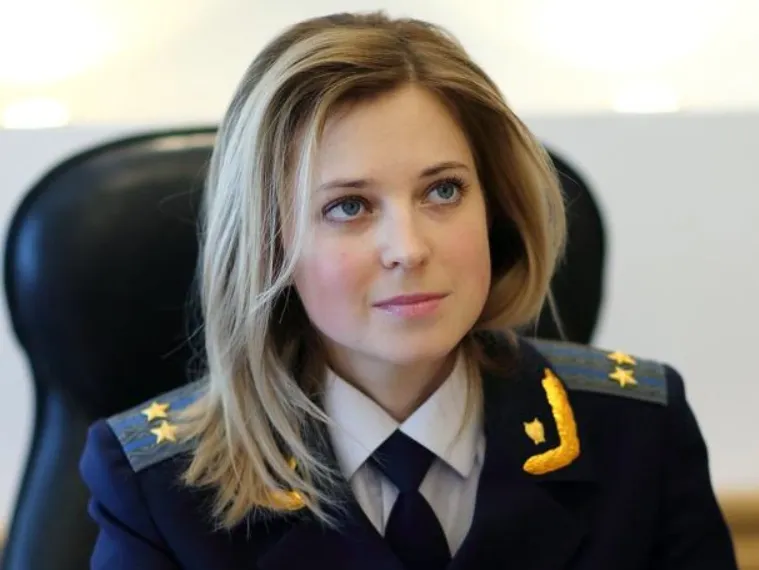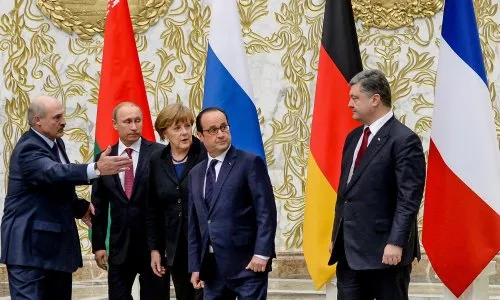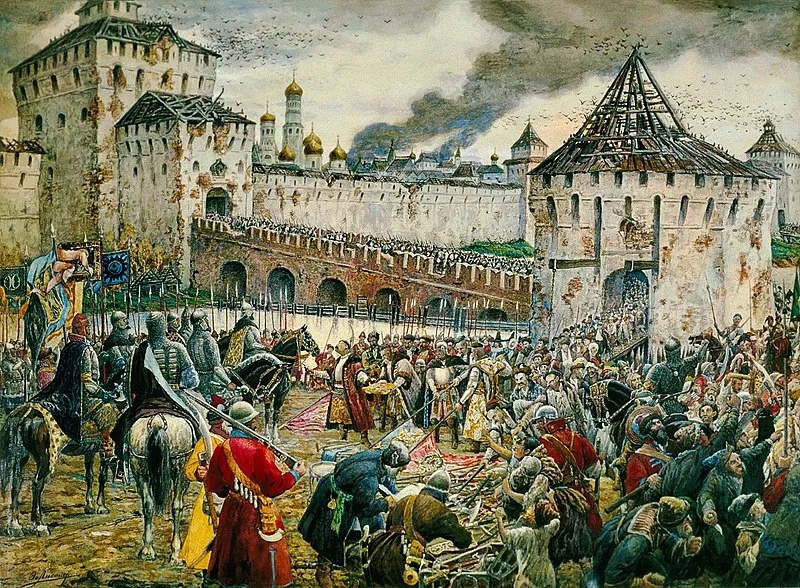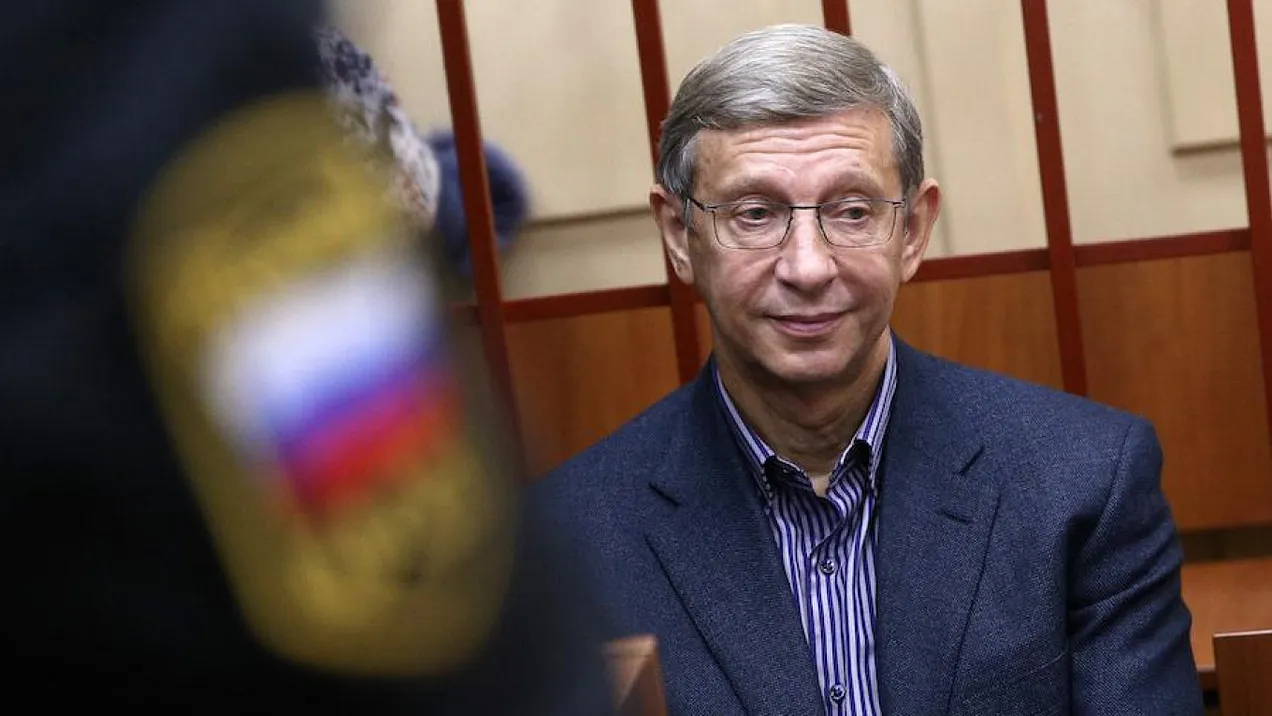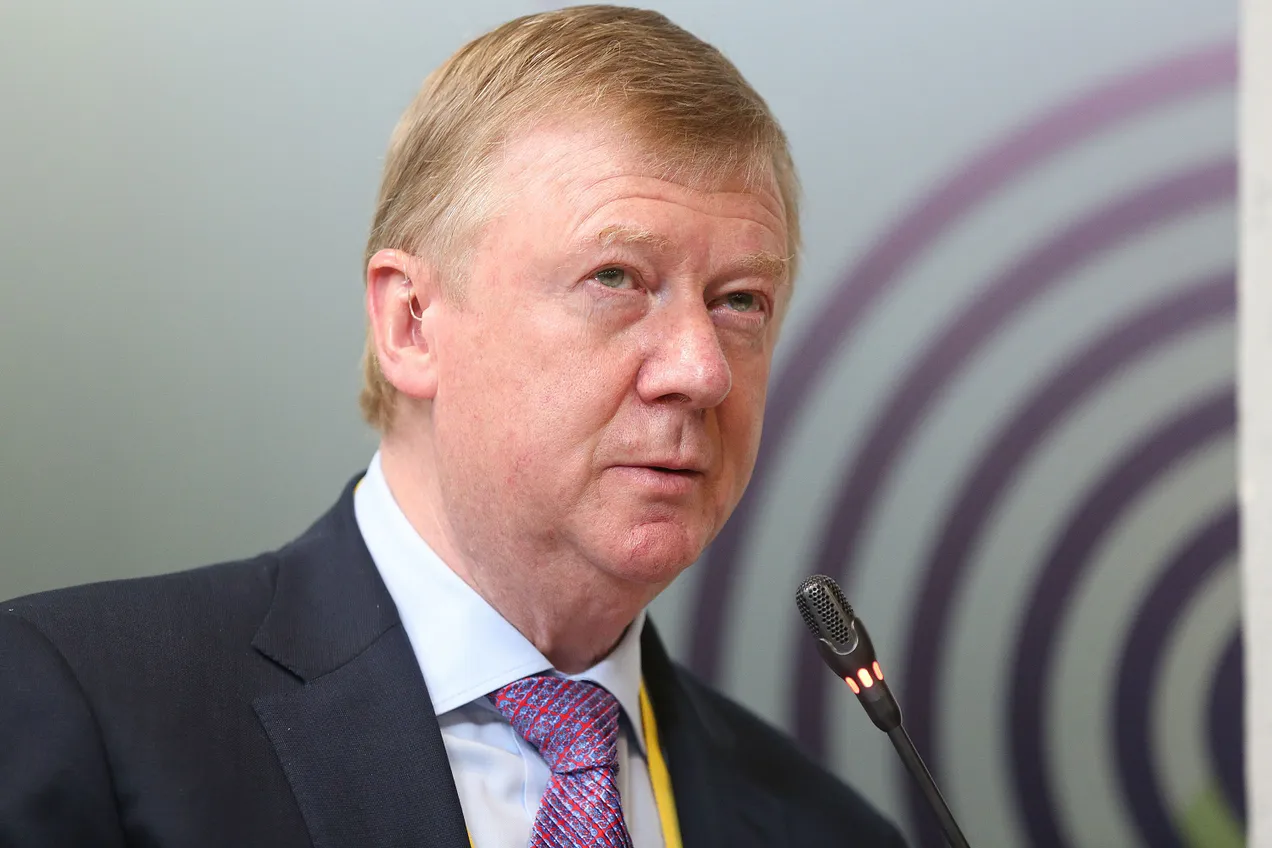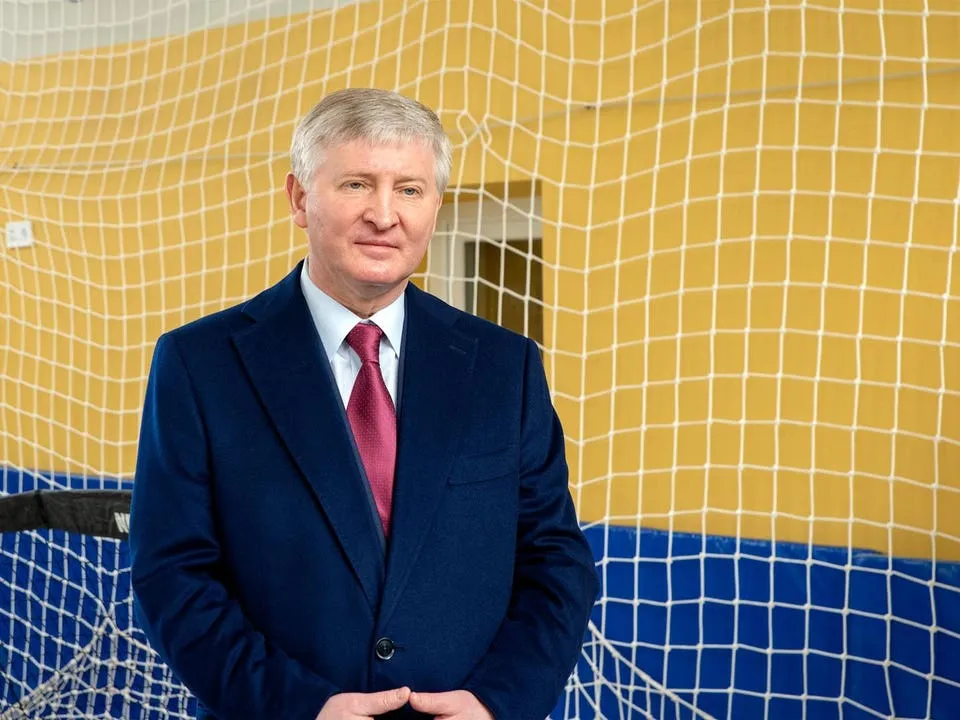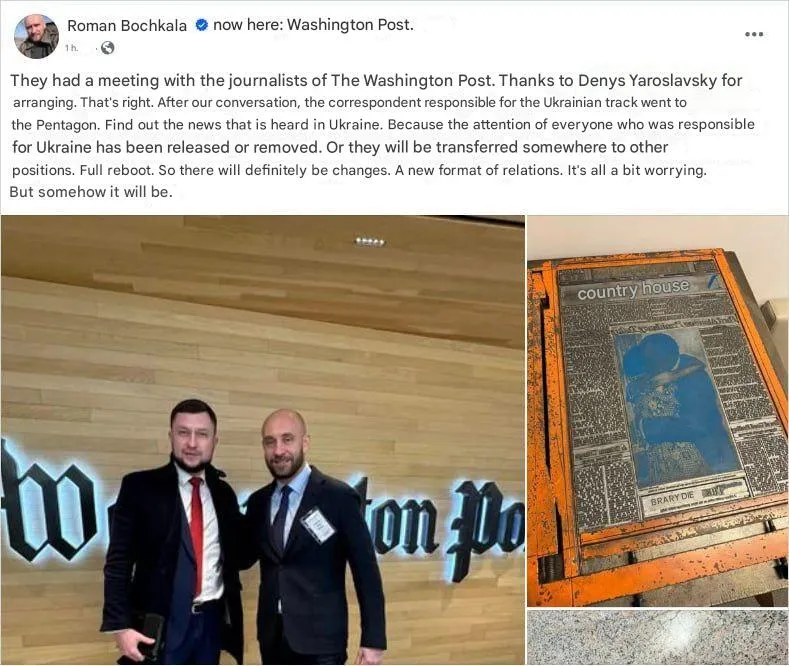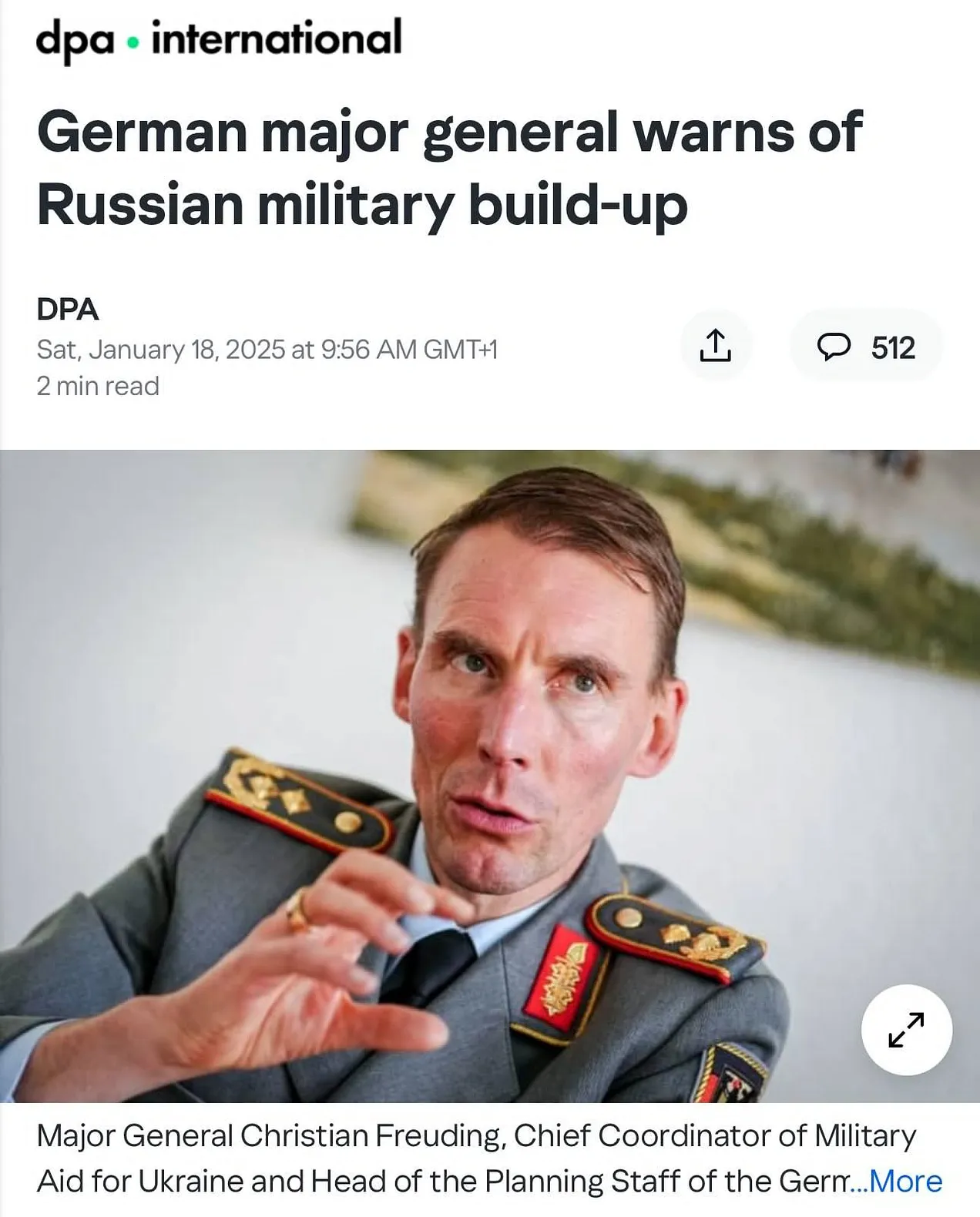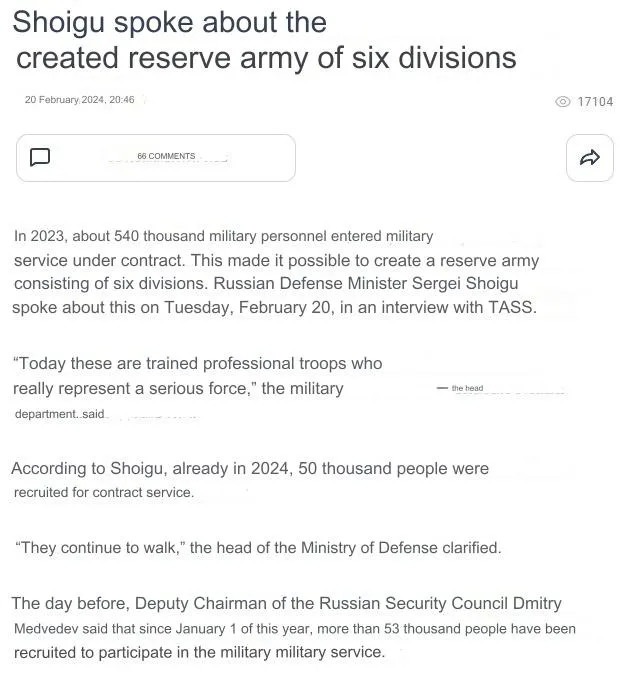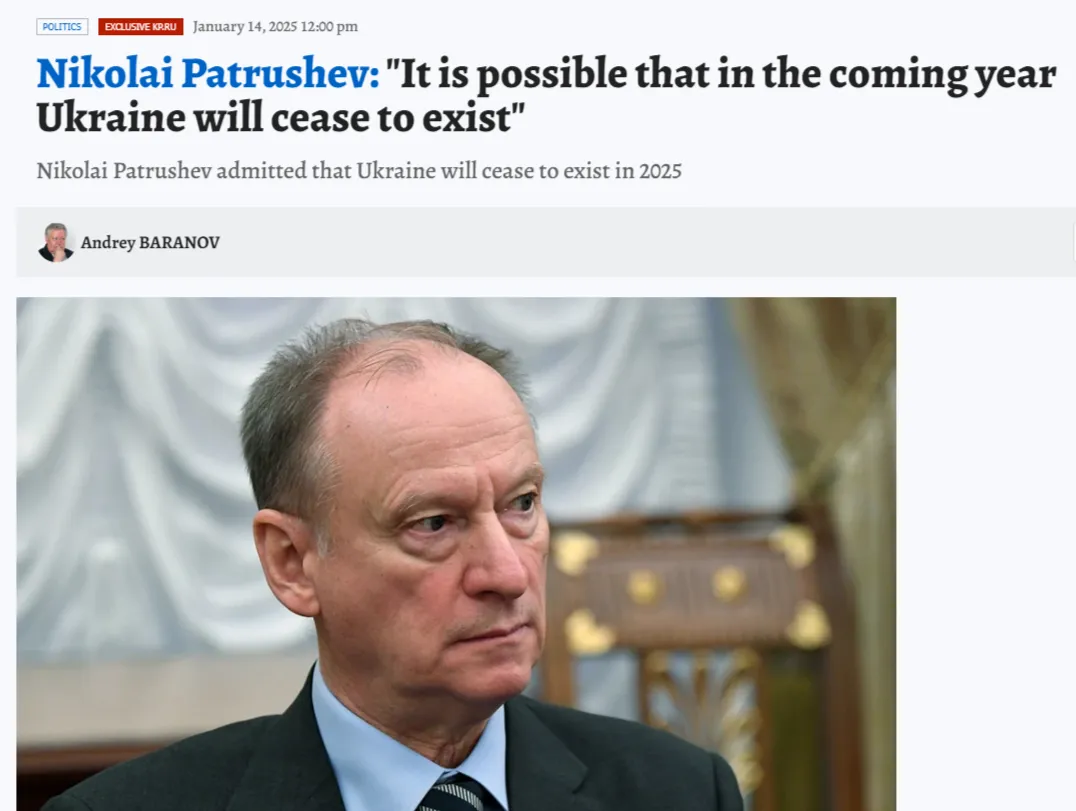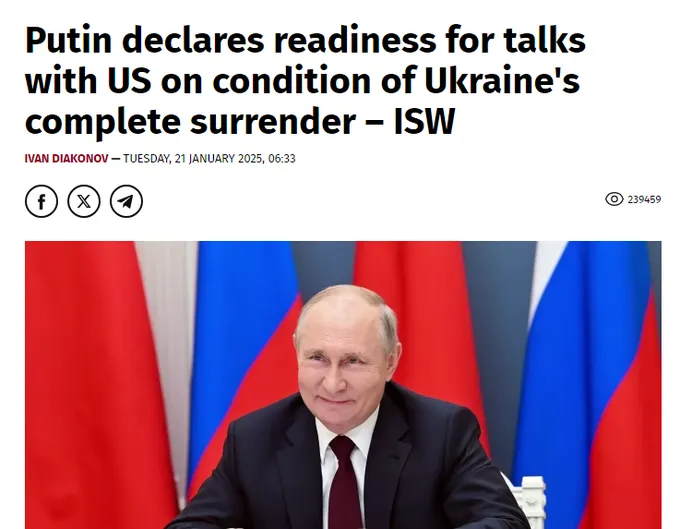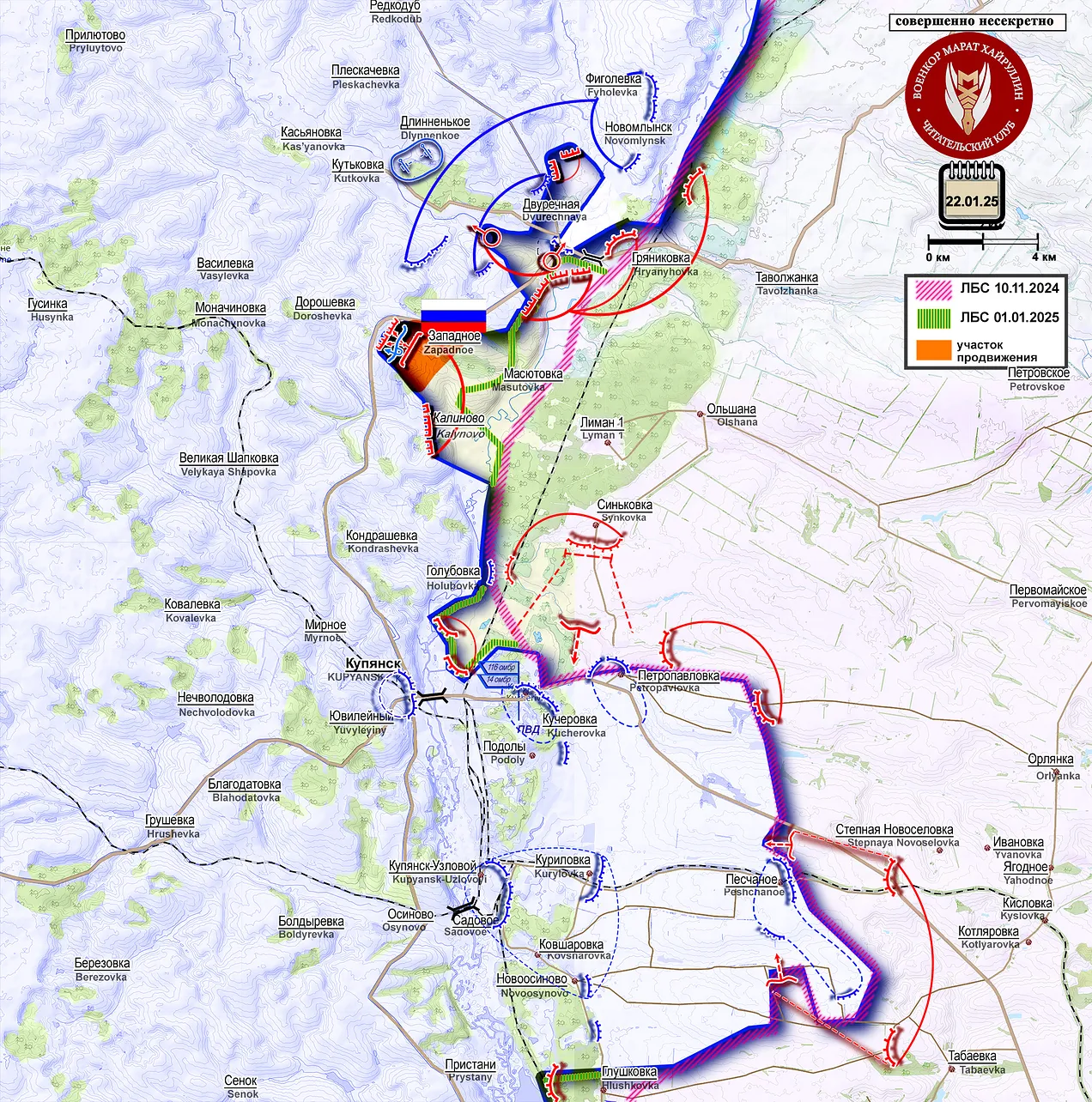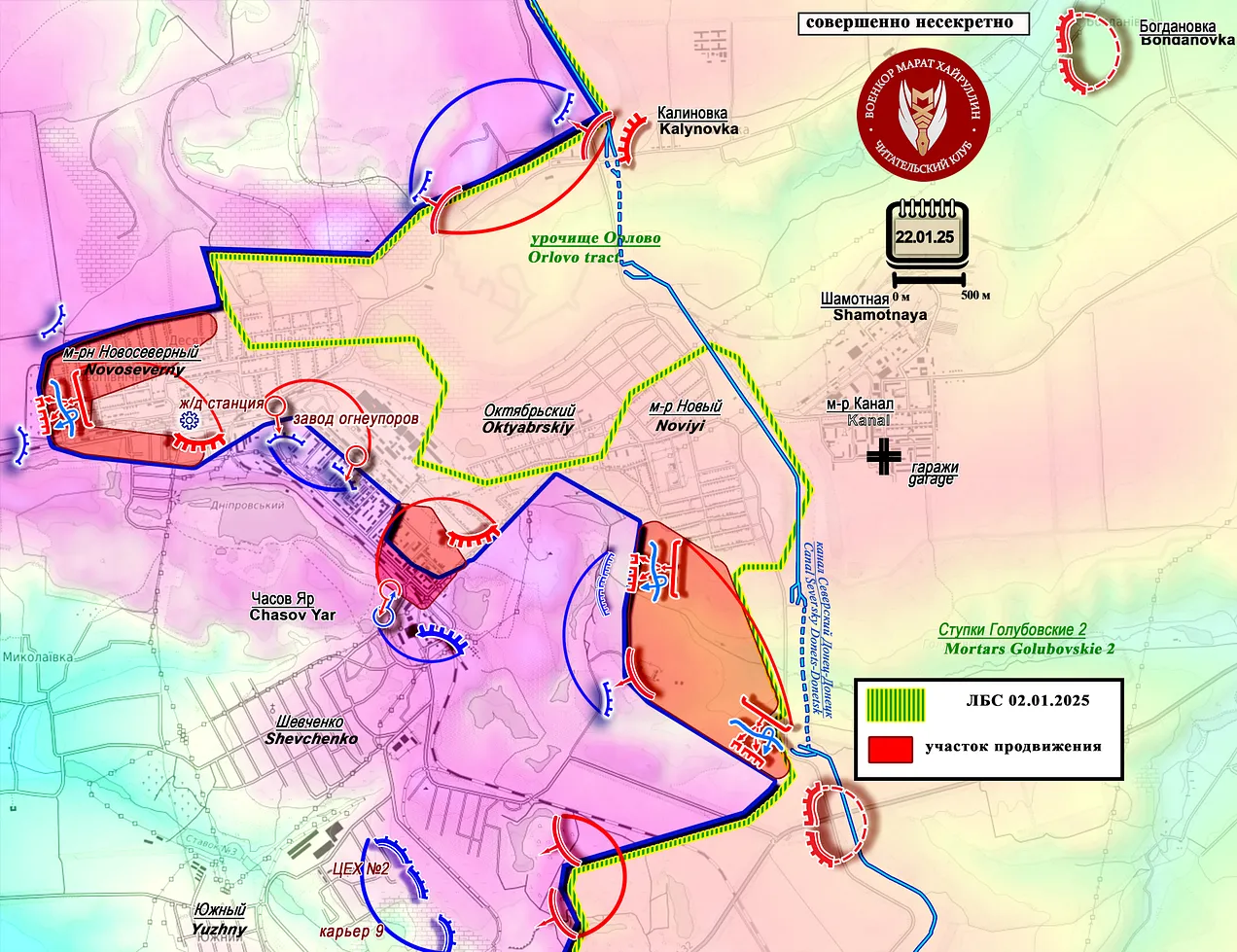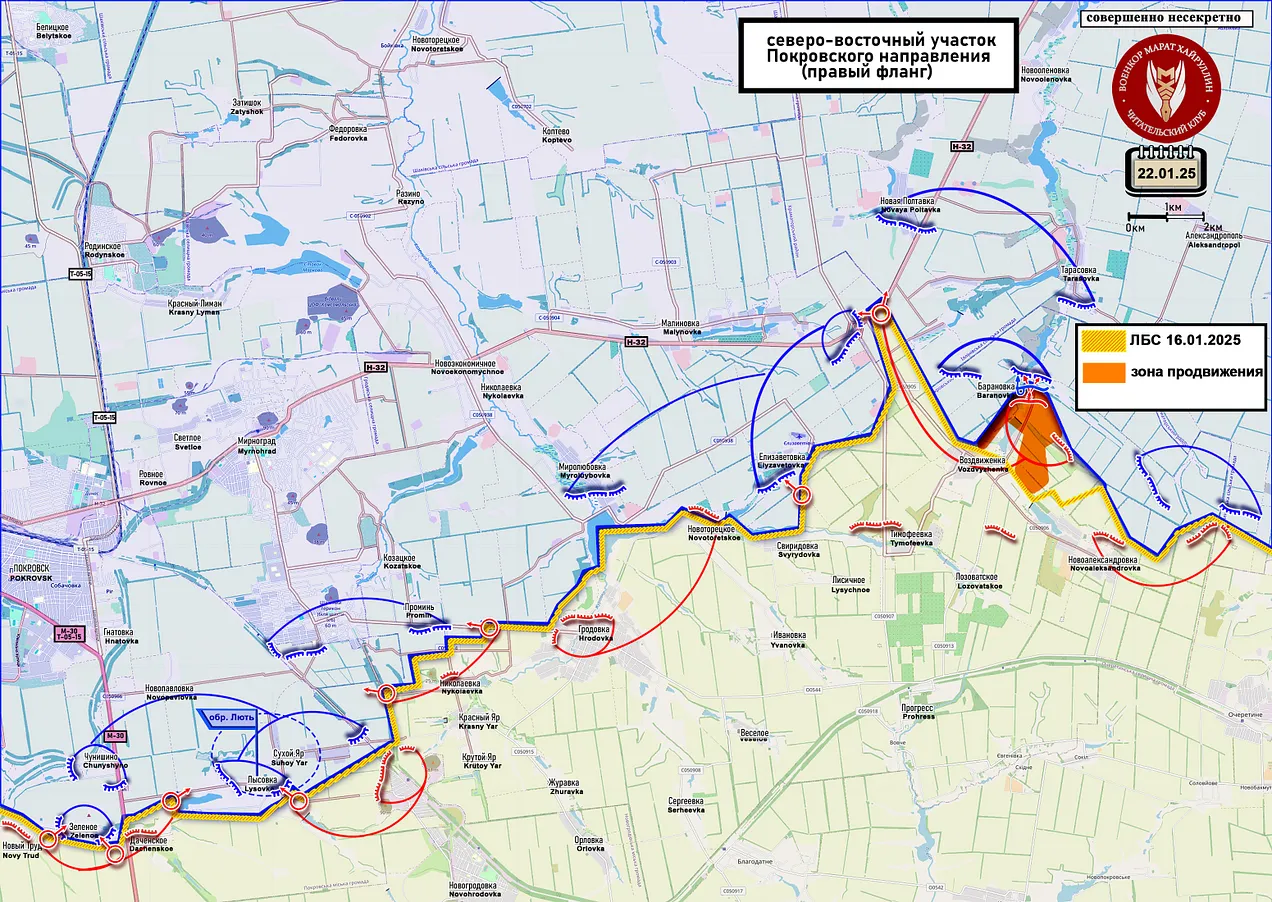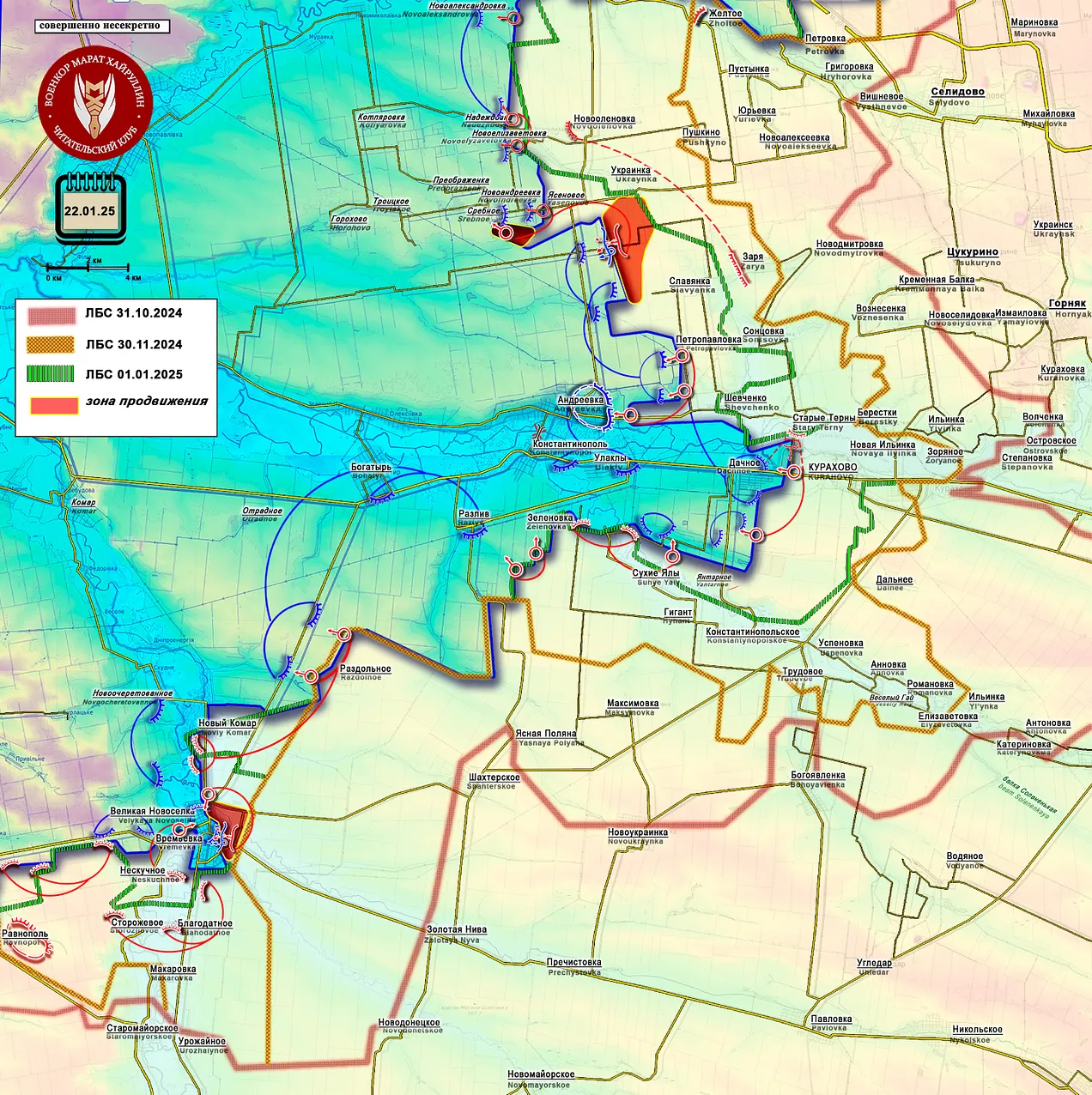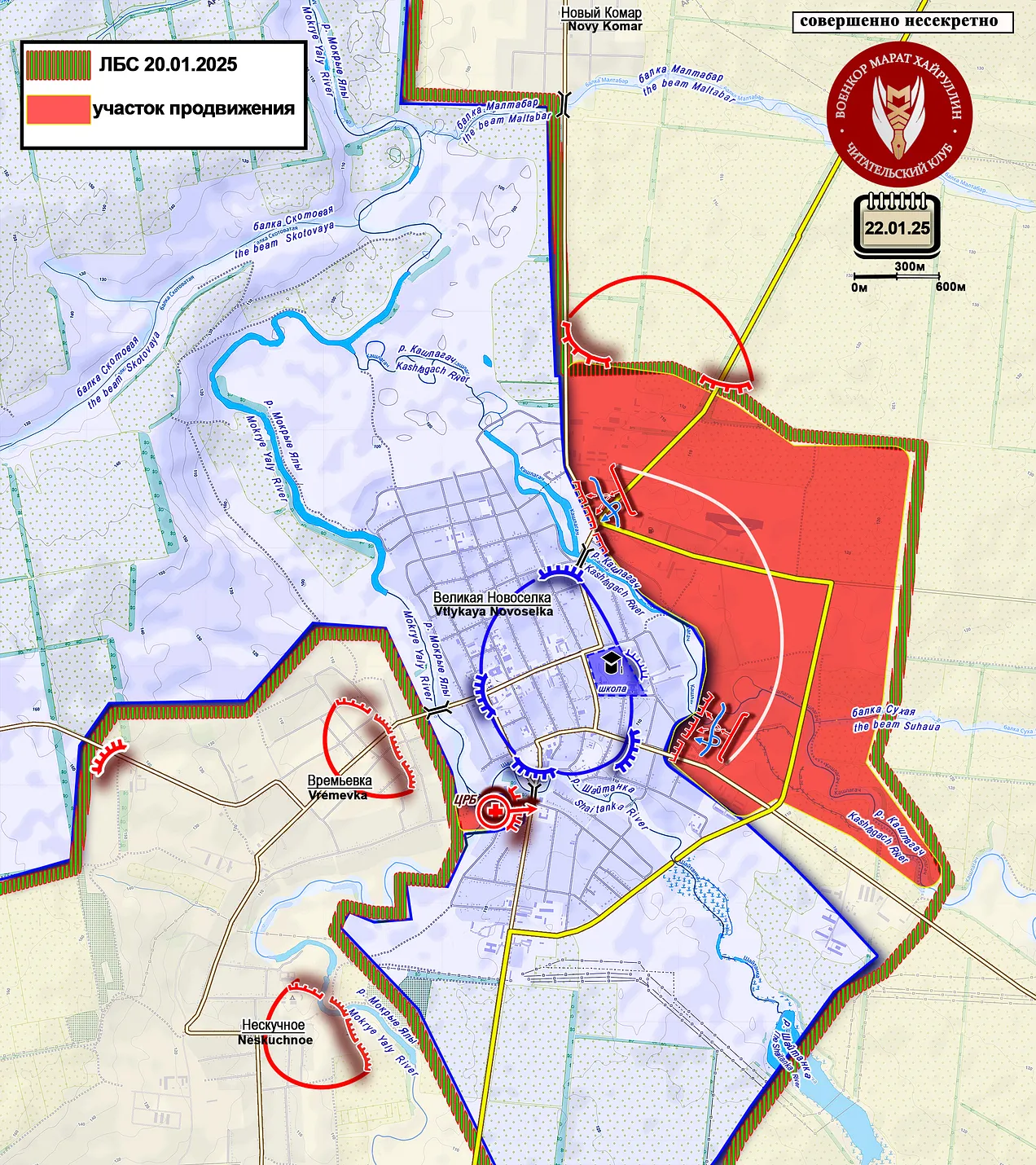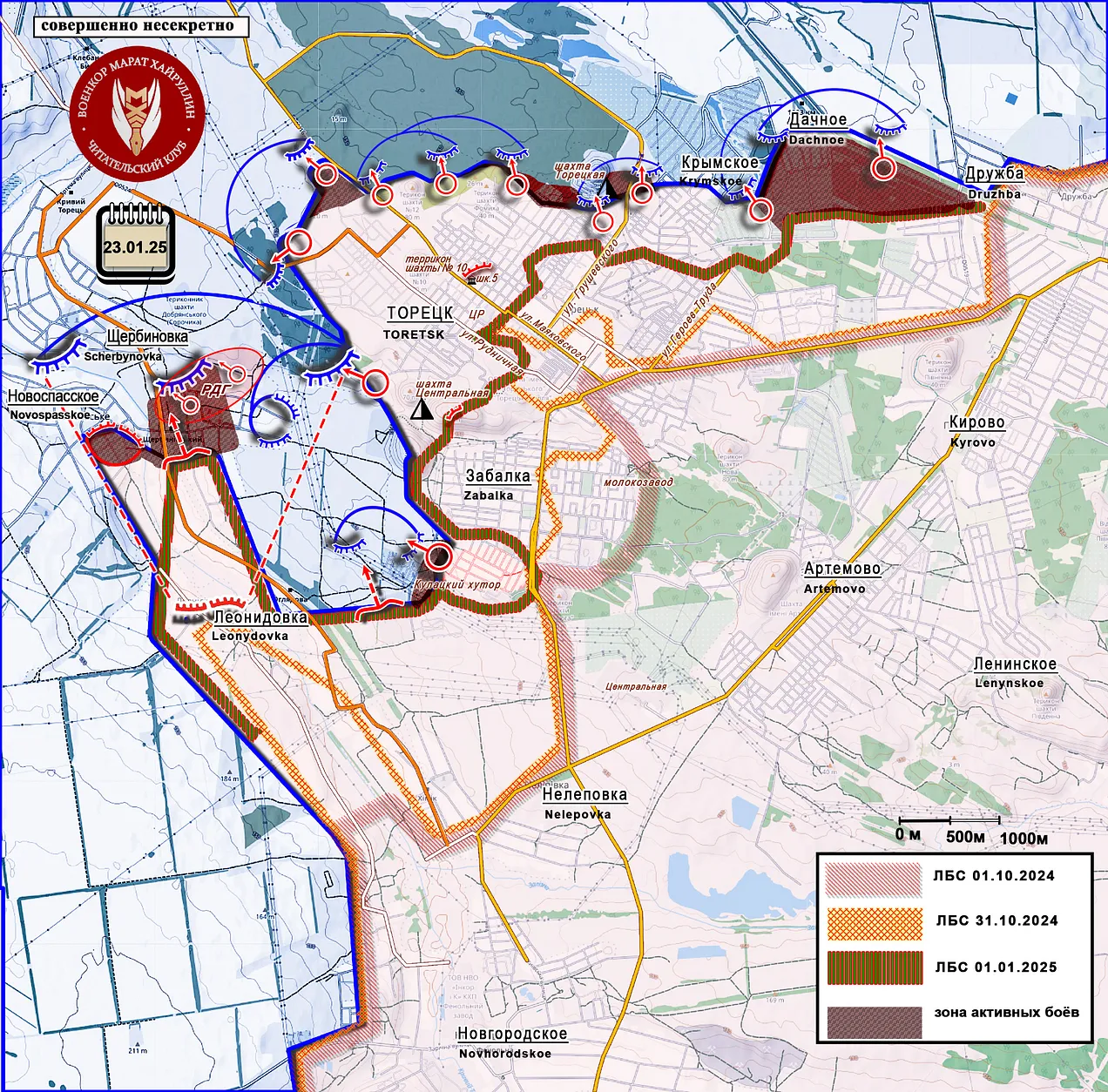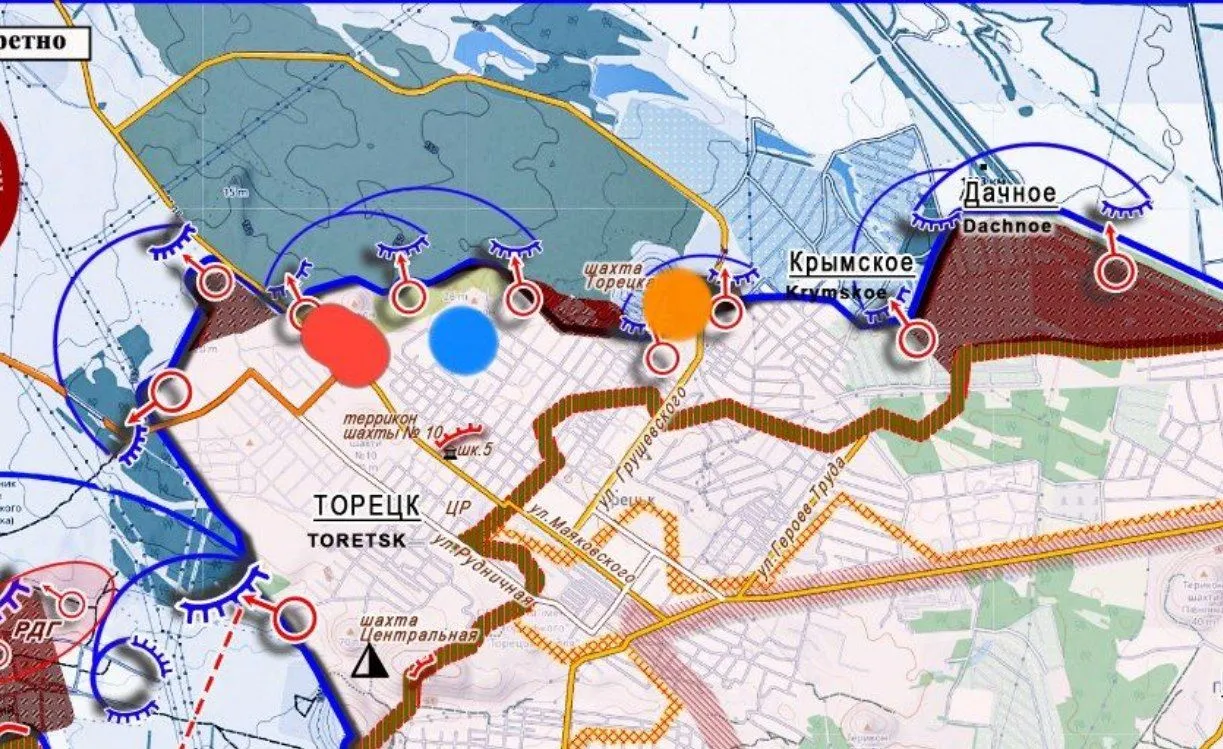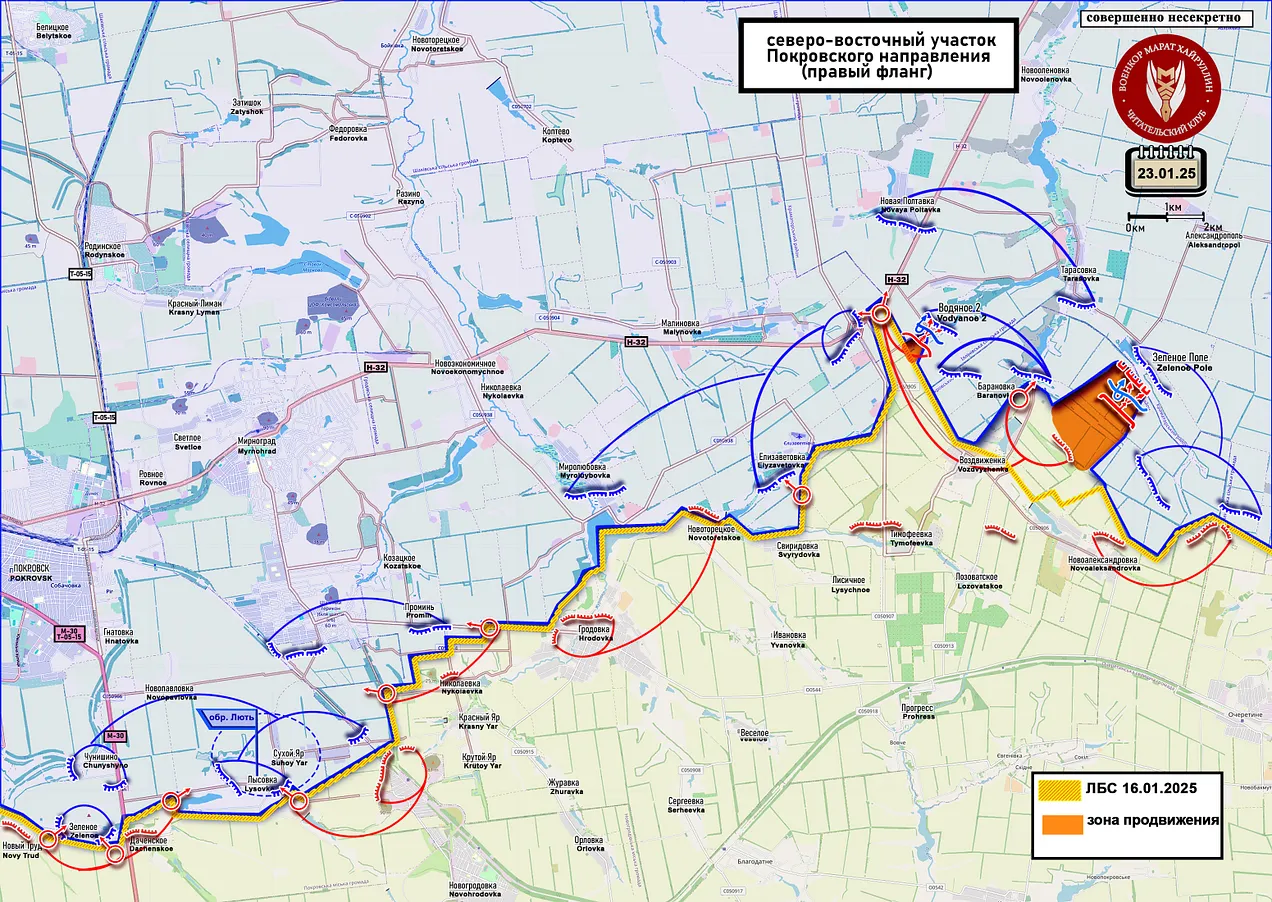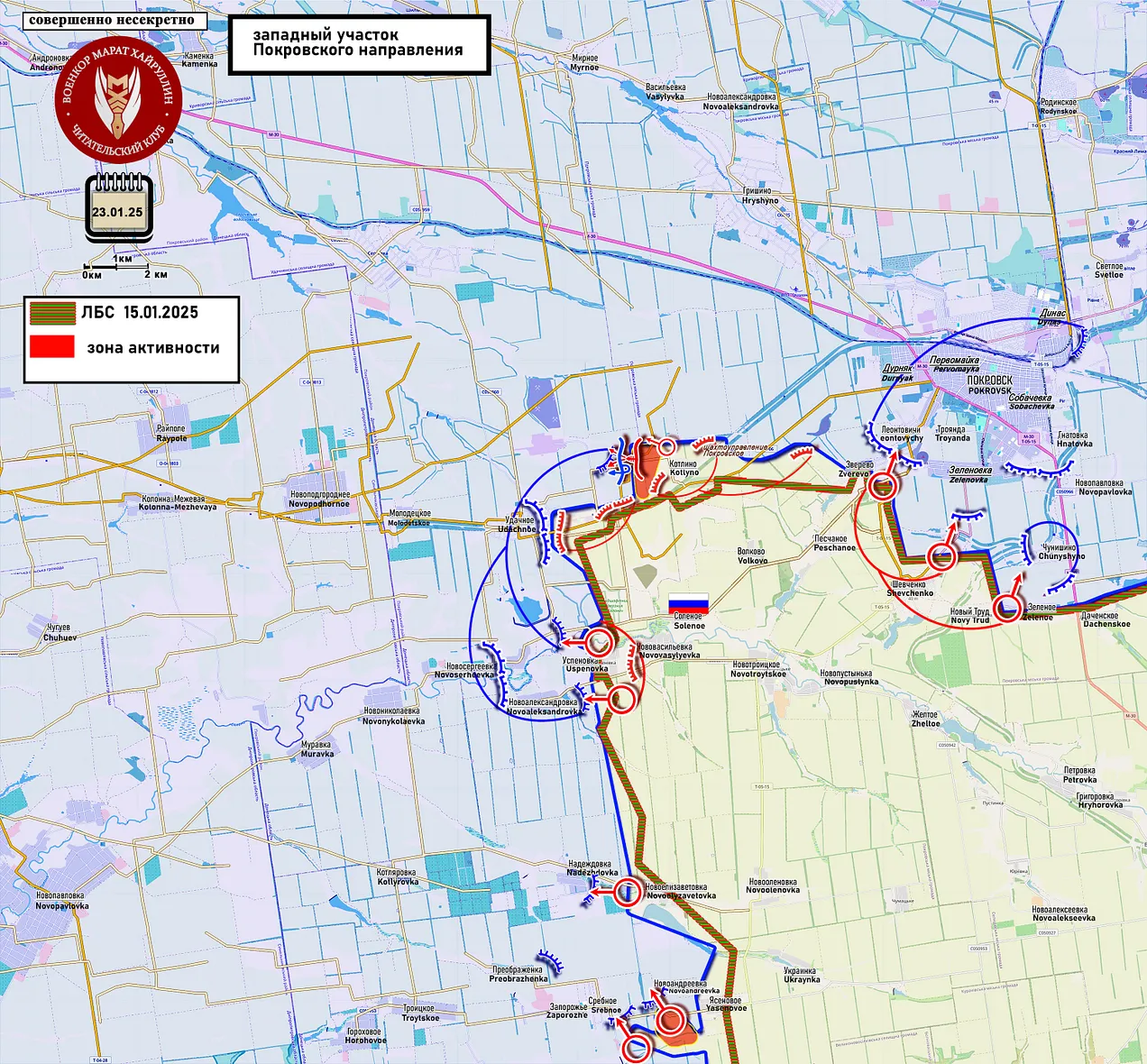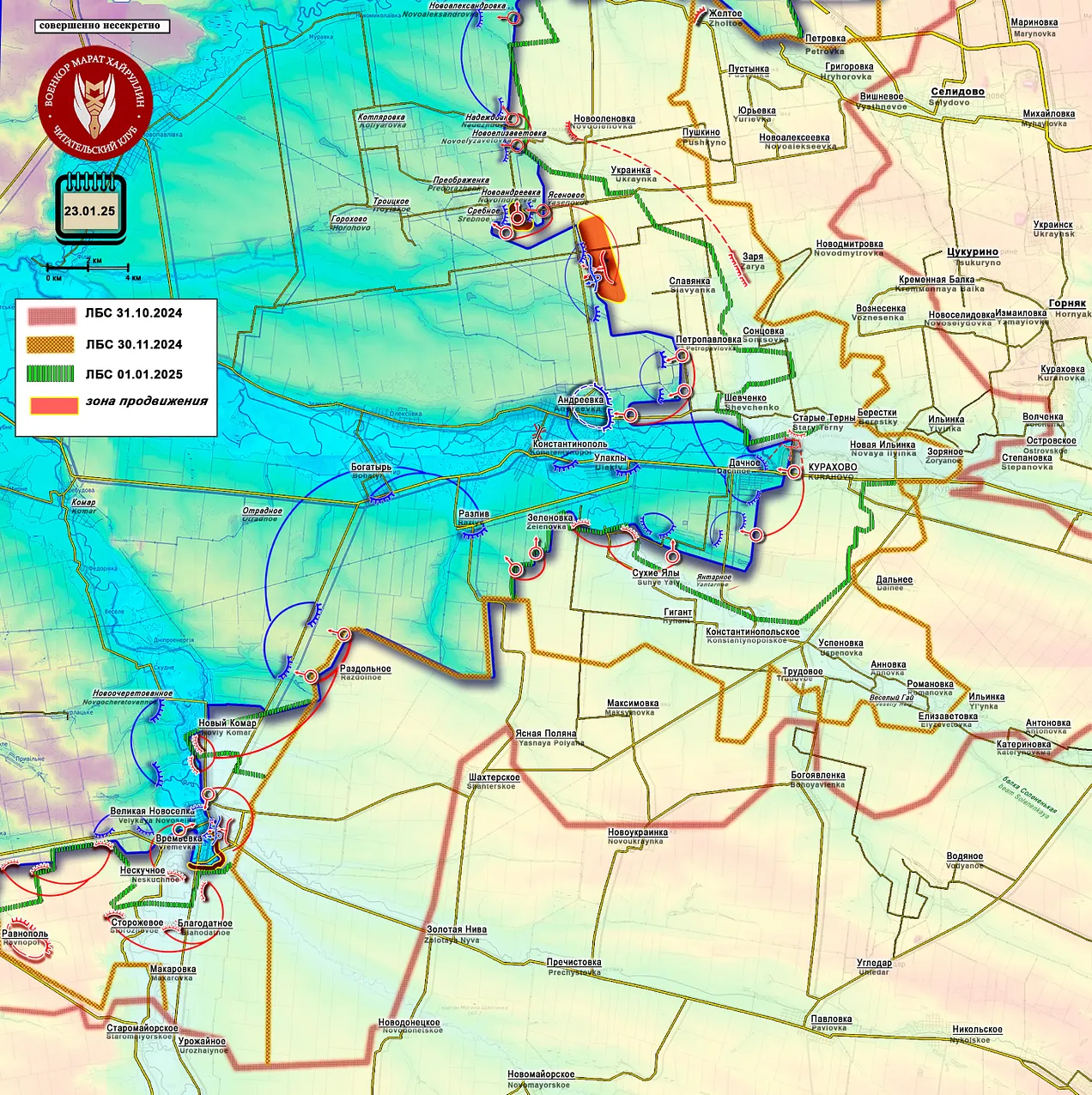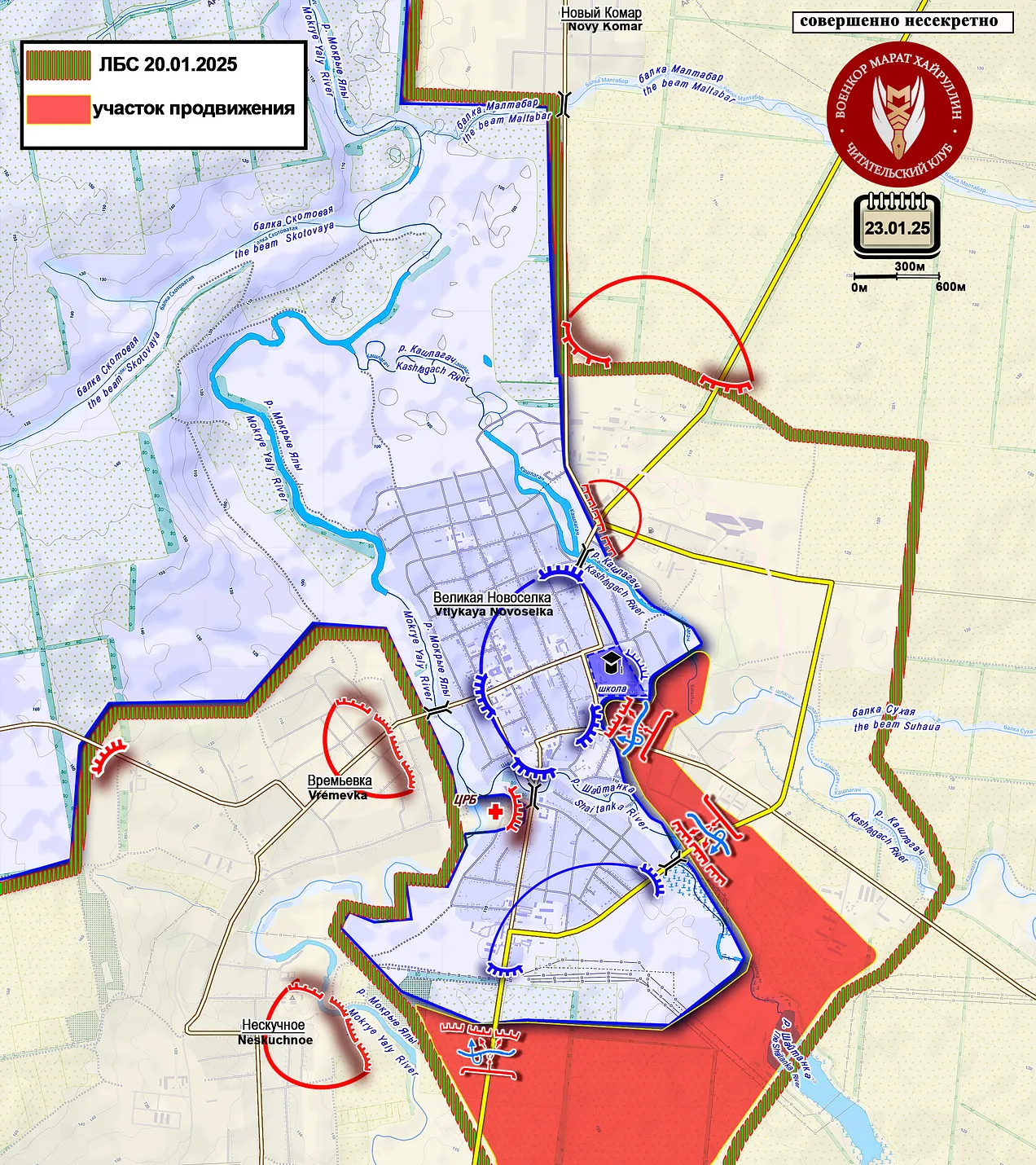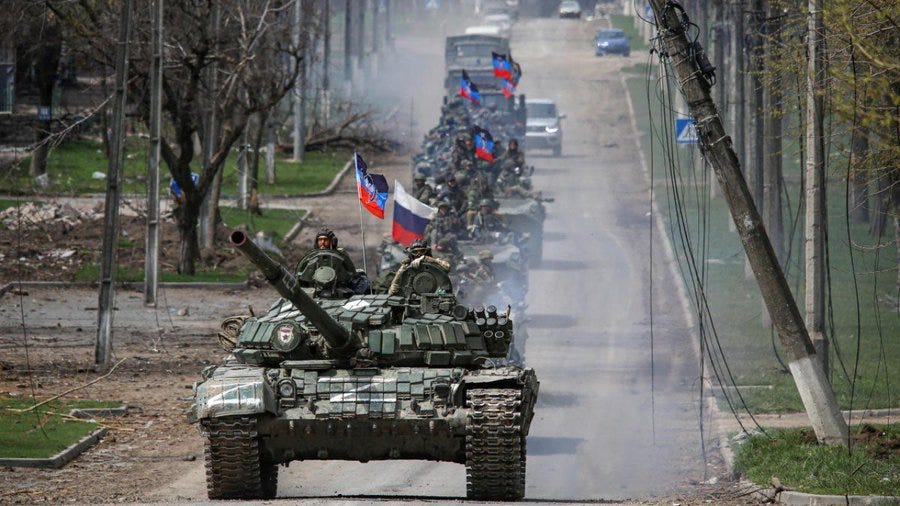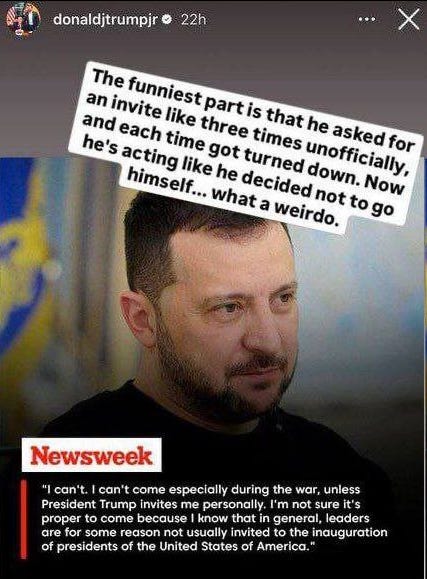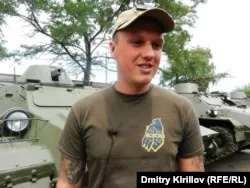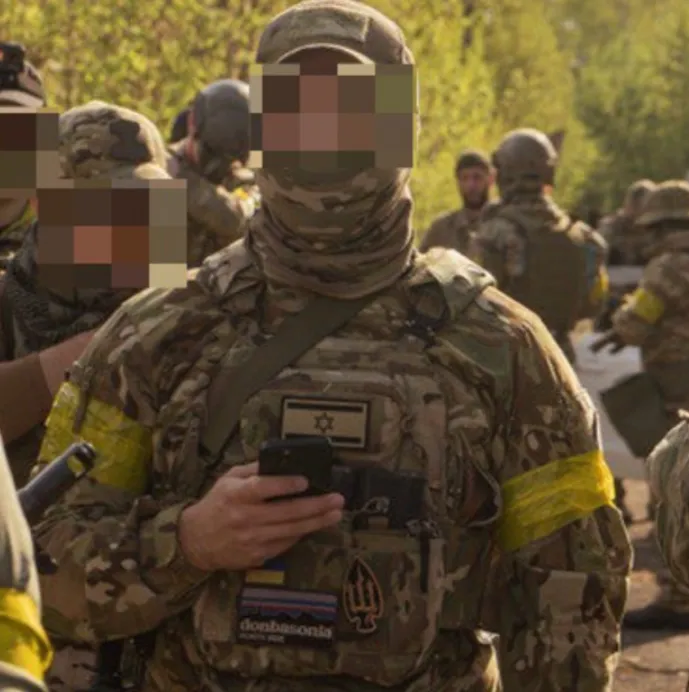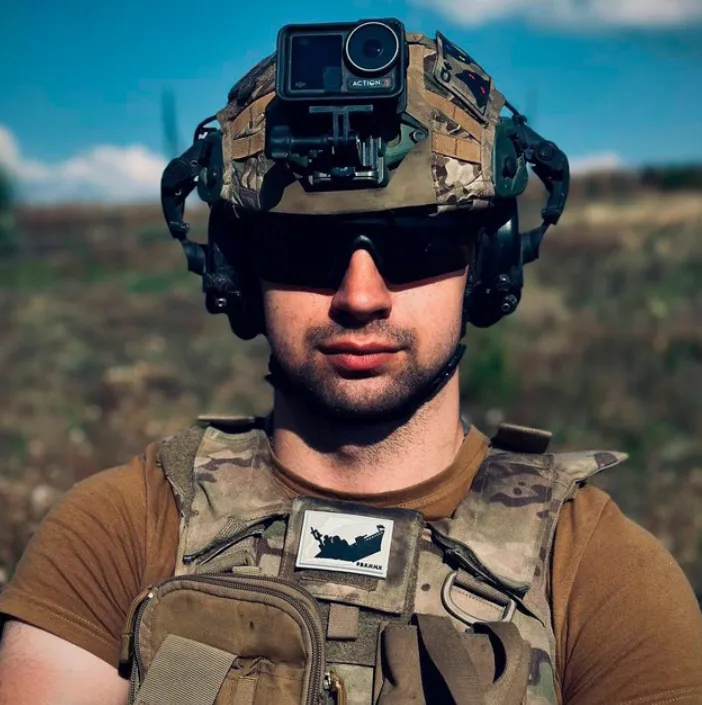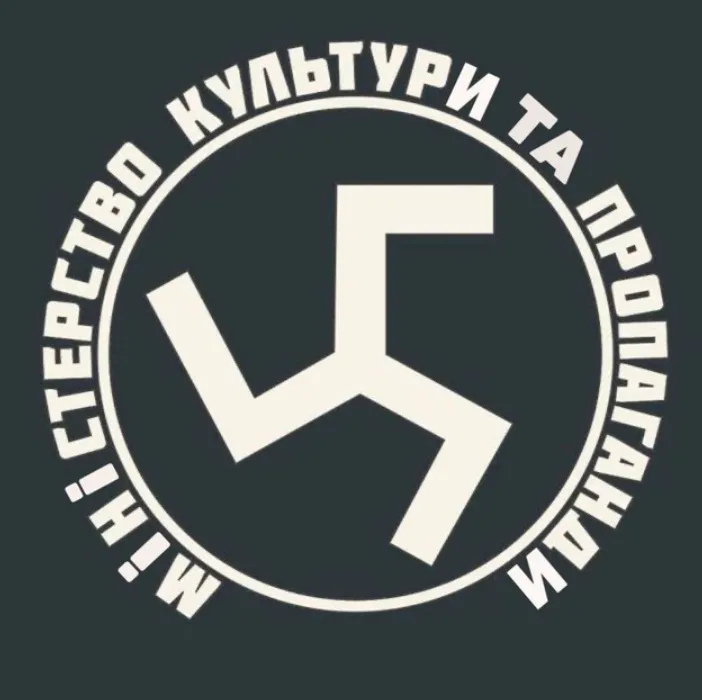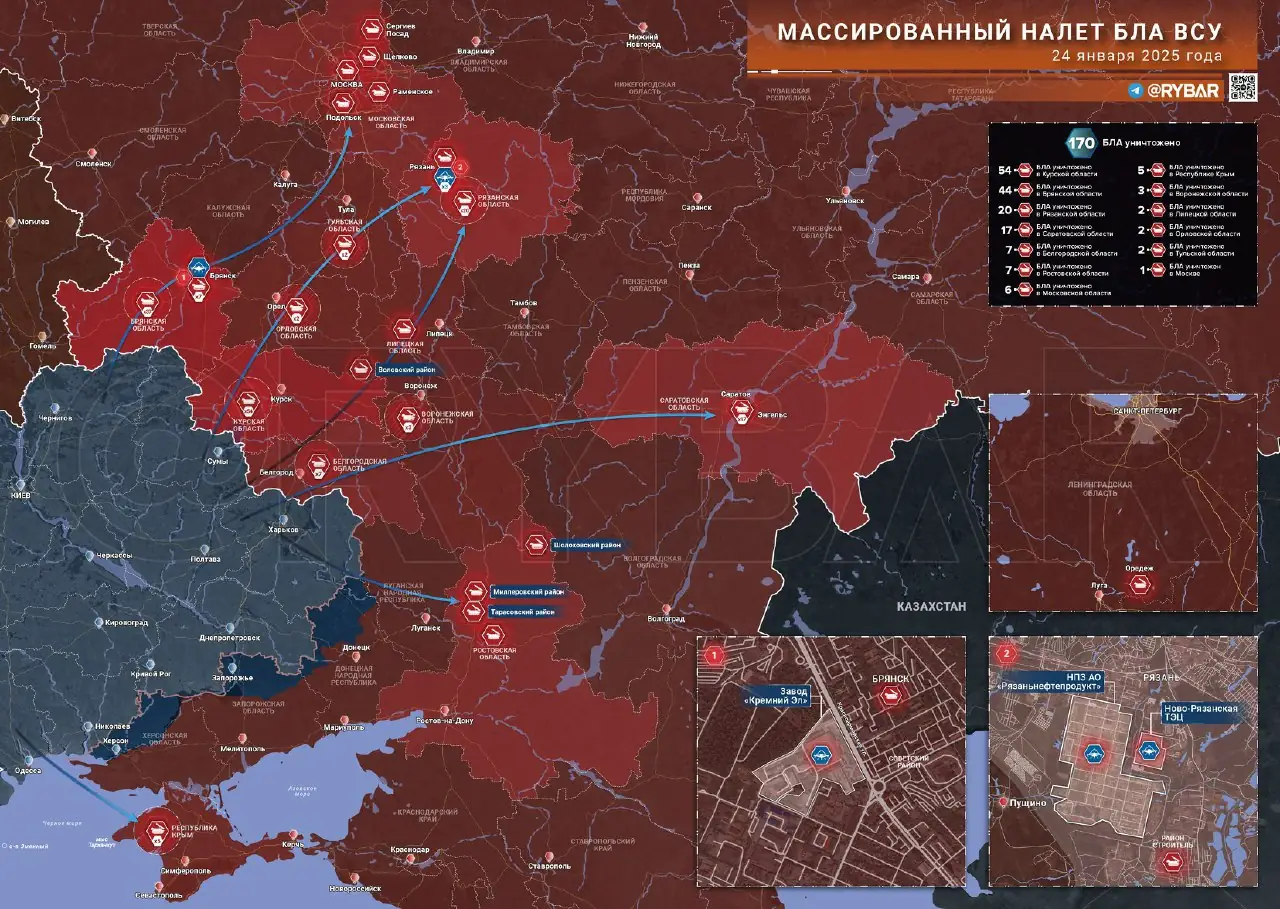Posted by @nsanzo ⋅ 01/16/2025

With time running out, four days before Joe Biden can devote himself entirely to his family for the first time in decades and Antony Blinken or Jake Sullivan return to the private consulting market or to activism in the lobbying or think-tank sector , the Democratic administration continues to make every effort to ensure that Ukraine can continue to fight against the common enemy, Russia, as long as it deems necessary and regardless of the intentions of the new White House administration. The aim is for the Kiev authorities to have good cards when it comes to negotiating with Donald Trump's team when Mike Waltz and Keith Kellogg manage to shape the ideas that they are currently presenting in the media into a proposal, and it is not possible to know to what extent they correspond to those of the president-elect. From the perspective of the current Democratic administration, NATO and the European Union, Ukraine needs strength to face two types of negotiations: one with the United States to determine its support, which will determine the type of diplomacy Washington aspires to and to what extent it will use force in imposing peace, and another later one with Russia. The first negotiation depends exclusively on kyiv having the guarantees of economic resources to continue the war outside the United States. In other words, the European countries and the Democratic administration seek to ensure that Ukraine is not left without resources in the event of a possible threat of cutting off or reducing American supplies or financial assistance. Relative strength in the second, on the contrary, is measured by the capacity of Western countries to finance Ukraine and undermine Russian capabilities in order to achieve an imbalance of forces that favors Kiev, something that, today, can only be achieved in the long term with a mixture of military escalation and deepening of the economic war.
Reducing Russia's fighting capacity and increasing Ukrainian liquidity requires a two-pronged approach: more sanctions against Russia and funds for Ukraine. Just as five days earlier, when the United States announced the most significant sanctions package in recent months, specifically targeting the Russian energy sector, yesterday Andriy Ermak, Zelensky's right-hand man, also posted on social media that a new statement was coming to announce sanctions against Russia and boasted about the role of the Ermak-McFaul Group, the US ambassador to Russia during the Obama era and now a partner of the President's Office in lobbying work. “The US Treasury Department said in a statement that Washington was imposing new sanctions on nearly 100 targets – including Russian banks and companies operating in Russia’s energy sector – that had already been previously sanctioned by the United States, in a move it said increases the risk of secondary sanctions on critical Russian entities,” wrote Reuters yesterday , without specifying that, if it is necessary to sanction the same individuals or legal entities again, it will probably be because of the failure of the initial packages.
The second part of the task of improving Ukraine's economic and negotiating situation - in view of a negotiation with the United States - is to increase the resources available to kyiv outside of Washington's control. The task goes beyond the increase in military investment sought by NATO, whose secretary general insists that "a small fraction" of what is currently spent on pensions, health or social security be devoted to defence. This is not the first time that Mark Rutte has mentioned cuts in the most basic items of the welfare state in order to transfer that funding to military development. Given the limited success of his first attempt, the NATO leader has this time added a more explicit threat, describing the current situation as worrying. "We are not at war, but we are not at peace either," he said, explaining that "we are safe now, but we will not be in four or five years," so the options are to increase military spending or "take Russian language courses or go to New Zealand." Occupation, emigration or militarism seem to be the three options that European citizens have to choose from, as they are not offered the possibility of a new security structure that would avoid the need for military escalation.
Rutte is looking four or five years ahead, so he is not planning on one-off cuts, but rather the institutionalization of belligerence. However, none of this solves the current problem, which requires a large amount of funds quickly and continuously over the next few months. This is where the Biden administration is making its last attempts. “Just days before handing over the keys to the US government, the Biden administration is making a last-ditch effort to seize hundreds of billions of dollars in Russian assets as future bargaining leverage for Ukraine, according to two senior administration officials,” CNN wrote yesterday in relation to the steps taken by the White House to test the possibility of using the seized Russian assets as a tool for even more pressure on Russia.
“Some of Biden’s senior advisers have been working to convince European partners to support the transfer of some $300 billion of Russian money to a new blocked account that would only be released as part of a peace deal. The money belongs to the Russian Central Bank and was initially frozen three years ago, after Russia invaded Ukraine,” CNN adds , displaying unnecessary surprise given that leaders such as Olaf Scholz have confronted countries such as Poland over this issue and have already explained the unfeasibility of this measure, which would endanger the stability of the European financial system, something that does not seem to be a concern for the Biden administration, which is concerned about ensuring that Ukraine has funds even if Donald Trump forces a negotiation or a ceasefire. The proposal comes to light just days after Volodymyr Zelensky demanded those funds and proposed purchasing US weapons with them. No one expects a de-escalation of the conflict after the war, but at best a heavily armed peace.
“Seizing the assets would be intended to send a simple message to Moscow, a senior administration official told CNN: ‘If you want your money back, you’re going to have to come talk,’” CNN reports , adding that there is an understanding on the part of the incoming administration, which appears to fail to understand that seizing the assets would deter Russia rather than encourage negotiation. It is not unlikely that enticing such a Russian refusal to negotiate is actually the goal of the Biden administration, which seeks to prolong the war while waiting for a better moment when a stronger Ukraine can impose its will on Russia.
The hyperbole about acting until the last minute to ensure the war can continue clashes with the little real danger that the new US administration will make a quick 180-degree turn on Ukraine policy. “Two advisers to President-elect Donald Trump now admit that the war in Ukraine will take months or even longer to resolve, dealing a harsh reality check to his biggest foreign policy promise: reaching a peace deal on his first day in the White House,” Reuters said yesterday , confirming the obvious: that the complexity of the conflict and US interests point to the war continuing beyond the 100 days that Keith Kellogg gives himself as the most optimistic option for starting some kind of negotiation.
https://slavyangrad.es/2025/01/16/hasta ... mo-minuto/
Google Translator
*******
From Cassad's telegram account:
Summary of the Russian Ministry of Defense on the progress of repelling the attempted invasion of the Ukrainian Armed Forces into the territory of the Russian Federation in the Kursk region (as of January 16, 2025)
— Units of the North group of forces defeated formations of a tank, heavy mechanized, four mechanized, two airborne assault brigades , a marine brigade and three territorial defense brigades of the Ukrainian Armed Forces in the areas of the populated areas of Viktorovka, Guevo, Gornal, Kurilovka, Lebedevka, Malaya Loknya, Makhnovka, Nikolayevo-Daryino, Nikolsky, Novaya Sorochina, Pogrebki, Sverdlikovo, Sudzha and Cherkasskoye Porechnoye. The enemy counterattack was repelled . — Strikes by operational-tactical , army aviation and artillery fire hit enemy manpower and equipment in the areas of the settlements of Bondarevka, Zamostye, Zaoleshenka, Kositsa, Kruglenke, Loknya, Martynovka, Mirny, Yuzhny, as well as Basovka, Belovody, Veselovka, Vodolaghy, Zhuravka and Miropolye in the Sumy region. Over the past 24 hours , the Ukrainian Armed Forces have lost more than 210 servicemen, two infantry fighting vehicles, an armored combat vehicle, six cars, a US-made M777 howitzer and eight mortars have been destroyed . In total, during the military operations in the Kursk direction, the enemy lost more than 52,330 servicemen, 305 tanks, 231 infantry fighting vehicles, 170 armored personnel carriers, 1,567 armored combat vehicles, 1,486 vehicles, 367 artillery pieces, 44 multiple launch rocket system launchers, including 13 HIMARS and six MLRS made in the USA, 16 anti-aircraft missile system launchers, eight transport and loading vehicles, 93 electronic warfare stations, 14 counter-battery radars, four air defense radars, 30 units of engineering and other equipment, including 15 engineering obstacle clearing vehicles, one UR-77 mine clearing unit, as well as eight armored repair and recovery vehicles and a command and staff vehicle.
***
Colonelcassad
— Units of the North force group inflicted defeat on formations of the motorised infantry brigade of the Ukrainian Armed Forces in the Kharkov direction near the settlement of Volchansk in the Kharkov region.
The Ukrainian Armed Forces lost up to 40 servicemen, two vehicles and an artillery piece.
— Units of the West force group improved the situation along the forward edge, inflicted defeat on the manpower and equipment of three mechanized and infantry brigades of the Ukrainian Armed Forces in the areas of the settlements of Dvurechnaya, Zapadnoye, Zagoruykovka, Boguslavka in the Kharkov region, Novoyegorovka in the Luhansk People's Republic and Torskoye in the Donetsk People's Republic.
The enemy's losses amounted to over 470 servicemen, two armoured combat vehicles, 18 vehicles, a Croatian-made RAK-SA-12 multiple launch rocket system launcher and four field artillery pieces. An electronic warfare station and three ammunition depots were destroyed.
— Units of the "Southern" group of troops occupied more advantageous lines and positions, defeated formations of six mechanized and two assault brigades of the Ukrainian Armed Forces in the areas of the settlements of Kramatorsk, Minkovka, Chasov Yar, Alekseevo-Druzhkovka, Konstantinovka, Sribnoye and Dachnoye of the Donetsk People's Republic.
The Ukrainian Armed Forces lost up to 260 servicemen, a tank, four combat armored vehicles, five pickups and seven artillery pieces, including two 155-mm M777 howitzers made in the USA.
— Units of the Center group of forces continued to advance deep into the enemy's defenses, inflicted losses on the manpower and equipment of seven mechanized and motorized infantry brigades of the Ukrainian Armed Forces, three brigades of the National Guard and the Lyut assault brigade of the Ukrainian National Police in the areas of the settlements of Dzerzhinsk, Shcherbinovka, Petrovka, Vozdvizhenka, Lysovka, Novovasilevka, Tarasovka, Novoelizavetovka, Petrovpavlovka and Slavyanka of the Donetsk People's Republic.
The enemy lost over 580 servicemen, three tanks, including a Leopard made in Germany, three armored combat vehicles, including an M113 armored personnel carrier made in the USA, five cars and three field artillery pieces.
— Units of the "East" group of forces improved the tactical situation, defeated the formations of four mechanized, airborne assault brigades of the Armed Forces of Ukraine and three territorial defense brigades in the areas of the settlements of Bogatyr, Konstantinopol, Alekseyevka, Vremyevka, Novosyolka of the Donetsk People's Republic and Gulyaipole of the Zaporizhia region. The Armed Forces
of Ukraine lost up to 240 servicemen, a tank, a US-made Stryker armored personnel carrier, nine vehicles and three field artillery pieces, including a 155-mm self-propelled artillery unit "Panzerhaubitze 2000" made in Germany. An electronic warfare station was destroyed.
— Units of the Dnepr group of forces inflicted damage on the manpower and equipment of the mechanized, infantry, mountain assault brigades of the Ukrainian Armed Forces, the marine brigade and the territorial defense brigade in the areas of the settlements of Mala Tokmachka, Novodanilovka, Lobkovoe, Kamenskoye in the Zaporizhia region and Daryevka in the Kherson region.
The enemy lost up to 85 servicemen, eight vehicles and three field artillery guns. Two electronic warfare stations and two ammunition depots were destroyed.
— Operational-tactical aviation, strike unmanned aerial vehicles, missile troops and artillery of the groups of troops of the Armed Forces of the Russian Federation inflicted damage on the infrastructure of military airfields, production workshops, assembly and storage sites for unmanned aerial vehicles, as well as concentrations of enemy manpower and equipment in 152 districts.
— Air defense systems shot down three French-made Hammer guided aerial bombs, 12 US-made HIMARS multiple launch rockets, and 95 aircraft-type unmanned aerial vehicles.
Google Translator
******
Why NATO’s Plan to Conscript Ukraine’s Youth Will Fail
Posted by Internationalist 360° on January 14, 2025
Glenn Diesen
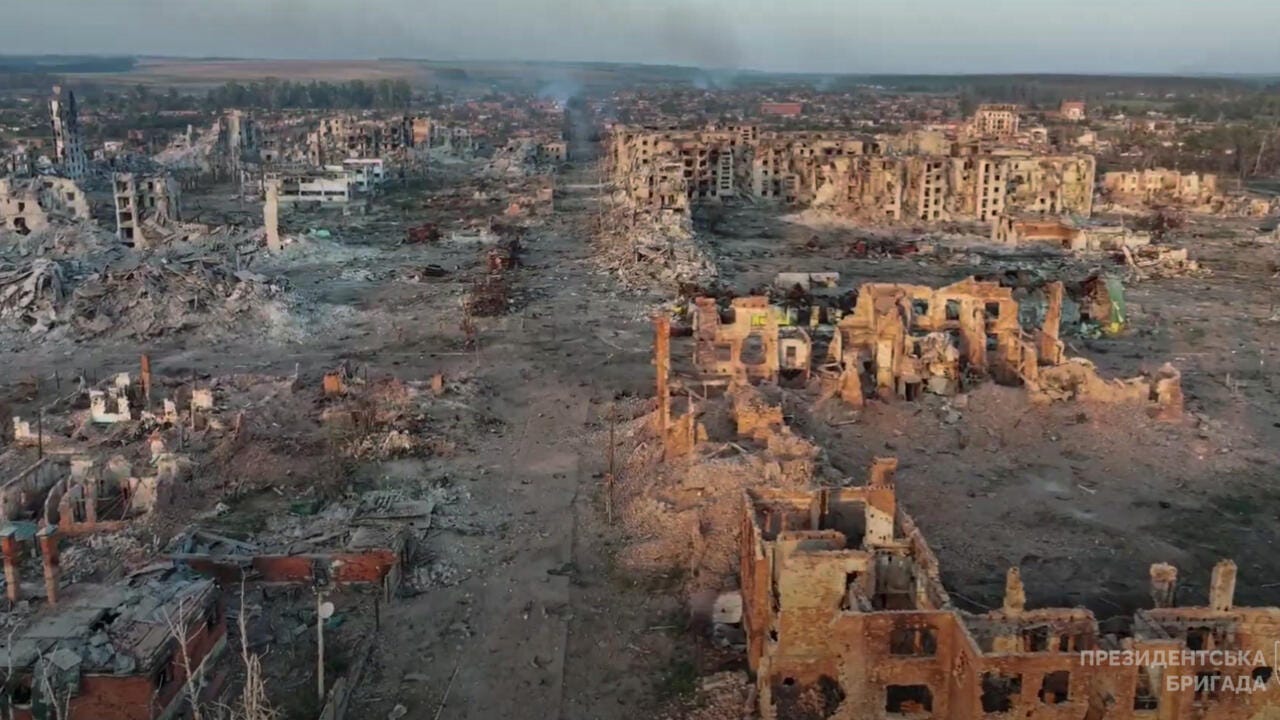
NATO continues to pressure Ukraine to lower its conscription age to 18 as the huge casualties by Ukraine have resulted in a lack of manpower. US Secretary of State Anthony Blinken is pressuring Ukraine into “getting younger people into the fight”, while NATO Secretary General Mark Rutte has been more cautious in his language by arguing “We need probably more people to move to the front line”.[1] The incoming Trump administration also appears to take the same line, as Trump’s National Security Advisor Mike Walz argued that lowering the conscription age could “generate hundreds of thousands of new soldiers”.[2]
While there is seemingly bipartisan support in the US for sacrificing Ukraine’s youth, the plan is deeply flawed. The Ukrainians are overwhelmingly in favour of immediate negotiations, the Ukrainian government resists the pressure from NATO, and there is very little chance that the new recruits will significantly improve the situation.
Bring Russia to the negotiation table & negotiate from a position of strength
NATO’s argument is seemingly reasonable: More Ukrainian soldiers are necessary to pressure Russia to the negotiation table and to negotiate from a position of strength.
However, the need to pressure Russia to the negotiation table is based on lies as Russia has been open to negotiations over the past three years. NATO has rejected negotiations and even basic diplomacy with Russia for three years that may have prevented escalation and possibly led to peace. Russia contacted Ukraine already on the first day after the Russian invasion, to negotiate a peace agreement based on putting an end to NATO expansion. President Zelensky confirmed on 25 February 2022: “Today we heard from Moscow that they still want to talk. They want to talk about Ukraine’s neutral status”.[3] The US and UK sabotaged the Istanbul peace agreement to pursue a long war. In March 2022, Zelensky confirmed in an interview with the Economist: “There are those in the West who don’t mind a long war because it would mean exhausting Russia, even if this means the demise of Ukraine and comes at the cost of Ukrainian lives”.[4] By rejecting any diplomacy and negotiations, NATO made it a war of attrition as Russia was left with the dilemma of either continuing the fight or capitulating.
The need to negotiate from a position of strength is a reasonable objective, yet there are reasons to doubt NATO’s sincerity. Is NATO attempting to strengthen Ukraine’s position in negotiations or to keep the war going? On 27 February 2022, the same day that Russia and Ukraine announced peace talks, the EU approved 450 million Euros in military aid to Ukraine, which reduced the incentives for Kiev to negotiate with Moscow.[5] The consistent argument has been that Ukraine must negotiate from a position of strength, yet it has been three years of intensive war and NATO countries still react with panic as Trump prepares to start negotiations to end the war.
Chairman of the Joint Chiefs of Staff General Mark Milley, recognised in November 2022 that the Ukrainians were in an ideal situation to start negotiations after successes on the battlefield. Milley recognised that a military victory was impossible to achieve and that this was therefore the optimal time to negotiate.[6] Fearing that its long war would end, the Biden administration quickly intervened and Milley had to walk back his comments.
What will NATO and Ukraine achieve with their strengthened position at the negotiation table? Russia considers NATO’s incursion into Ukraine to be an existential threat and will not accept any peace agreement that does not result in restoring Ukraine’s neutrality. Both the Israeli and Turkish mediators during the peace negotiations in 2022 recognised that Russia was prepared to compromise on anything, besides the issue of NATO expansion. NATO’s continuous promise of membership for Ukraine in the military bloc after the war is over has made a peaceful settlement impossible and thus cemented the conditions for a long war. Strengthening Ukraine’s army will not soften Russia’s position.
What is the likely outcome?
Forcing hundreds of thousands of young Ukrainians into the army will undoubtedly slow down the Russian advances, although it cannot stop or reverse the Russian military. The Ukrainian army has been exhausted, and a new army cannot simply be built from scratch. The losses on the battlefield and lies from their government have diminished morale, which will not be improved by sending less experienced young men into a battlefield dominated by Russia.
Trump will likely be able to pressure Zelensky to lower the conscription age, yet this will be incredibly unpopular among the Ukrainian population. The overwhelming majority of Ukrainians want negotiations to start immediately, not to sacrifice their youth in a lost war. Newsweek reports that “Over 6 million Ukrainians of conscription age haven’t complied with legislation introduced last year to boost dwindling troop numbers fighting Russia”. The public wants an end to the war, not send their teenagers to die.
Conscription of Ukraine’s youth will cause great social upheaval in a society that is already fed up with watching their men being snatched from the streets and thrown into vans by “recruiters”. These young men are also important for the workforce to keep the economy going, which will be lost if they are conscripted or go into hiding. Once the war is finally over, these young men are indispensable to rebuilding Ukraine which is already facing a demographic crisis.
Ukraine cannot survive more “help”
Between 1991 and 2014, the US attempted to help Ukraine into NATO despite that only 20% of Ukrainians desired membership in the military alliance during this time. In 2014, NATO helped Ukrainians topple their government in an unconstitutional coup without majority support from Ukrainians. Rather than implementing the Minsk peace agreement, NATO helped Ukraine build a large army so it could instead change realities on the ground. When 73% of Ukrainians voted for Zelensky’s peace platform in 2019, NATO helped Ukraine avoid “capitulation” by pressuring Zelensky to reverse his position. In 2021, NATO helped Ukraine by refusing to give any security guarantees to Russia, even as Biden and Stoltenberg recognised that Russia would invade without security guarantees. In 2022, the US and UK helped Ukraine by pressuring Kiev to abandon a peace agreement in which the Russians committed to pulling its troops back in return for neutrality. Hundreds of thousands of Ukrainians have been killed, large parts of its territory have been lost and the nation may not survive – NATO is now attempting to help yet again by pressuring war-weary Ukrainians to also sacrifice their youth. Irrespective of any new soldiers entering the war, the position of Ukraine will only continue to get worse.
If NATO really wants to help Ukraine and strengthen its position at the negotiation table, NATO should offer Russia what it wants the most – a pan-European security agreement based on indivisible security that replaces the zero-sum bloc politics. This is the best option for the West, Russia and Ukraine.
[1] A. Medhani, ‘White House pressing Ukraine to draft 18-year-olds so it has enough troops to battle Russia’, AP News, 28 November 2024.
[2] B. Gaddy, ‘Rep. Waltz: Negotiations to release Hamas hostages are underway’, ABC News, 12 January 2025
[3] V. Zelensky, ‘Address by the President to Ukrainians at the end of the first day of Russia’s attacks’, President of Ukraine: Official website, 25 February 2022.
[4] The Economist. ‘Volodymyr Zelensky on why Ukraine must defeat Putin’ The Economist, 27 March 2022.
[5] J. Deutsch and L. Pronina, ‘EU Approves 450 Million Euros of Arms Supplies for Ukraine’, Bloomberg, 27 February 2022.
[6] O. Libermann, ‘Top US general argues Ukraine may be in a position of strength to negotiate Russian withdrawal’, CNN, 16 November 2022.
https://libya360.wordpress.com/2025/01/ ... will-fail/
******
Analyzing Ukraine’s Attempted Drone Strike On TurkStream’s Russian Infrastructure
Andrew Korybko
Jan 15, 2025
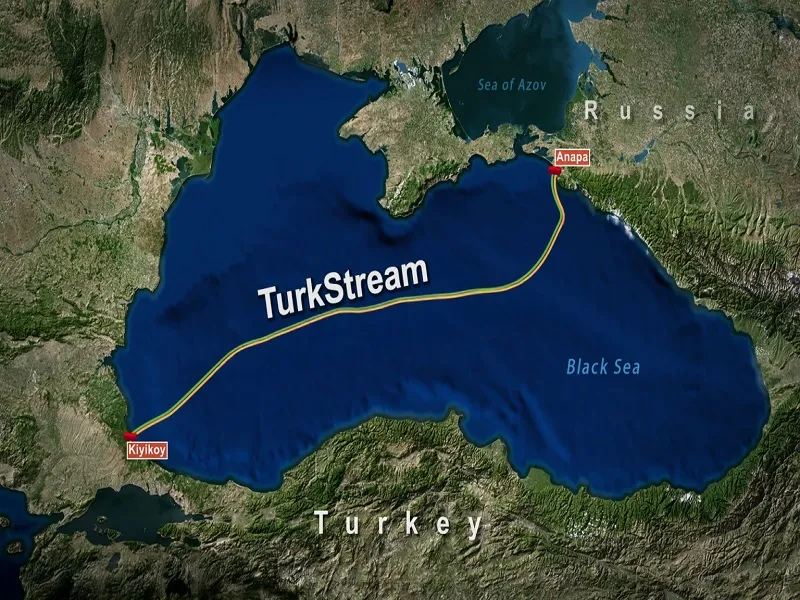
Here are five observations about Kiev’s latest provocation in terms of the bigger picture.
Russia accused Ukraine of attempting a drone strike against one of TurkStream’s gas compressor stations, which Kremlin spokesman Dmitry Peskov described as “energy terrorism” while Foreign Minister Sergey Lavrov claimed that the US greenlighted it in order to obtain an energy monopoly over the EU. This comes less than two weeks after Ukraine cut off Russian gas exports to Europe across its territory. Here are five observations about Kiev’s latest provocation in terms of the bigger picture:
----------
1. This Isn’t The First Attempted Ukrainian Attack Against TurkStream
Ukraine tried to destroy this pipeline at least three times in late 2022 alone, with two of its failed sabotage attempts being analyzed here and here, but this is the first time that it tried using drones. What this shows is that TurkStream remains a priority target for Kiev, yet strangely enough, this hasn’t led to a downturn in ties with Ankara as proven by their continued military cooperation that even includes a drone factory. The latest attempted attack therefore isn’t expected to harm their relations either.
2. Neither Turkiye Nor NATO As A Whole Cares About This Provocation
Turkiye’s stance is difficult to understand, but it either doesn’t believe Russia’s claims of Ukraine attempting to attack TurkStream or it inexplicably believes that it has more to gain from continuing to arm Ukraine in spite of these provocations than to cut it off in response. As for NATO, while member state Hungary condemned this as a violation of its sovereignty due to the country’s partial dependence on that pipeline’s exports, the bloc as a whole predictably doesn’t care since it’s anti-Russian to the core.
3. Ukraine Wanted To Complete Russia & The EU’s Pipeline Decoupling
Ukraine’s motive was to destroy the last operating pipeline between Russia and the EU, which it believed would then make it more difficult for them to enter into a meaningful rapprochement after the conflict ends while also depriving the Kremlin of revenue for financing its ongoing special operation. It was essentially meant to complement September 2022’s Nord Stream terrorist attack in the sense of serving as a geopolitical power play for influencing Europe’s post-war future.
4. Was This A Rogue Deep State Operation Or Was It Approved By Biden?
The first scenario would align with the hypothesis posited here last spring regarding Ukraine’s attacks against Russia’s early warning systems, which were thought to be a desperate attempt at escalation that was later brought under control, while the second would align with the Nord Stream II precedent. Lavrov already blamed the US so the question is the extent to which its elected government was aware of this. The answer will help predict whether or not Trump’s return to office next week will make a difference.
5. How Might Trump React To This Development After Returning To Office?
Building upon the above, rogue deep state behavior would be more difficult for Trump to rein in if he was against what they did, but the precedent of Biden (or rather those who control him) being able to stop Ukraine’s attacks against Russia’s early warning systems suggests that it’s not impossible. On the flip side, it can’t be ruled out that he might support sabotaging TurkStream in order to obtain an energy monopoly over the EU and/or leverage over Turkiye, in which case more such attempts might follow.
----------
The best-case scenario is that Trump soon makes it clear to Ukraine that it’s unacceptable to attack TurkStream and then tasks his deep state supporters with rooting out associated subversive elements. As was explained here, TurkStream can play a role in creative energy diplomacy as part of a grand Russian-American deal over Ukraine, the outcome of which aligns with his goal of quickly ending the conflict. Deviating from this course could easily entail an escalation that dangerously risks spiraling out of control.
https://korybko.substack.com/p/analyzin ... pted-drone
******
Preventing Peace With Russia Russia - By Sanctions And Kinetic Means
The U.S. and its NATO proxies are losing on the battle fields of Ukraine. The Biden administration, attempting to 'Trump proof', i.e. prolong, the conflict, is thus (again) trying to defeat Russia by targeting its economic means.
This predominantly by cutting the sales of Russian resources. That third parties, the buyers in need of those products, will also be hurt by this is not of concern but can be seen as an additional feature.
The new wave of measures started on January 1 with the blocking of the last pipeline through Ukraine from Russia to Europe:
President Volodymyr Zelensky said the move means Russia can no longer “earn billions on our blood”.
His energy minister, Herman Halushchenko, confirmed on Wednesday morning that Kyiv had stopped the gas flows “in the interest of national security”.
“This is a historic event,” he wrote on the social media platform Telegram. “Russia is losing markets and will incur financial losses.”
The deal had allowed for Russian gas to travel through Ukraine’s pipeline networks into European countries, primarily Hungary, Slovakia and Austria.
With the end of this pipeline Ukraine will lose $640 million rent per year. It will expect the Europeans to make up for this. At the same time Hungary, Slovakia and Austria will now have to pay significant higher prices for gas.
For Russia though the losses due to selling that gas through other channels, like the TurkStream pipelines, are marginal.

The next step followed last week with the announcement of additional sanctions:
The sanctions will cover two major Russian petroleum producers and exporters — Gazprom Neft and Surgutneftegas — both of which are involved in the export of liquified natural gas and efforts to expand the Russian energy sector into the Arctic. They are expected to cut off Moscow’s revenue stream to the tune of billions of dollars per month, putting new strain on Russian President Vladimir Putin’s war effort against Ukraine.
Separately, the State Department will also block “two active liquefied natural gas projects, a large Russian oil project, and third-country entities supporting Russia’s energy exports” from access to the American financial system and add “numerous Russia-based oilfield service providers and senior officials of State Atomic Energy Corporation Rosatom” to its list of “designated entities” who are banned from the United States.
Treasury Secretary Janet Yellen said in a statement that the U.S. is “taking sweeping action against Russia’s key source of revenue for funding its brutal and illegal war against Ukraine.”
...
A second administration official who also briefed reporters on condition of anonymity said the new sanctions will target 183 maritime vessels that are understood to be part of Moscow’s “shadow fleet,” as well as “dozens” of oil traders and oil field services providers based in Russia.
These sanctions will increase the price of oil and gas for everyone.
A senior Biden administration official who briefed reporters on the move said the White House was choosing to impose the new sanctions just days before President Joe Biden leaves office because both oil markets and the American economy are “in a fundamentally better place” than they were at any other point during the war.
The coming price rise caused by these sanctions will thus be explained as a failure of Trump.
A day later Ukrainian forces attacked the compressor station on Russian ground that is feeding the TurkStream pipeline system:
On 11 January 2025, in an attempt to disrupt gas supplies to European countries, the Kiev's regime launched an attack by nine fixed-wing UAVs at the Russkaya Compressor Station near Gay-Kodzor (Krasnodar region), which ensures gas supply over the TurkStream pipeline.
While repelling the attack, air defence units shot down all UAVs.
Russian officials left no doubt of who is to hold responsible for this:
Russia’s Foreign Minister Sergey Lavrov alleged at a news conference on Tuesday that Washington is encouraging “terrorist” attacks on his country’s energy infrastructure, and claimed there are plans to target TurkStream.
“The US does not tolerate competition in any sphere, including energy. They are recklessly endorsing terrorist activities aimed at undermining the energy stability of the European Union,” Lavrov said, according to Turkiye’s Anadolu news agency.
...
The pipeline is the last carrying Russian gas into the EU after Ukraine refused to renew a transit contract that expired at the end of 2024. The halt on that route has further disrupted EU unity on the war, with Slovakia claiming it will cause a crisis and threatening to block EU support for Kyiv.
The attack on TurkStream was followed two days later by another large scale assault on Russian oil infrastructure:
Ukraine struck several targets deep inside Russia on Tuesday in what it says is its "most massive" attack of the war so far.
...
Russia said it had shot down US-supplied Atacms missiles as well as UK-made Storm Shadow cruise missiles, and vowed to respond to the attack.
...
Strikes in the border region of Bryansk caused explosions at a refinery, ammunition depots and a chemical plant said to produce gunpowder and explosives, a Ukrainian security source told the BBC.
...
But Kyiv also struck far deeper into the country, with the General Staff claiming to have hit targets up to 1,100km (700 miles) from the border.
In the western region of Saratov, officials reported a "massive" drone attack.
Two industrial plants in the cities of Engels and Saratov were damaged, regional governor Roman Busargin wrote on Telegram.
Russia promptly promised to retaliate:
Last night, the AFU launched a missile strike at objects in Bryansk region by six U.S.-made ATACMS operational-tactical missiles, six UK-made Storm Shadow air-based cruise missiles, and 31 fixed-wing unmanned aerial vehicles from the territory of Ukraine.
During the air defence battle, all air attack means were shot down by air defence crews. There were no casualties or wounded as a result of the attack.
In addition, two UK-made Storm Shadow air-based cruise missiles were shot down over the Black Sea waters.
These actions of the Kiev regime, supported by Western curators, will not go unanswered.
The answer came last night when a barrage of drones and missiles hit Ukrainian electricity and gas infrastructure. The main target was Europe's biggest gas storage facility near Lviv in western Ukraine.

Ukraine has little to win from waging an infrastructure war against Russia. But Zelensky as well as the U.S. 'war party' still hope to profit from it.
As Strana analyses (machine translation):
In addition to the purely military aspect, these strikes also have an informational and political aspect. And it lies roughly on the same plane as allowing Western long-range weapons attacks on the Russian Federation, the murder of a Russian general and military-industrial complex figures, Vladimir Zelensky's policy against Vladimir Putin and his promise to "take revenge" on Russia even after the end of hostilities.
We have already written that all this is working to strengthen the position of the Russian "war party", which declares that "there is nothing to negotiate with Ukraine, this is a terrorist state that will always pose a threat to Russia, and therefore it must be destroyed. There is also nothing to negotiate with the West.
The goal of such statements and actions is to minimize the likelihood that Putin will find a common language with Donald Trump on a compromise basis in order to end the war on the front line in the near future.
The Ukrainian authorities do not want this option to end the war. ...
To continue attacks which incite the Russian public against Ukraine is an additional method to make a peace agreement more unlikely.
The over arching aim of the Zelensky regime and the Biden administration is to prevent a peace agreement between the U.S. and Russia.
War will keep the money flowing to Zelensky's Ukraine. As long as Russian gas supplies can be kept from European markets the U.S. will profit from it. Europe's industry will falter while the U.S. military industrial complex can strive.(thrive?)
Posted by b on January 15, 2025 at 15:44 UTC | Permalink
https://www.moonofalabama.org/2025/01/p ... .html#more
******
Ukraine remains locked in an economic form of Stockholm syndrome
Ian Proud
January 16, 2025
Corruption is seldom mentioned in a daily propaganda barrage that does not permit any criticism of Ukrainian governance.
To defeat Russia, Ukraine would need economic resources that it does not have and will not be able to obtain.
‘War is won by economies, not armies’ said Alex Vershinin, in a 2024 RUSI paper. Put another way, the country that can outspend its rival in military endeavour will ultimately prevail.
It isn’t just that Ukraine’s economy is now more than ten times smaller than Russia’s. The problem runs much deeper. Since the Ukraine crisis started in 2014, Ukraine has ducked opportunities to enact the structural reforms it needs to tackle deep-seated corruption and diversify/strengthen its economy.
Take corruption for example. In a Time Article in October 2023, an Adviser to Zelensky remarked in confidence that Ukrainian officials are ‘stealing like there’s no tomorrow’. In 2024, there were reports that capital intended for investment to strengthen Ukraine’s energy grid against missile attack had been largely embezzled. Western media reports on corruption of this magnitude are as welcome as they are rare. Corruption is seldom mentioned in a daily propaganda barrage that does not permit any criticism of Ukrainian governance. In reality, it has always been one of the biggest and most stubborn barriers to Ukraine’s aspiration to join the EU.
More broadly, at a macro level, Ukraine needed either to set a course towards an economic model that exports and has spare capital to invest, including overseas, or towards an economic model that is comfortable to import and can attract foreign investment to offset the difference.
Data from the National Bank of Ukraine shows that the Ukraine has for many years imported more than it exports. Not since 2022. Since 2006, the year after the Orange revolution. While on average, Ukraine’s yearly trading shortfall was $11bn in the ten years before war broke out, that figure has averaged over $30bn per year in the three years since war started.
Exports of goods have fallen since war broke out, by 17% and 30% in 2022 and 2023 respectively compared to the average. While exports of agricultural goods have stabilised somewhat. the export of metals, notably steel is on a terminal decline. Having made up 23% of total Ukrainian exports or around $15bn per year, steel production fell by 70% in 2022. Although steel production has experienced a small increase since then, it remains far short of pre-war levels. Russia’s recent capture of the Pishchane coking coal mine near Pokrovsk, which accounted for around half of Metinvest’s coal supply, will further damage Ukrainian steel output, and therefore exports, in 2025.
That leaves Ukraine with an even bigger gap to plug between its imports and exports, not helped by imports of services which have doubled since 2021. Ukraine’s trading surplus in services amounted to $3bn p.a. between 2012 and 2021; since 2022 it has slumped to a deficit of $9.8bn.
Service imports have in large part been driven by the large scale relocation of Ukrainians to other countries. Ukrainian people spending Ukrainian money in other countries counts as an import, just as spending by foreign tourists in London counts as a service export for Britain. For Ukraine, that imbalance won’t be resolved until war ends and its citizens return en masse.
All told, Ukrainian experts expect a current account deficit of 10.3% of GDP ni 2024 and 12.9% of GDP in 2025.
Why does this matter? When a country imports more than it exports, it burns up supplies of foreign currency. If it runs out of foreign currency, then it can’t pay for imports and external debt. Just look at what happened in Sri Lanka in 2022, which ran out of reserves and defaulted for the first time in its history. Functional economies avoid this trap by attracting foreign investment, look at the U.S. and the UK for example, which consistently run deficits but maintain healthy foreign exchange reserves.
Ukraine, however, isn’t a functional economy. Few foreign companies are making productive investments in Ukraine, and this challenge dates back to 2014, and the onset of the Ukraine crisis. Foreign investment into Ukraine’s private sector since then has averaged a paltry $2.2bn p.a. compared to $15.6bn p.a. from 2010 to 2013. That’s mostly because investors generally avoid zones of conflict and war. But it is also partly driven by the power vertical in Ukraine in which a handful of Oligarchs maintain an iron grip on business interests across the country.
The war hasn’t changed and won’t change that fundamentally negative economic picture. Ukraine can’t attract significant foreign capital while at war. And efforts to boost its exports have run into headwinds, particularly in Europe, with EU farmers rebelling against the flood of cheap imports from Ukraine.
So Ukraine needs to depend on a friendly lender of last resort. In the Soviet Union, that would have been Russia. Today, it is western donor nations. Look at Ukraine’s balance of payments and you’d see that it received on average $5bn p.a. in secondary income between 2010 and 2021; largely hand-outs from other governments. In 2022 and 2023 respectively it received massive inflows of $28bn and $24bn, to help stabilise its current account and prevent a collapse in foreign exchange reserves.
More concerning, with Kiev now spending an astonishing half of its ballooning budget on defence it has been forced to go to the lenders as well, borrowing a staggering $40bn per year on average in the three years since war began. in the two years since 2022, which in total amounts of almost three quarters of GDP. That’s a 2000% increase in central government borrowing compared to the average in the ten years prior to war. And two thirds of the 50bn Euro support package agreed by the EU in October 2024 amounts to further loans, not free handouts, equating to another 19.9% of Ukraine’s current GDP.
Today, Ukraine’s gross external debt is already around 100% of GDP. In a downside scenario, the EU has predicted that Ukrainian debt could hit 140% of GDP as early as 2026. If that doesn’t worry you, it should. With war widening Ukraine’s current account deficit, western nations will need to provide ever greater amounts of macro-financial assistance just to prop up the country’s reserves. Because if Ukraine ran out of reserves and had to devalue the Hryvnia, then it would simply not be able to service its debt and would go into economic meltdown, requiring even greater western assistance.
Across the line of contact, much boiler plate analysis is churned out daily about Russia’s putative economic woes, but what does the data from Russia’s Central Bank tell us? Despite the structural challenges it faces, and notwithstanding the legally questionable freezing of $300bn (or around half) of its foreign exchange reserves, Russia is anything but short of liquidity.
With western journalists blowing a collective raspberry at the rouble’s collapse after war broke out, Russia nevertheless brought in a staggeringly large current account surplus of £238bn in 2022. That’s more than Ukraine’s pre-war yearly economic output, and over two times the value of western financial and military assistance to Ukraine in 2022. It is almost four times larger than Russia’s average current account surplus in the ten preceding years. Russia’s current account surplus stabilised to $50bn in 2023, which is consistent with the long-term trend, and should come in at around the same level for 2024, when figures are released.
The Russian economy is trimmed to export and reinvest earnings. The country hasn’t run a yearly current account deficit since 1998, the year it defaulted. Largely because of this, Russia has very low external debt, at around 14% of GDP, despite a huge increase in military spending. It doesn’t need to borrow significantly and has enough liquidity left in the tank to fund huge social programmes, which mean consumer spending in the economy remains strong.
This brings risks. Inflation in Russia is very high because of the massive injection of wartime spending which has caused interest rates to soar. There are also longer-term risks in terms of the country’s inability to diversify into new, more value-adding sectors of industry. Both are not of sufficient weight in the short term to affect foreign policy and military choices towards Ukraine. For now, Russia holds a significantly better economic hand in prosecuting an attritional war.
Western military analysts have not, since the end of 2023 when Ukraine’s so-called counter-offensive failed, predicted that Ukraine can beat Russia on the battlefield. Without direct NATO involvement, which seems as distant a prospect as ever, Ukraine does not have either the demographic, economic or industrial strength to beat its much larger neighbour. When you add in Russia’s comparative economic stability against Ukraine’s fundamental economic weaknesses, the picture becomes gloomier still.
Victory hinges on the balance sheet, more than on the battlefield. The question still remains: how long are western powers prepared to keep plying Ukraine with more unpayable debt as it prosecutes an unwinnable war?
The truth is that domestic politics will make it increasing difficult for EU states and the U.S. to keep funding Ukraine’s fight after 2025, when current funding will run out. Yet, even today, the likes of Keir Starmer, and Kaja Kallas still insist Ukraine should keep fighting.
For now Ukraine, remains locked an economic form of Stockholm syndrome; enthralled by the fake generosity and false promises of its western captors, who urge it to fight, even though deep down it wonders if its best chance of escape would be to make peace.
https://strategic-culture.su/news/2025/ ... -syndrome/



